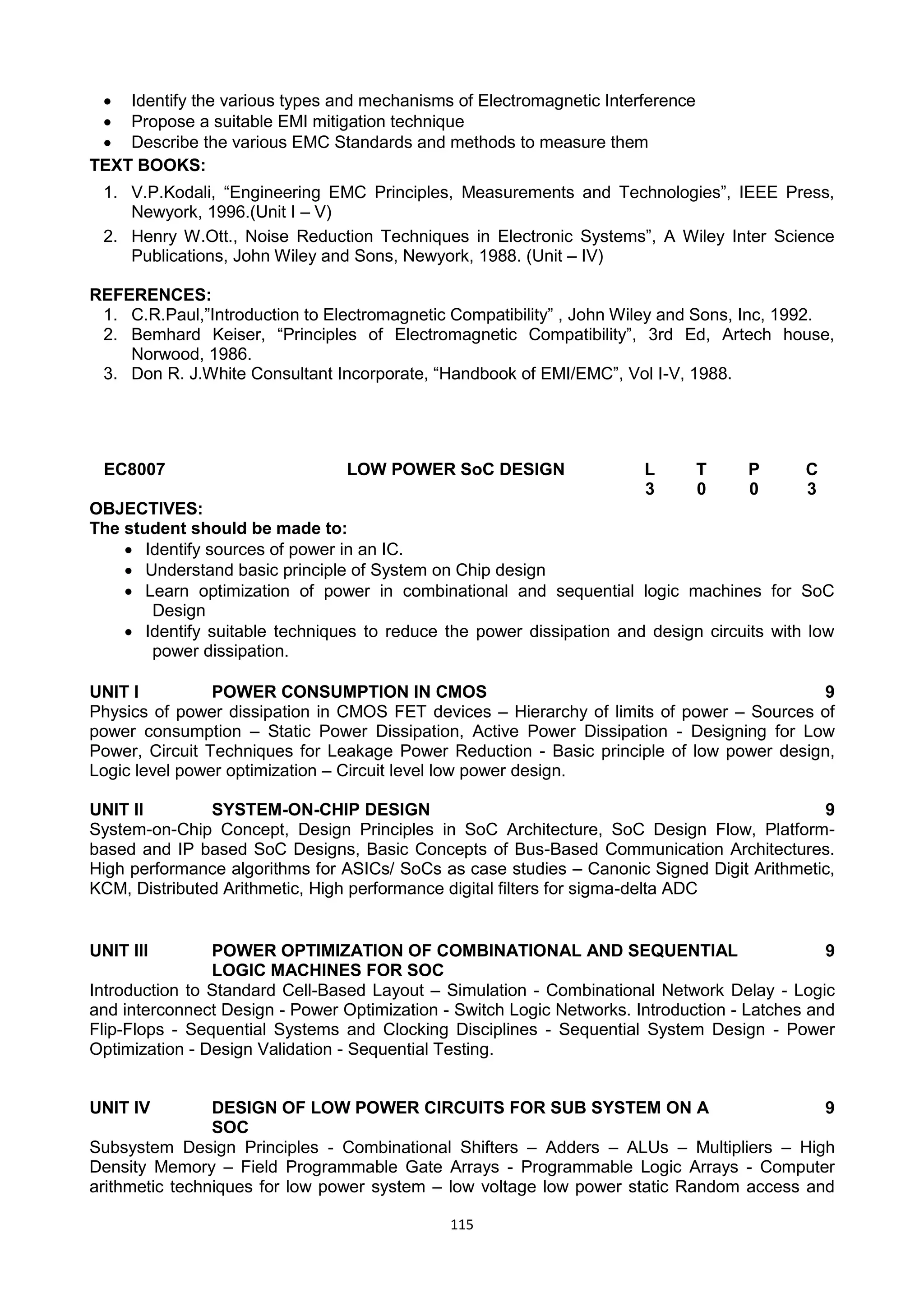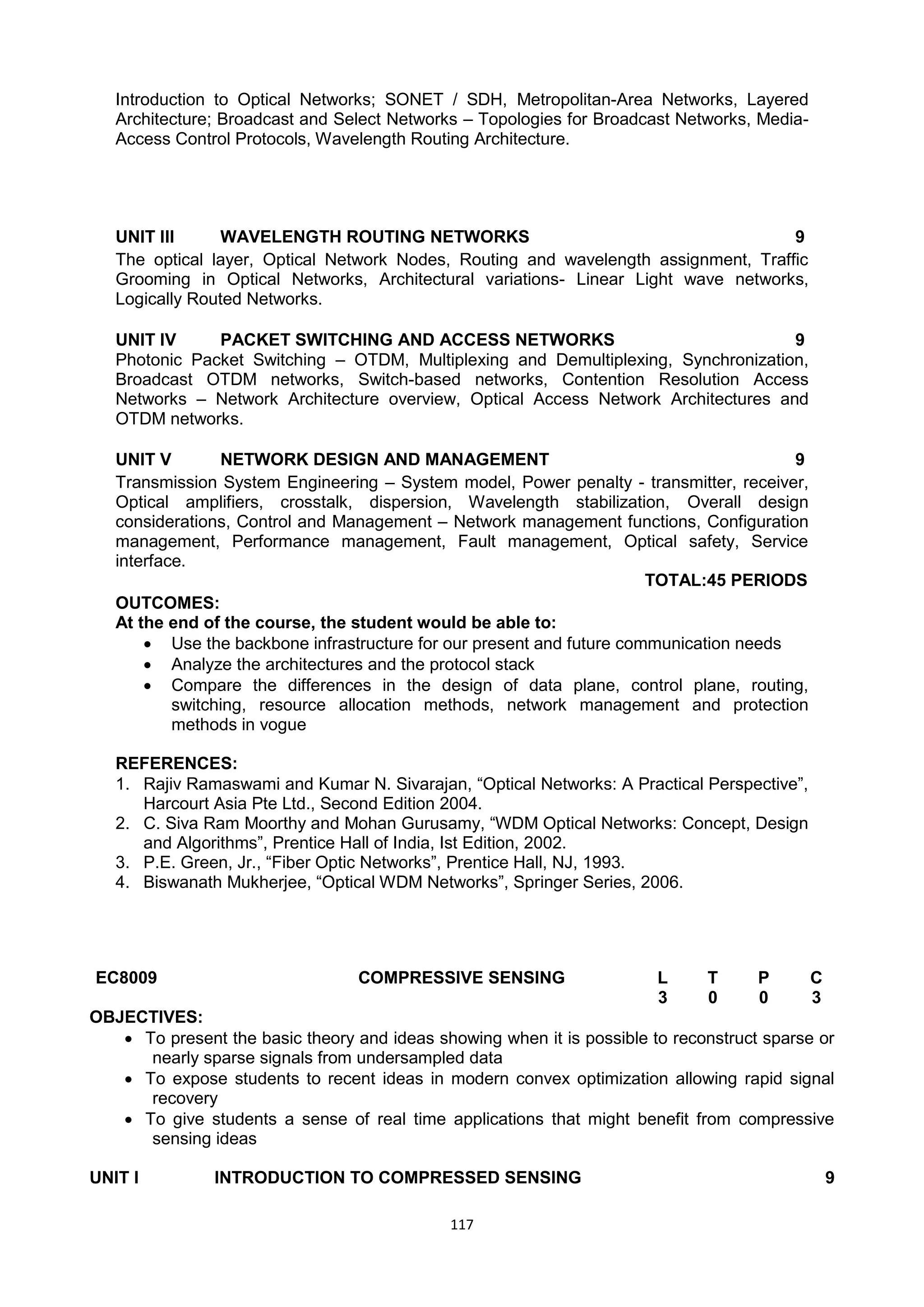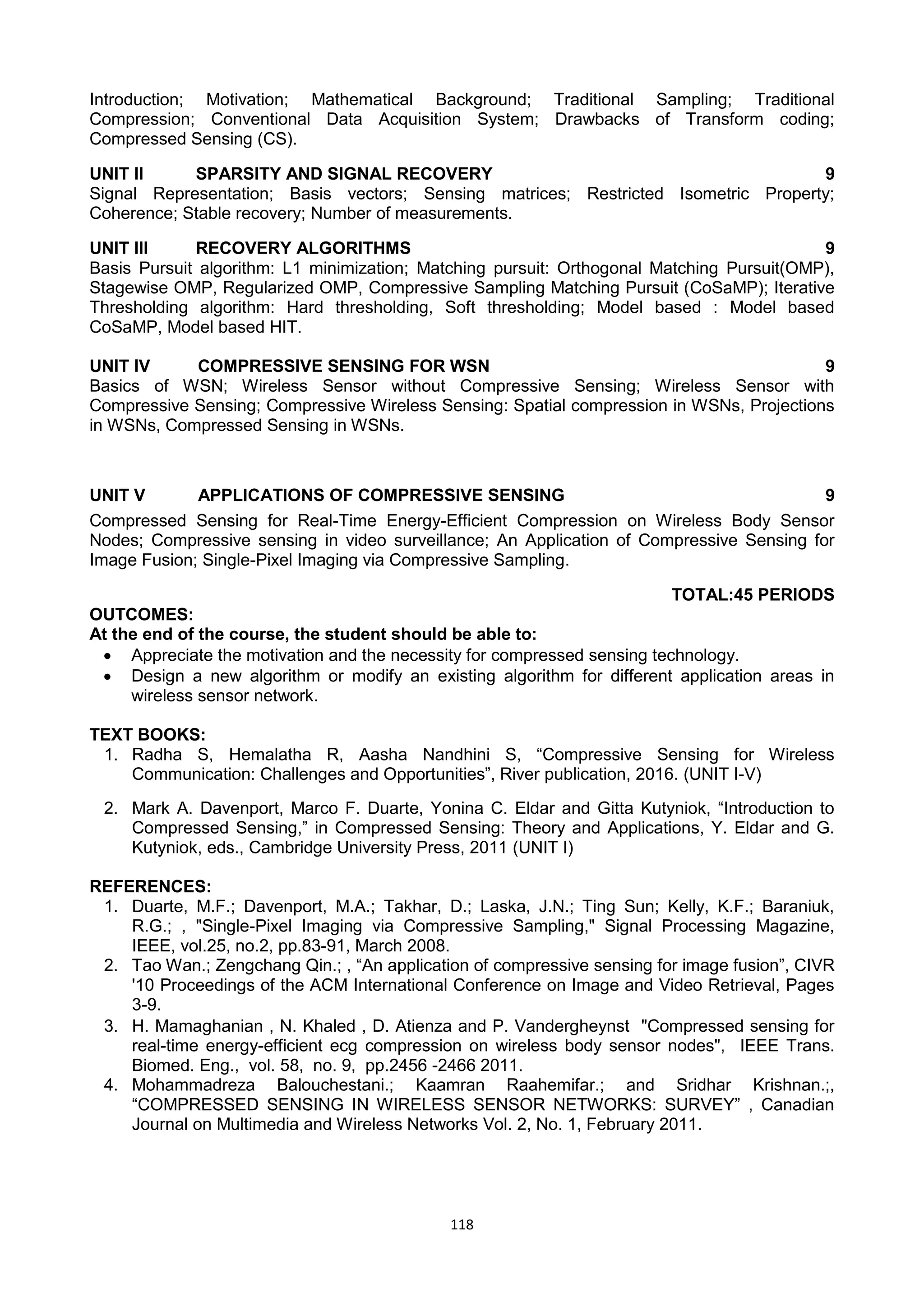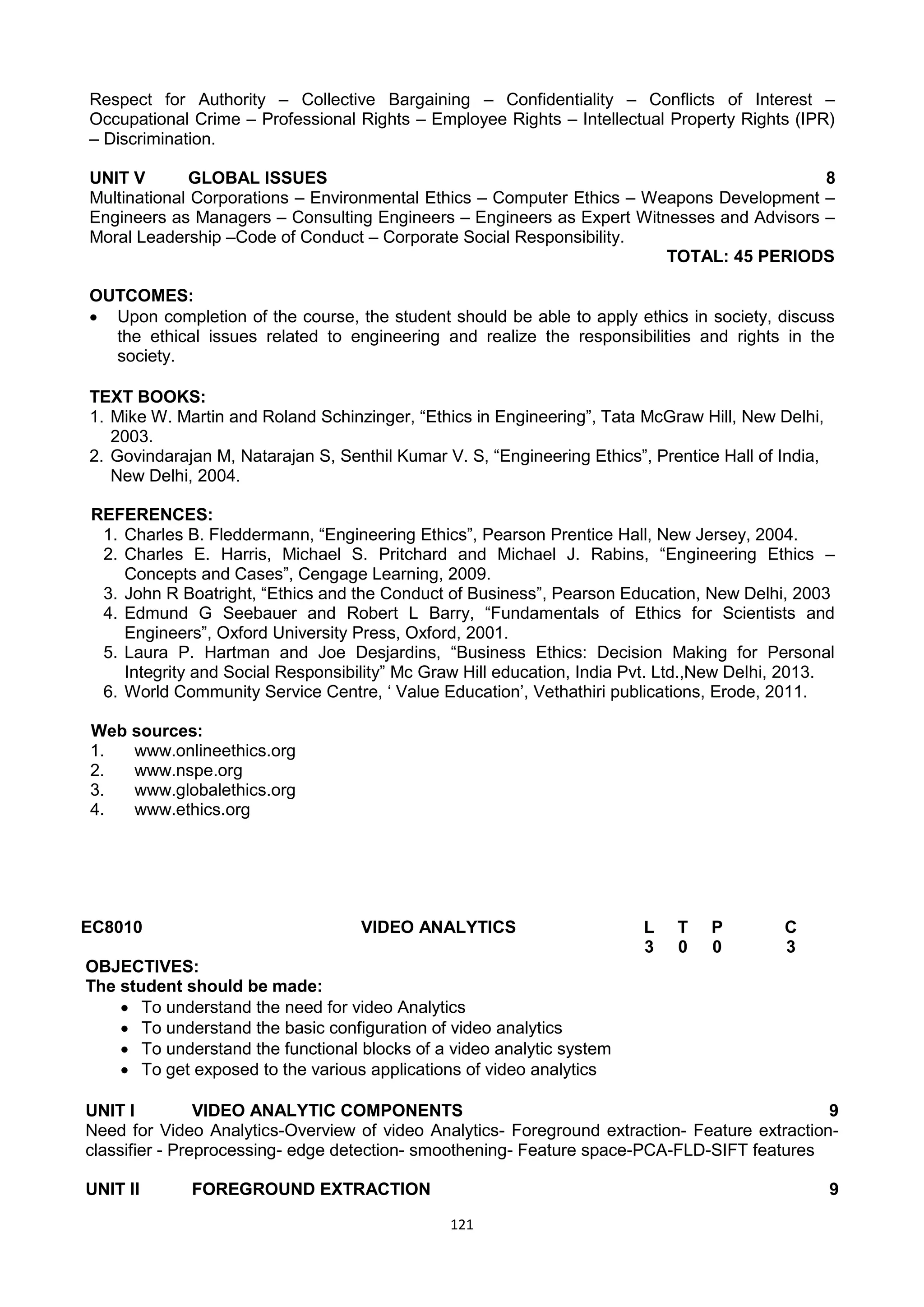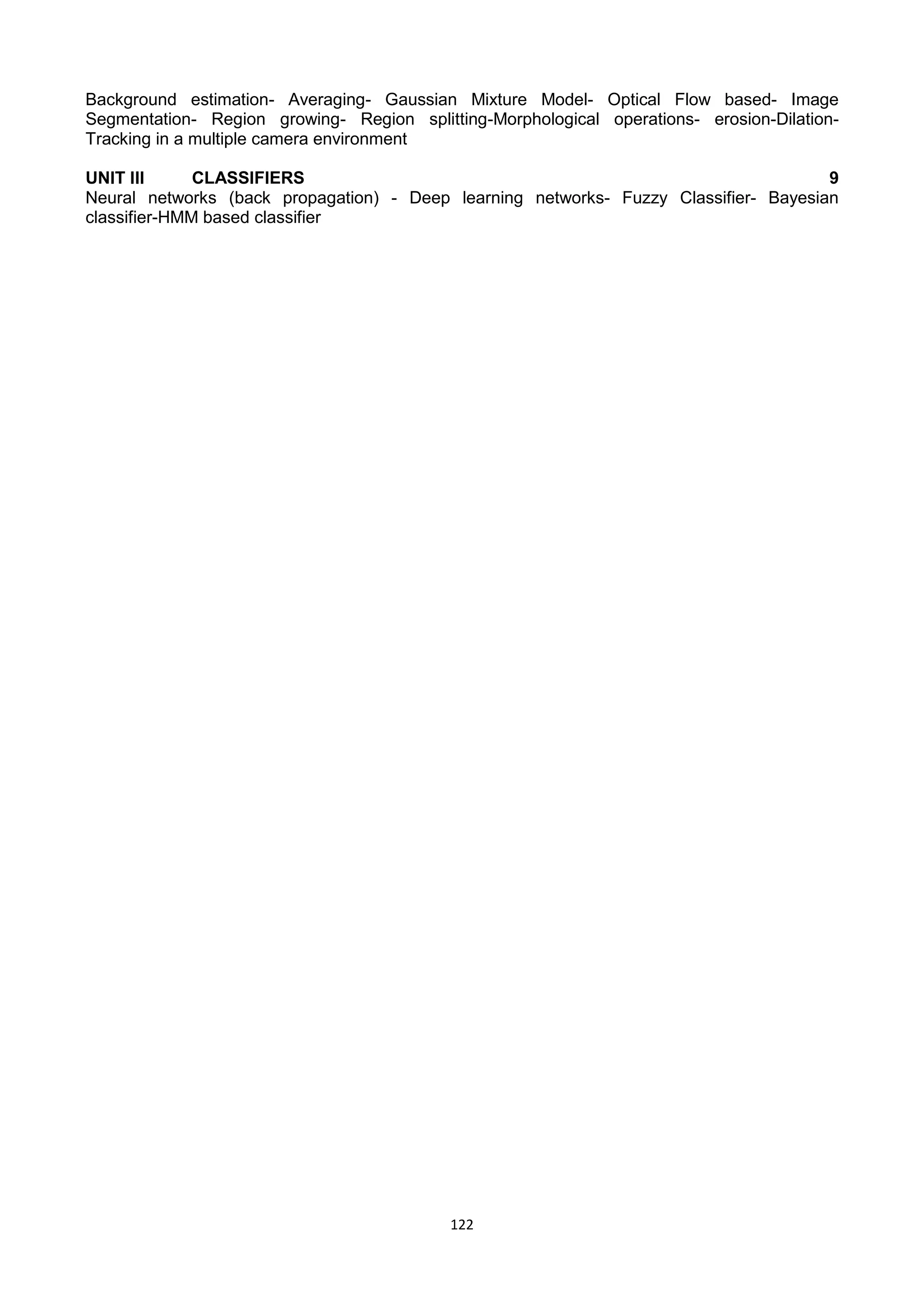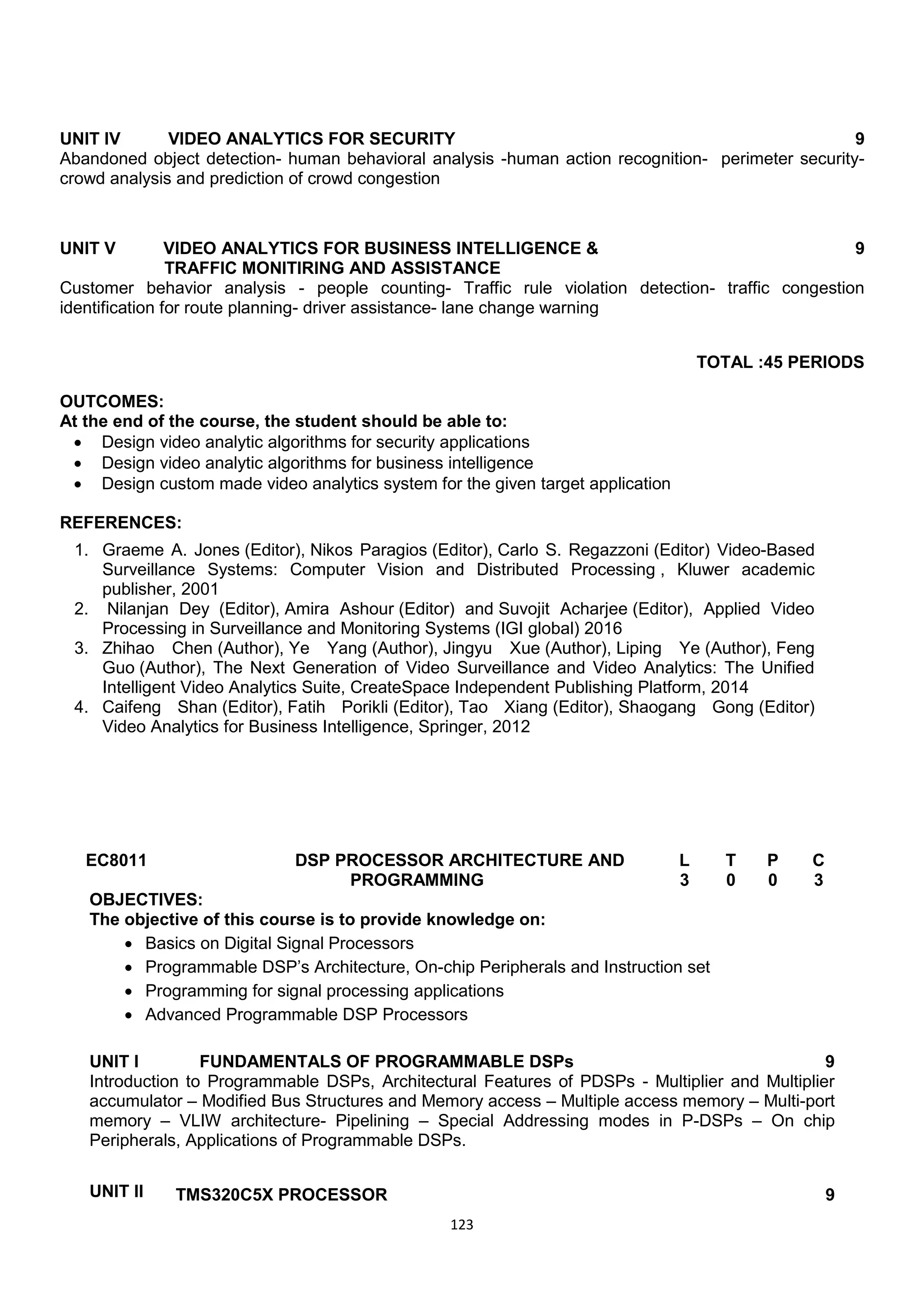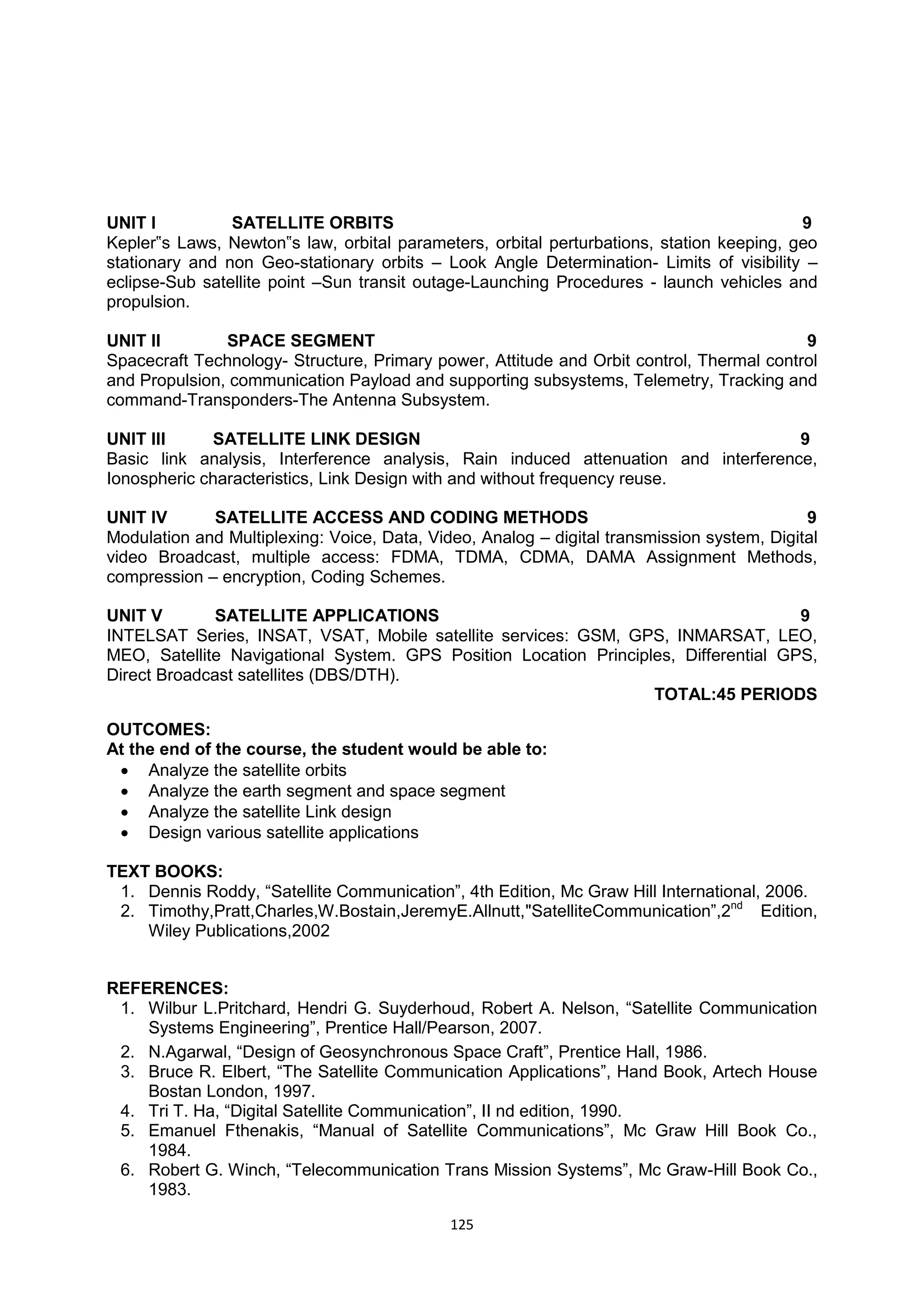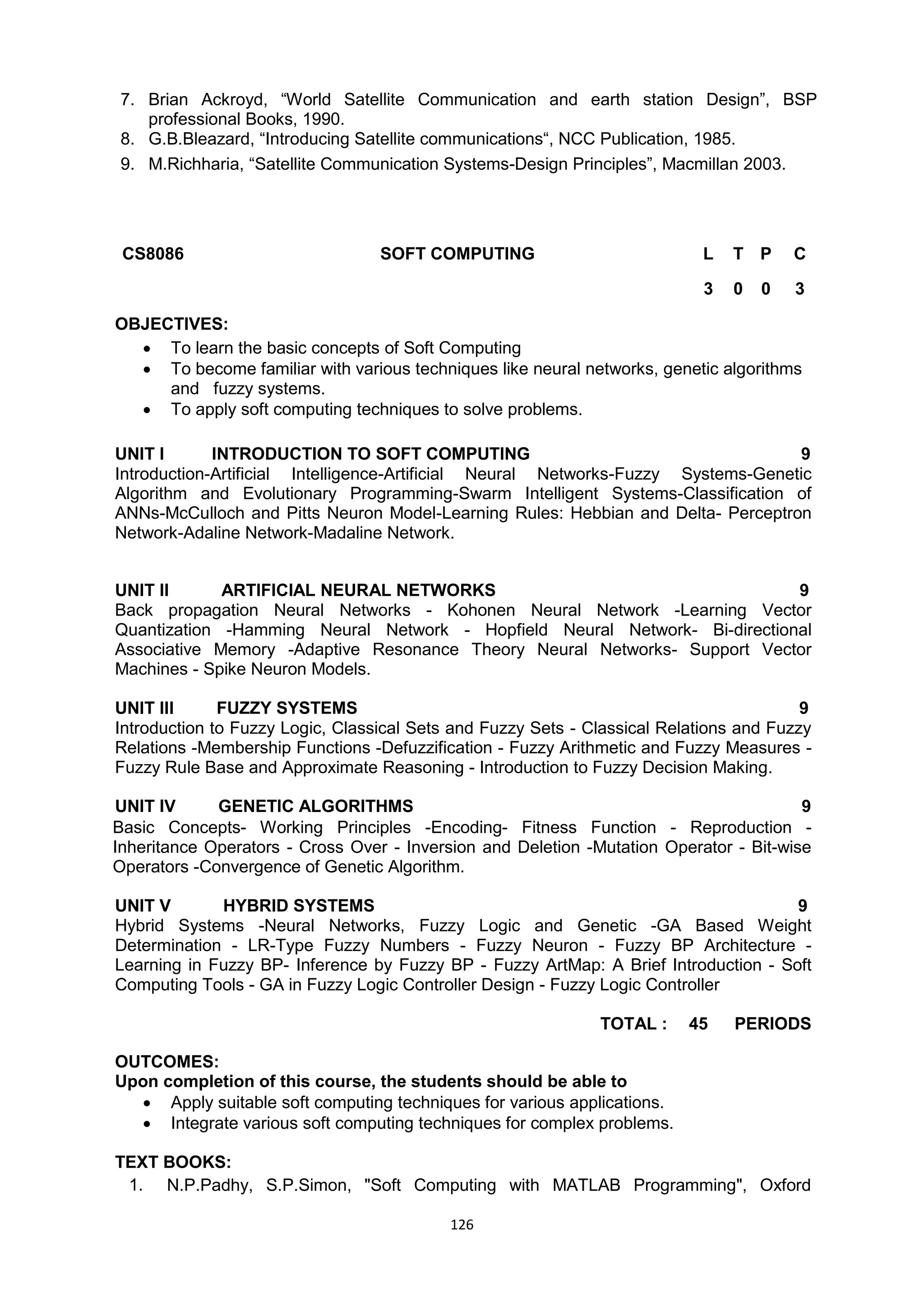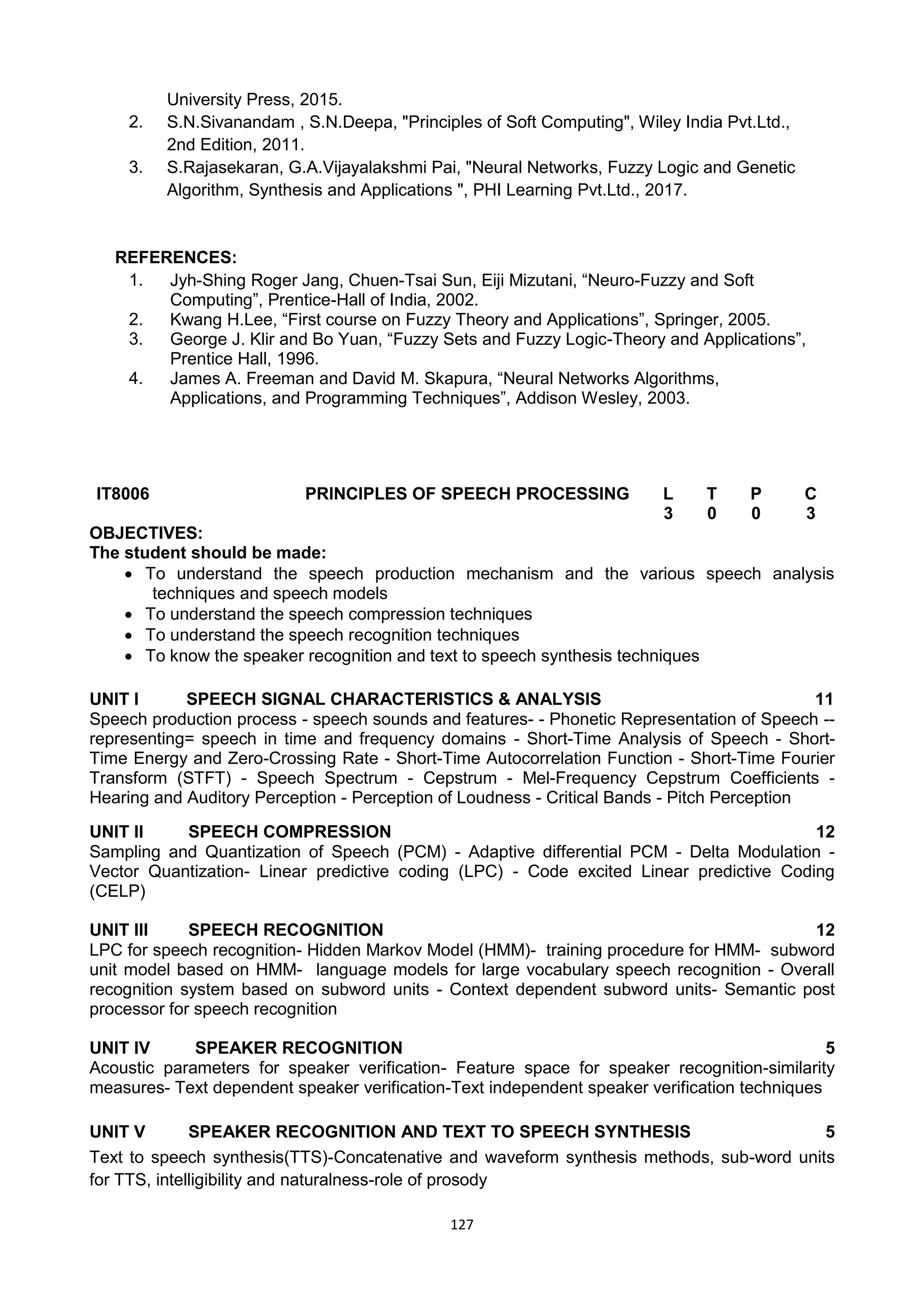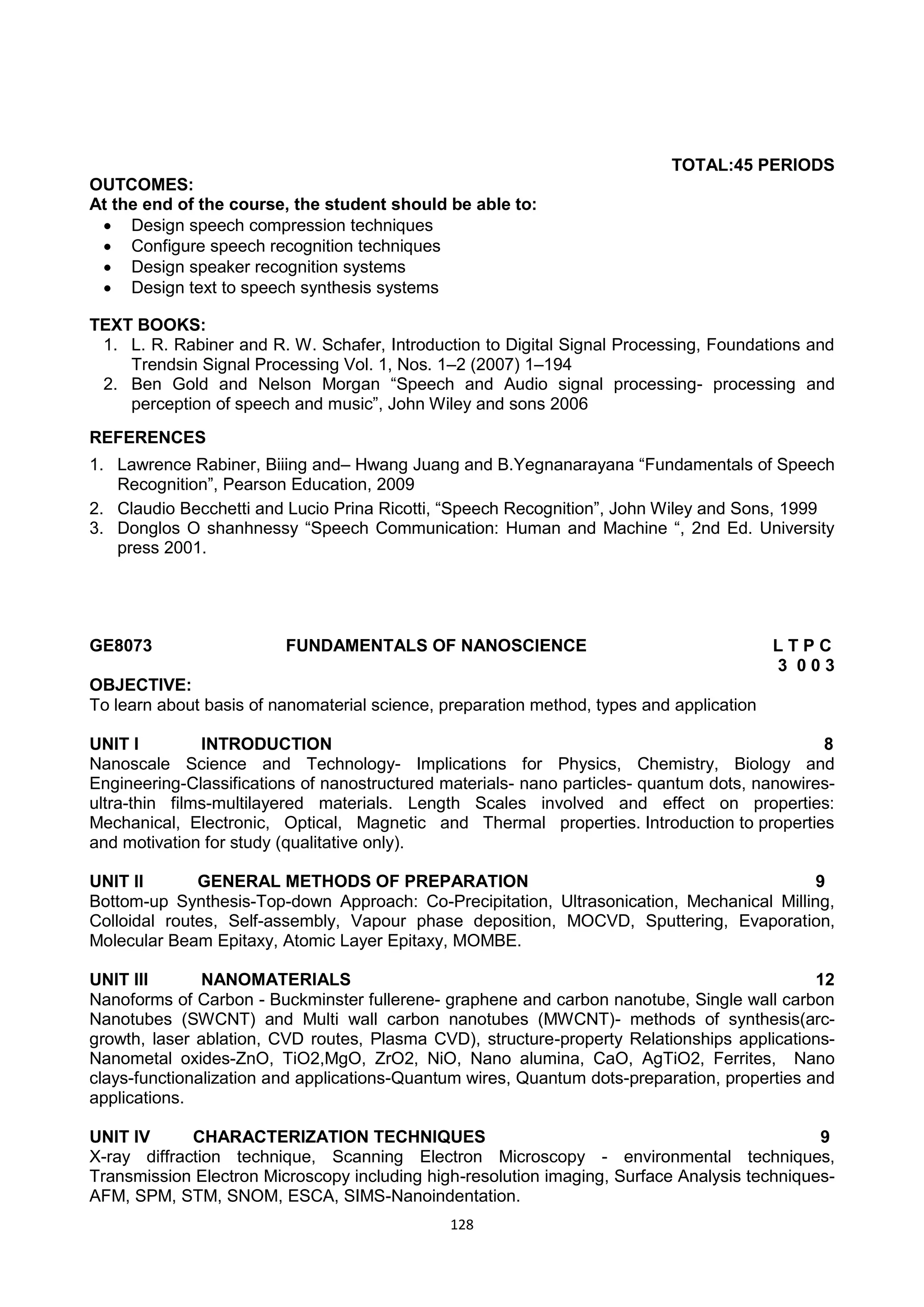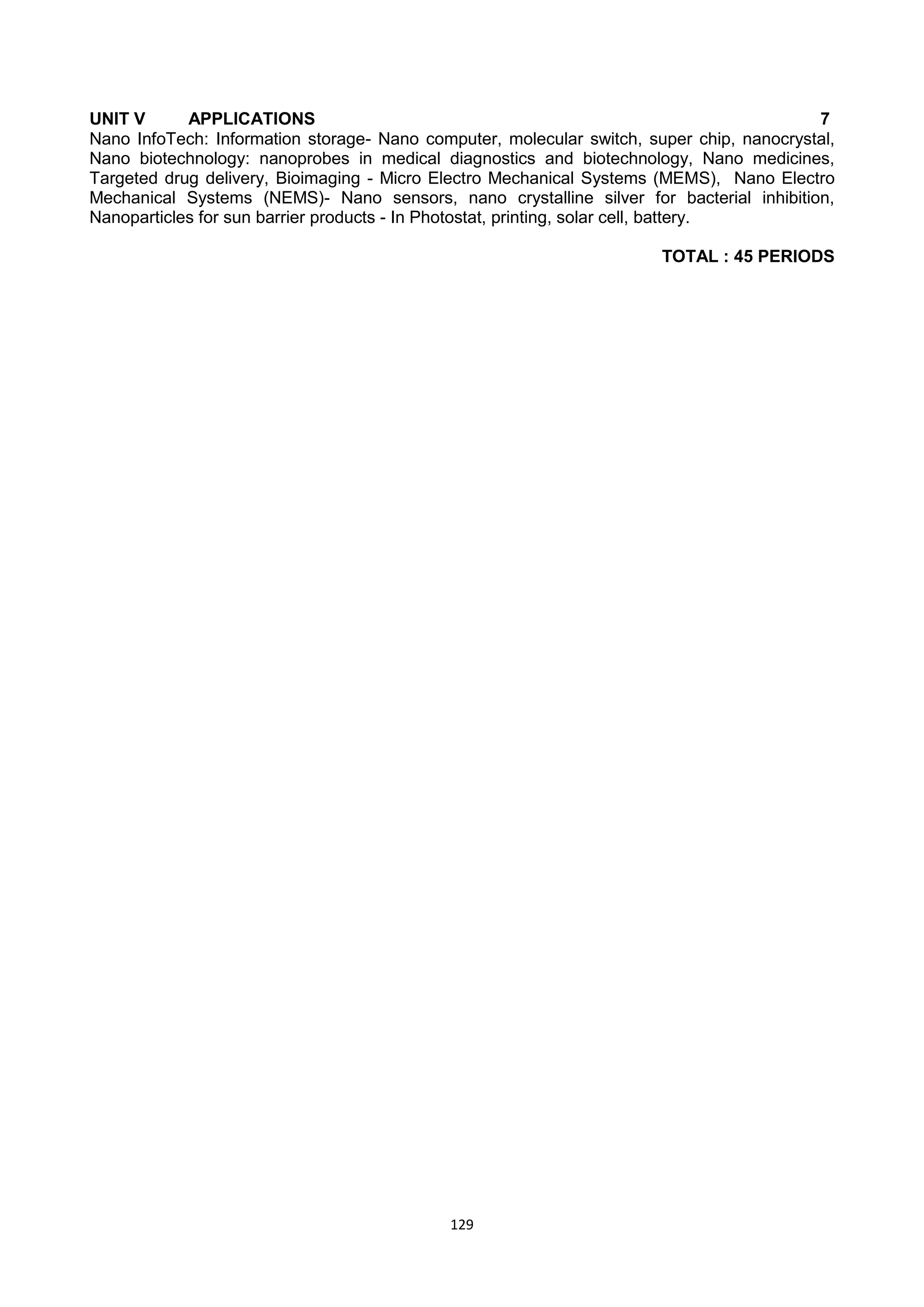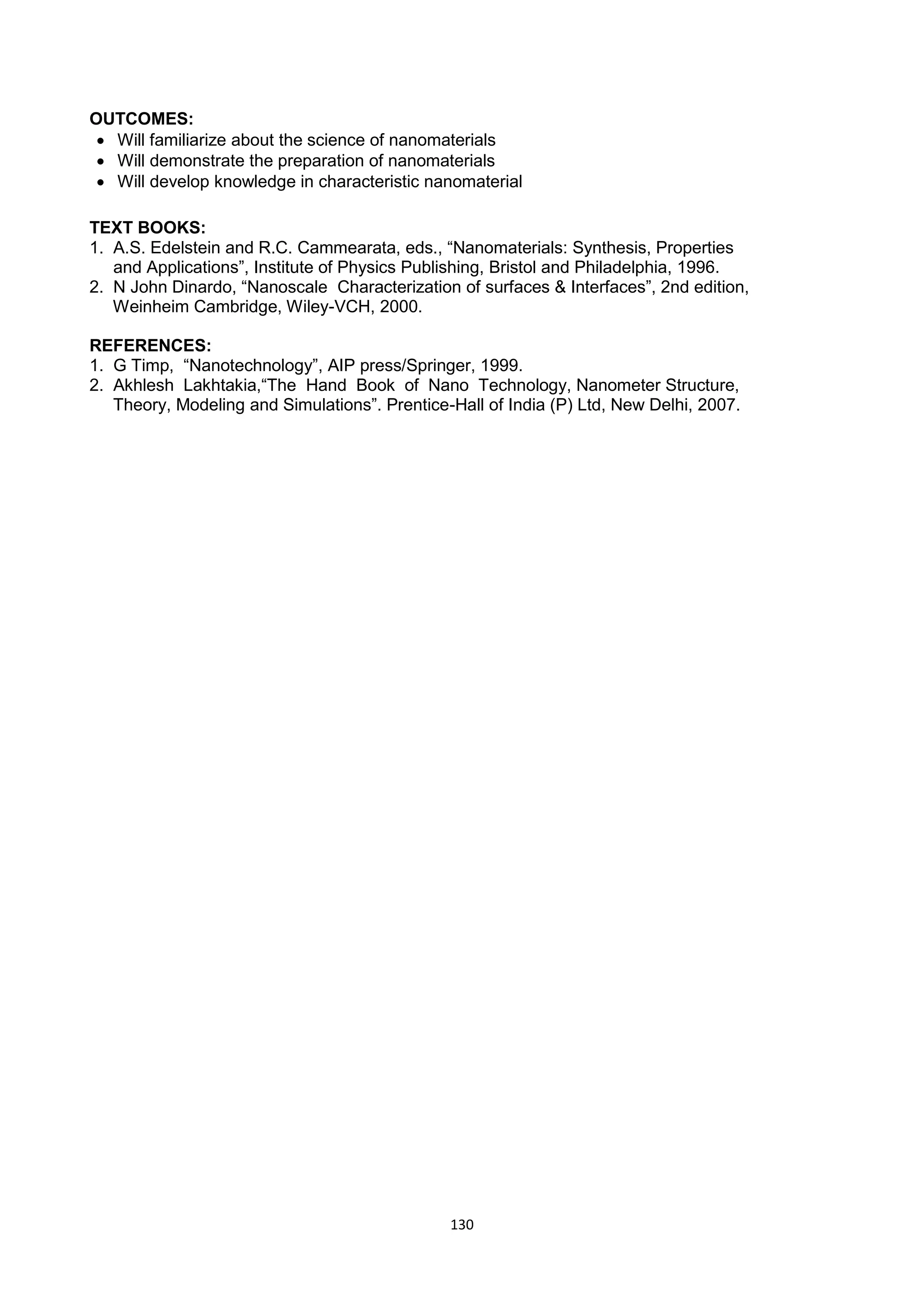The document outlines the regulations, program educational objectives, program outcomes, program specific objectives, and curriculum for the Bachelor of Electronics and Communication Engineering program at Anna University, Chennai.
The key details include:
- 3 program educational objectives related to careers, foundational concepts, and developing innovative methodologies.
- 12 programme outcomes related to engineering knowledge, problem solving, design, investigation, tool usage, professionalism, sustainability, ethics, teamwork, communication, management, and lifelong learning.
- 3 program specific objectives related to applying concepts, developing quality products, and adapting to emerging technologies.
- Mapping of the objectives and outcomes to courses across 8 semesters of the curriculum.


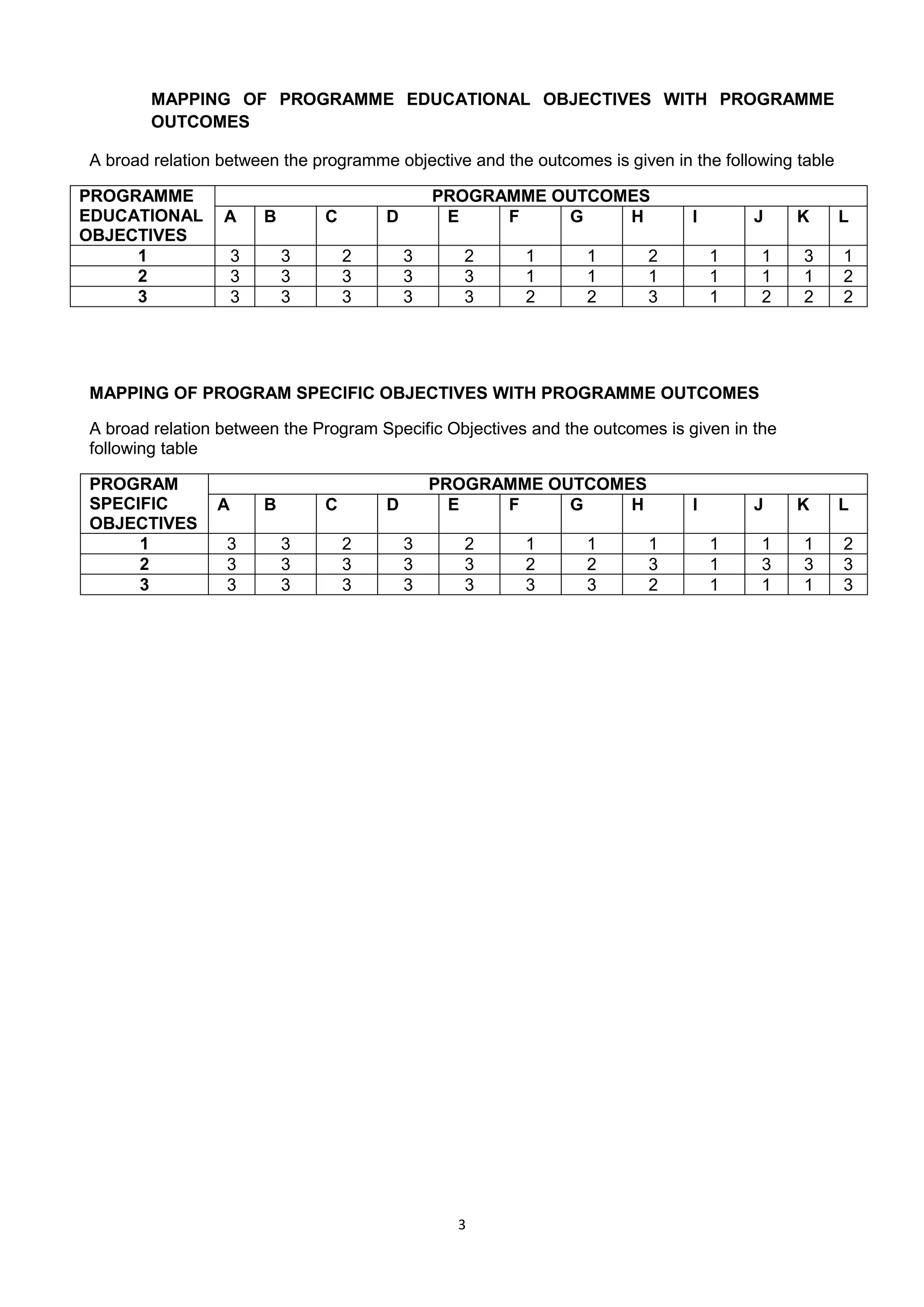
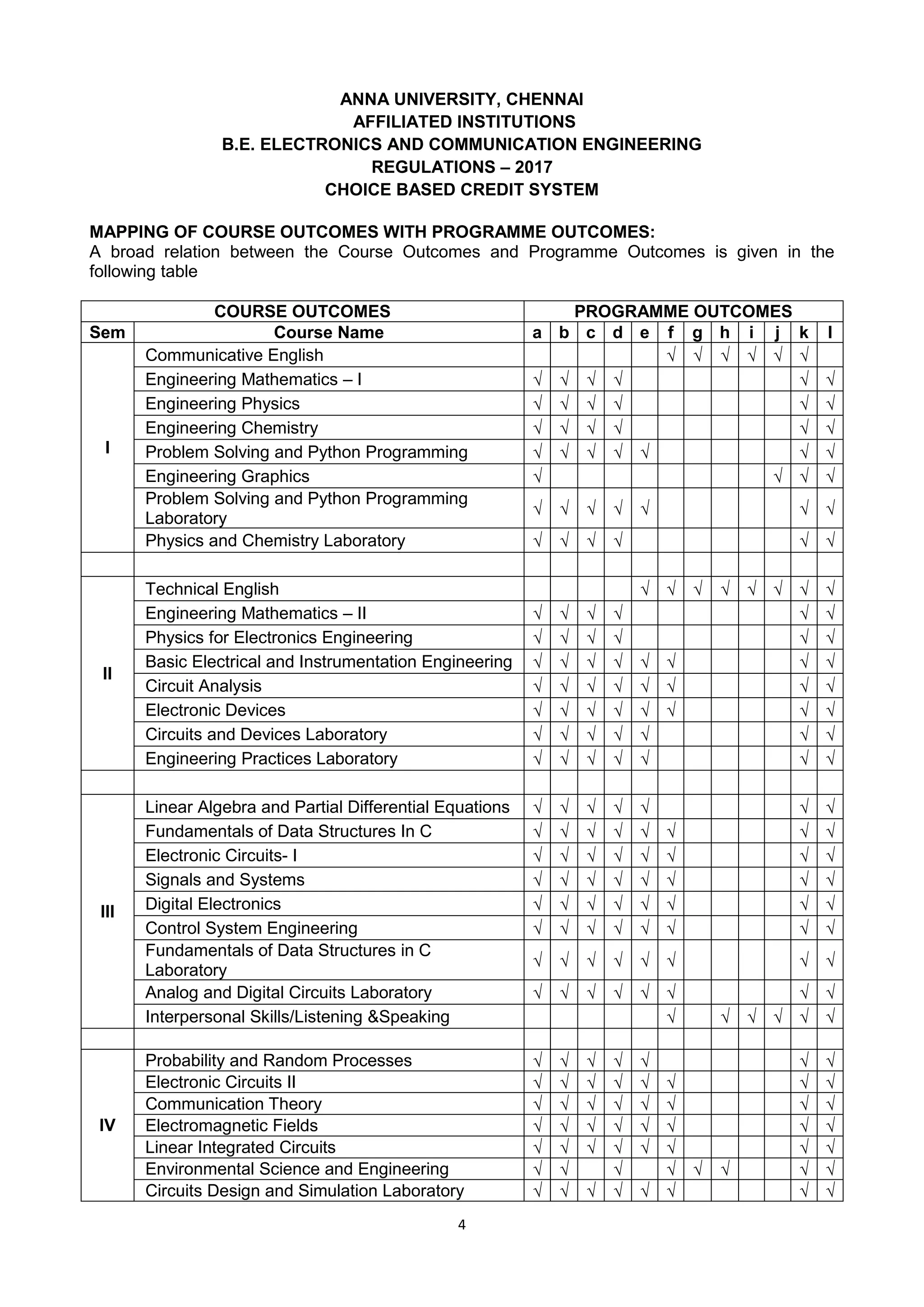
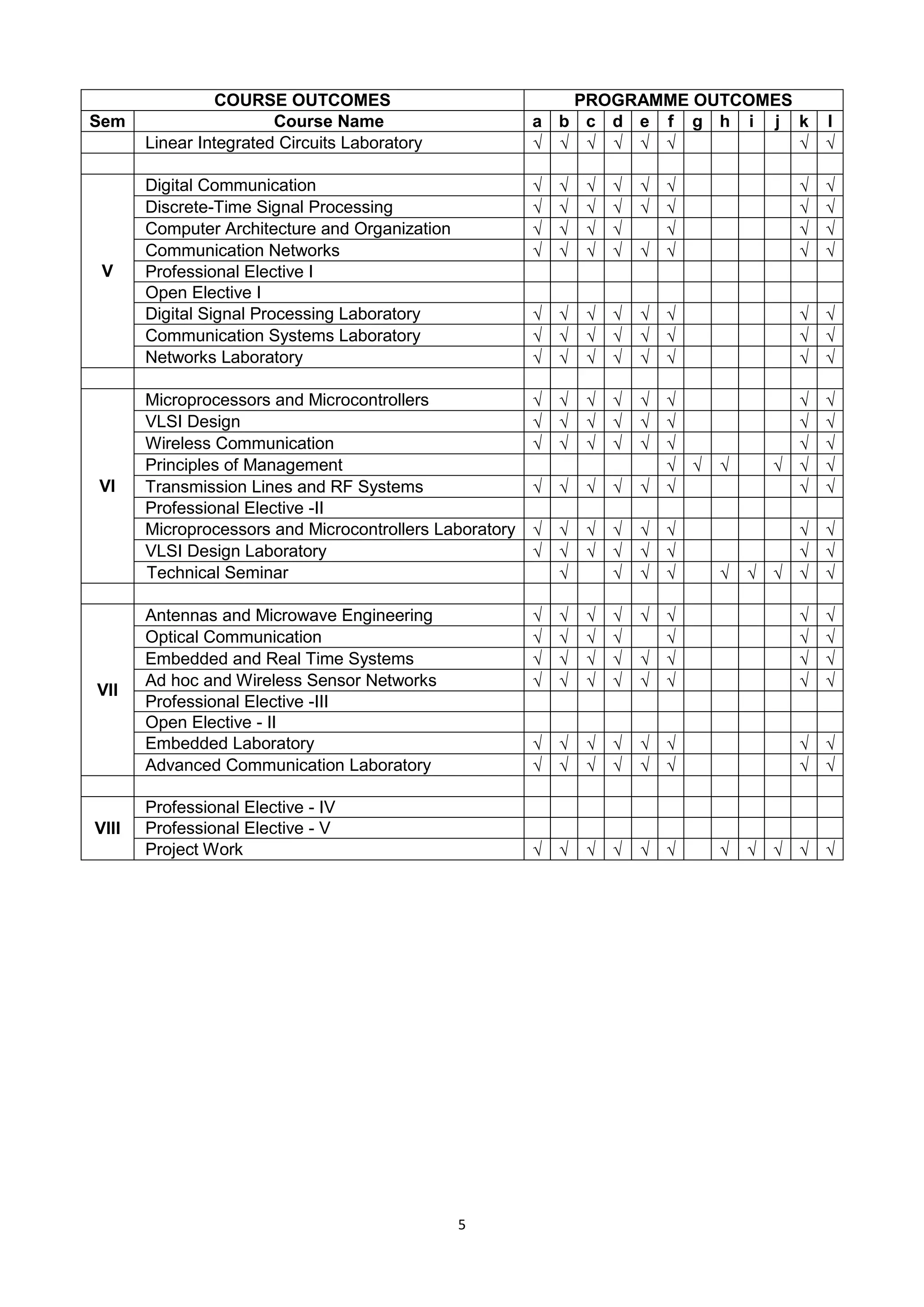

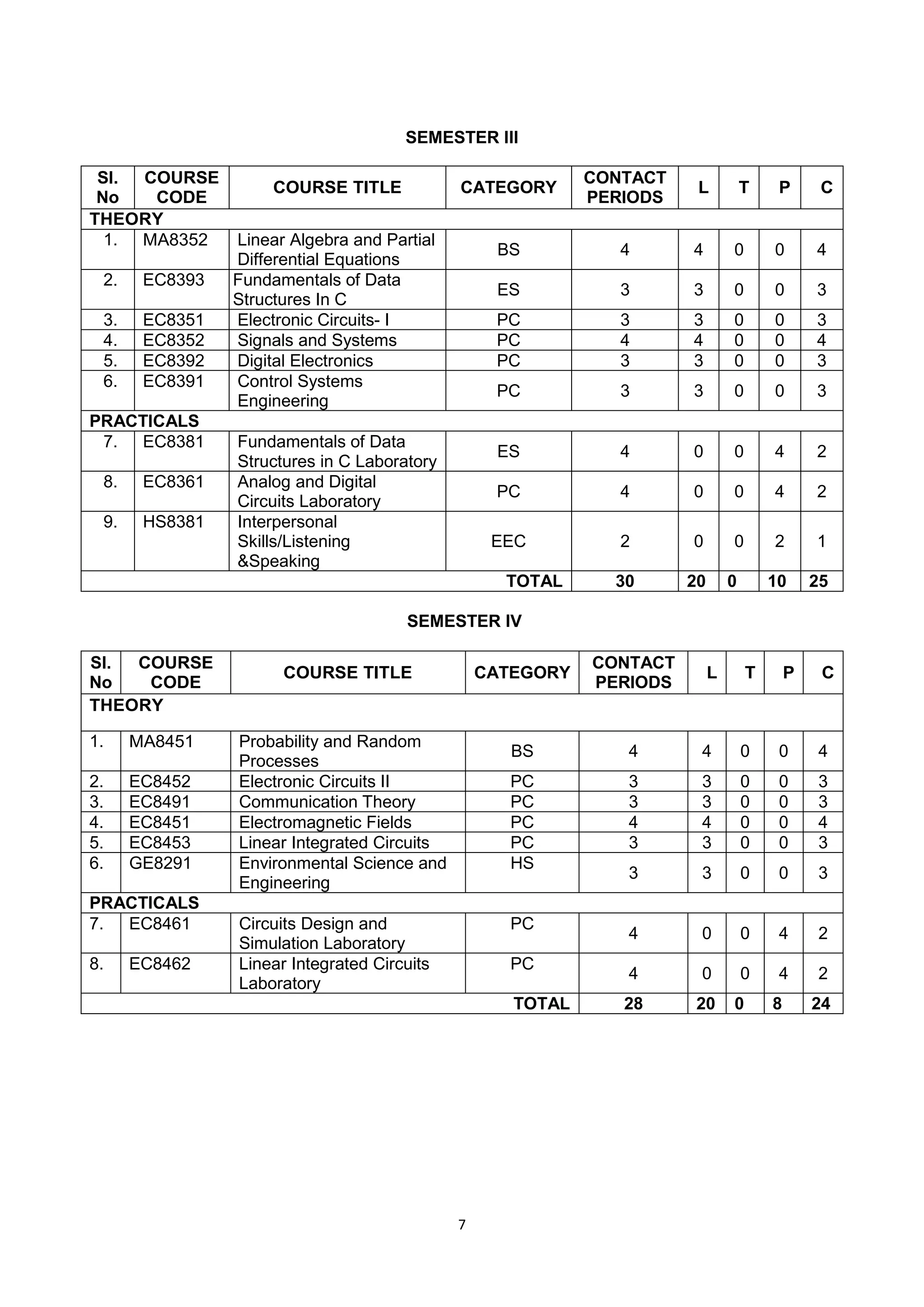
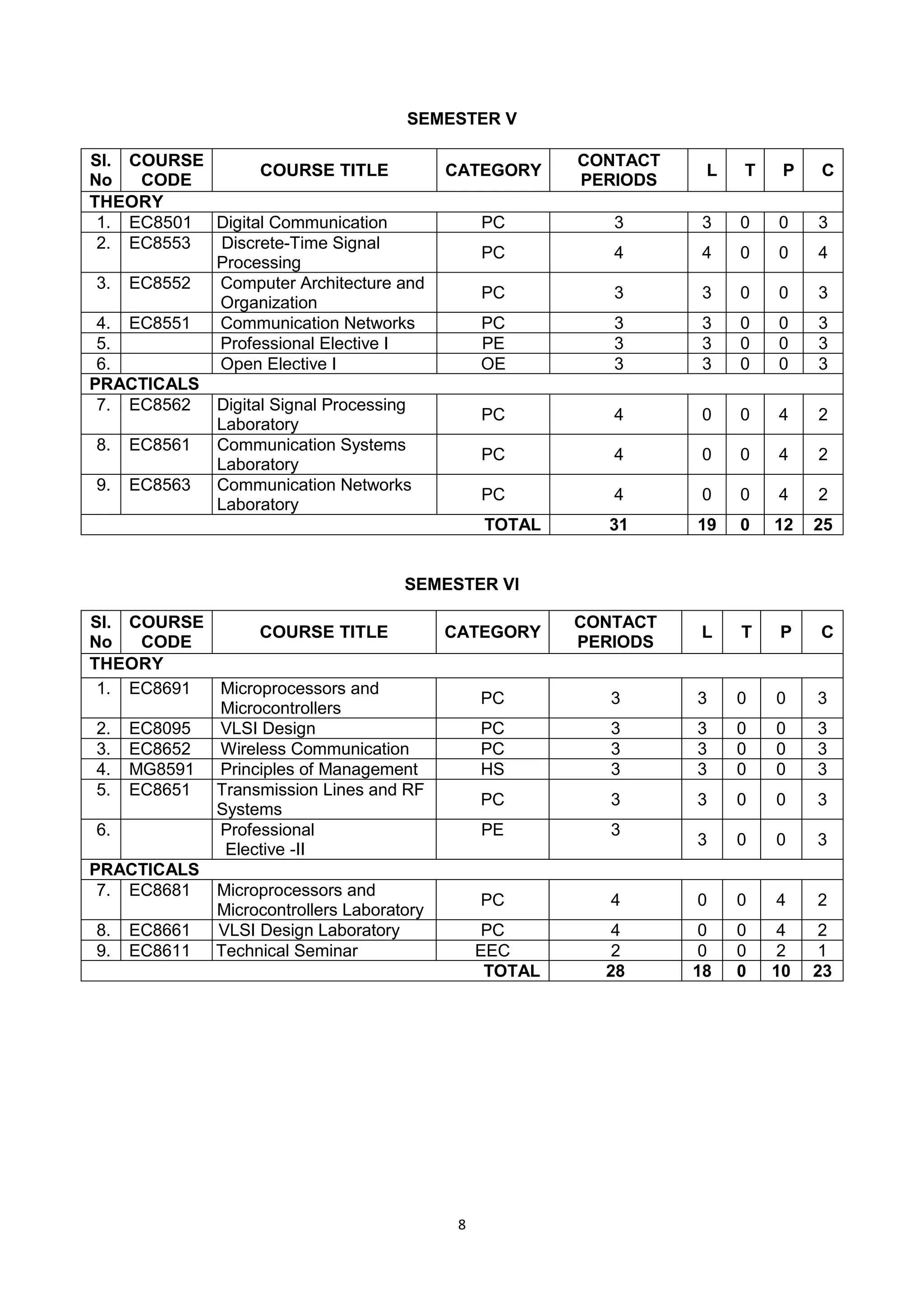
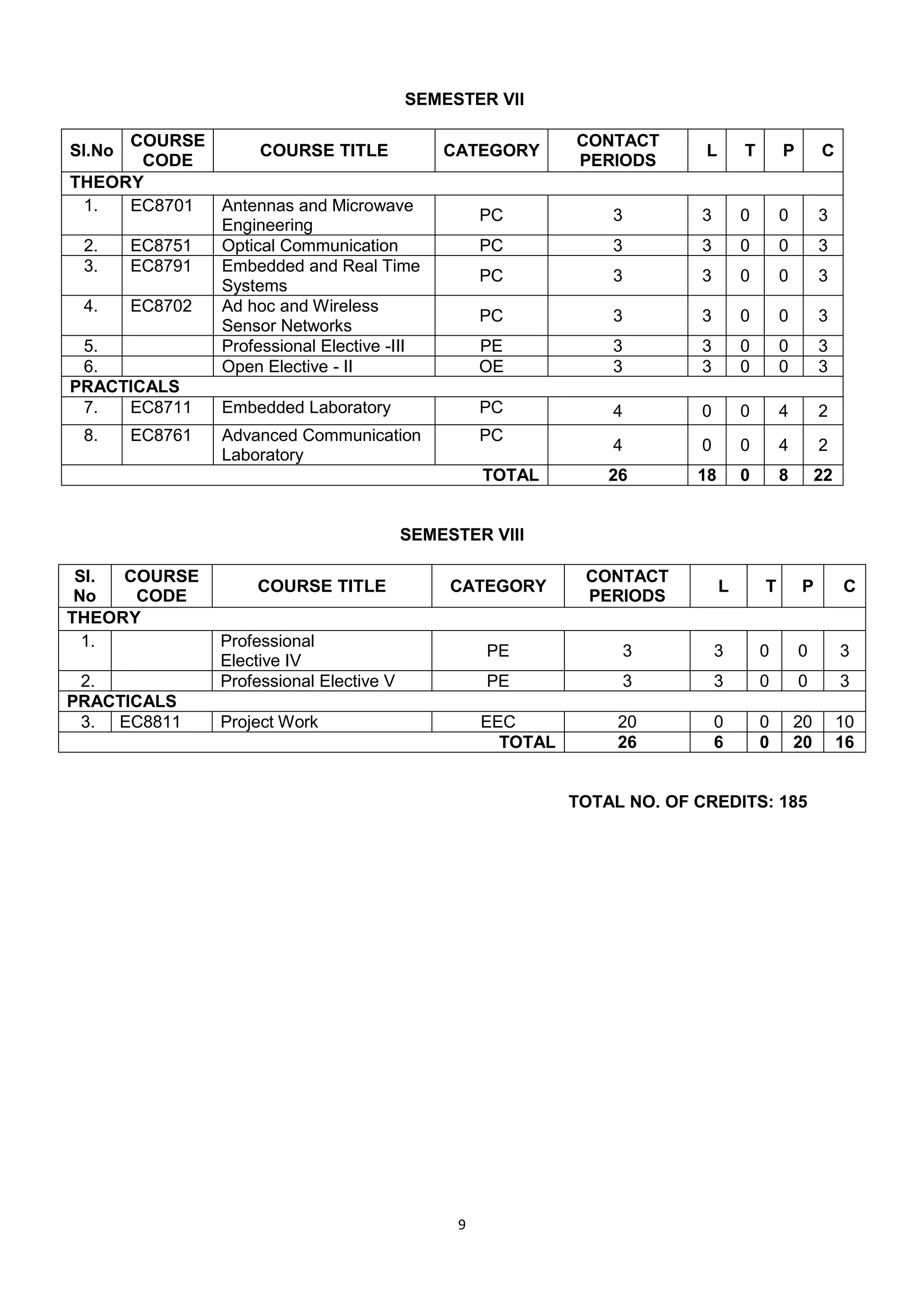
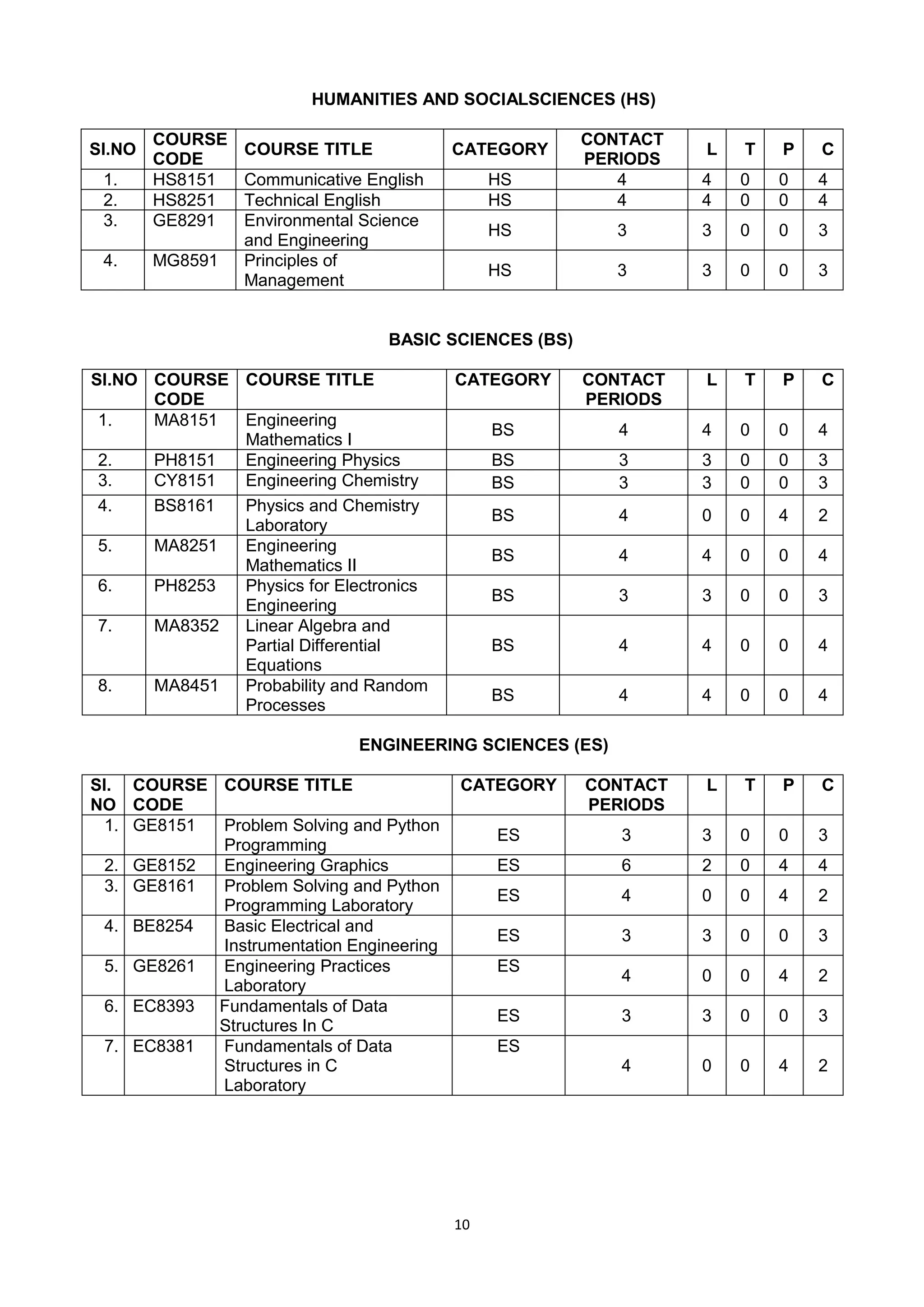
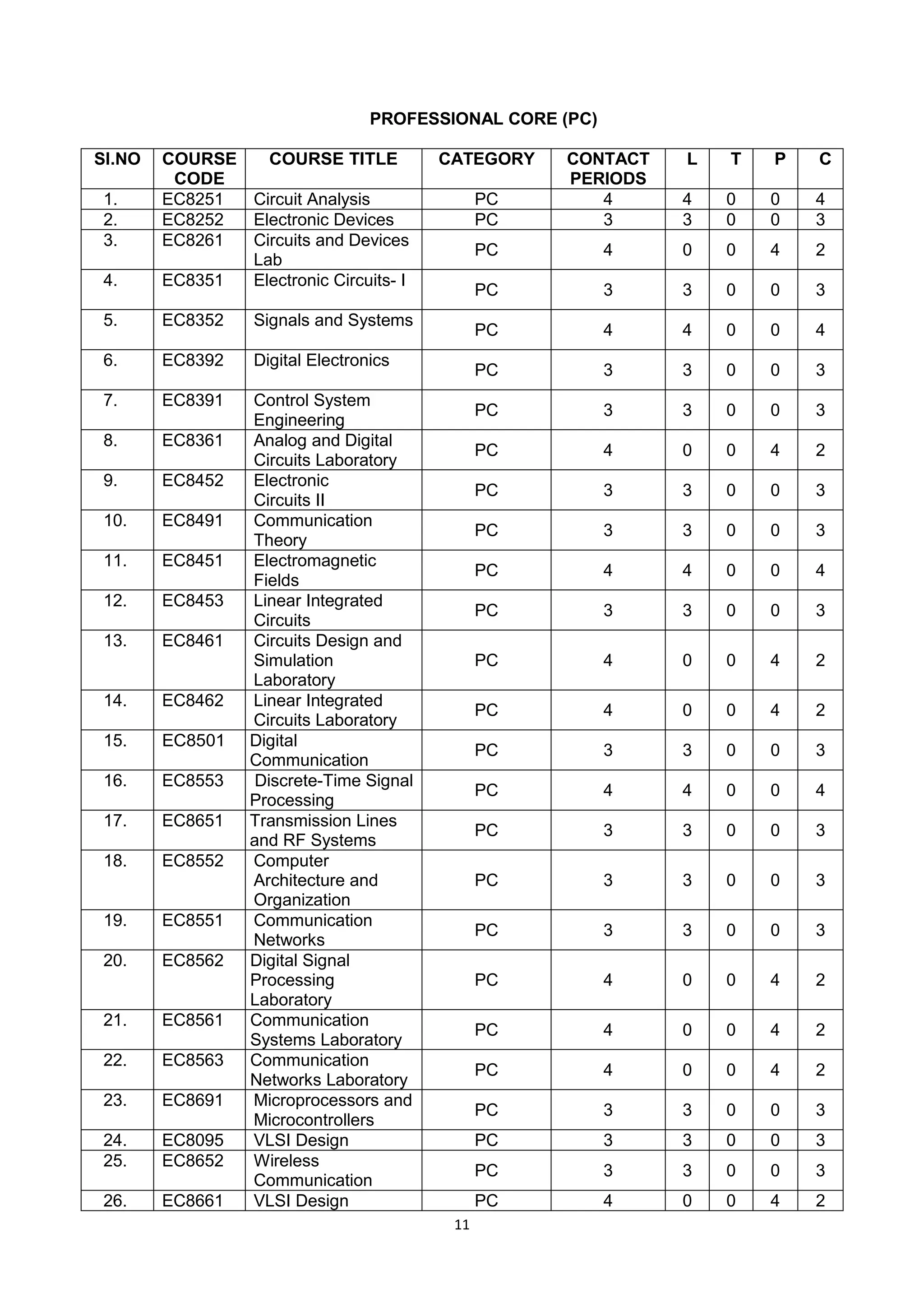

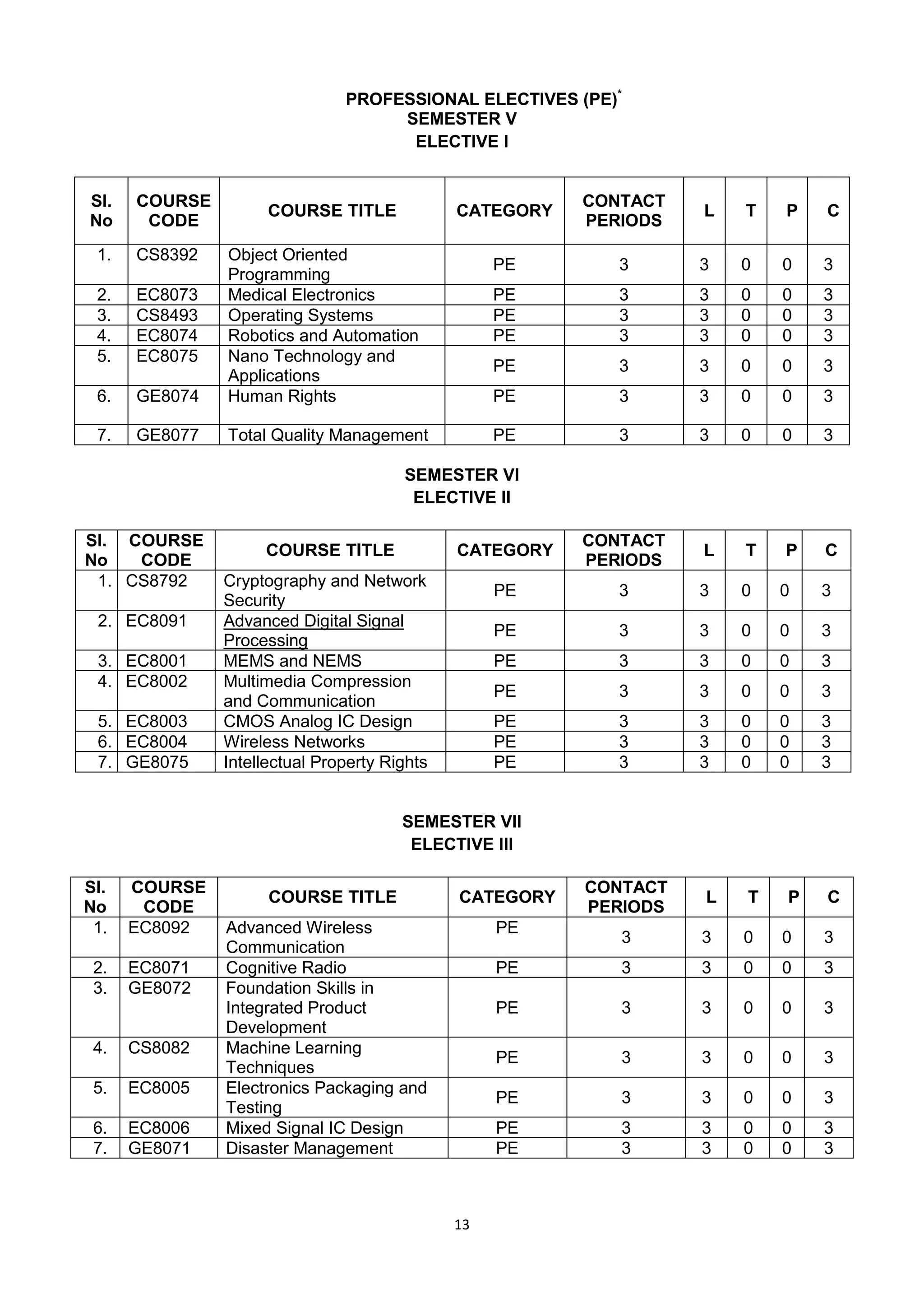
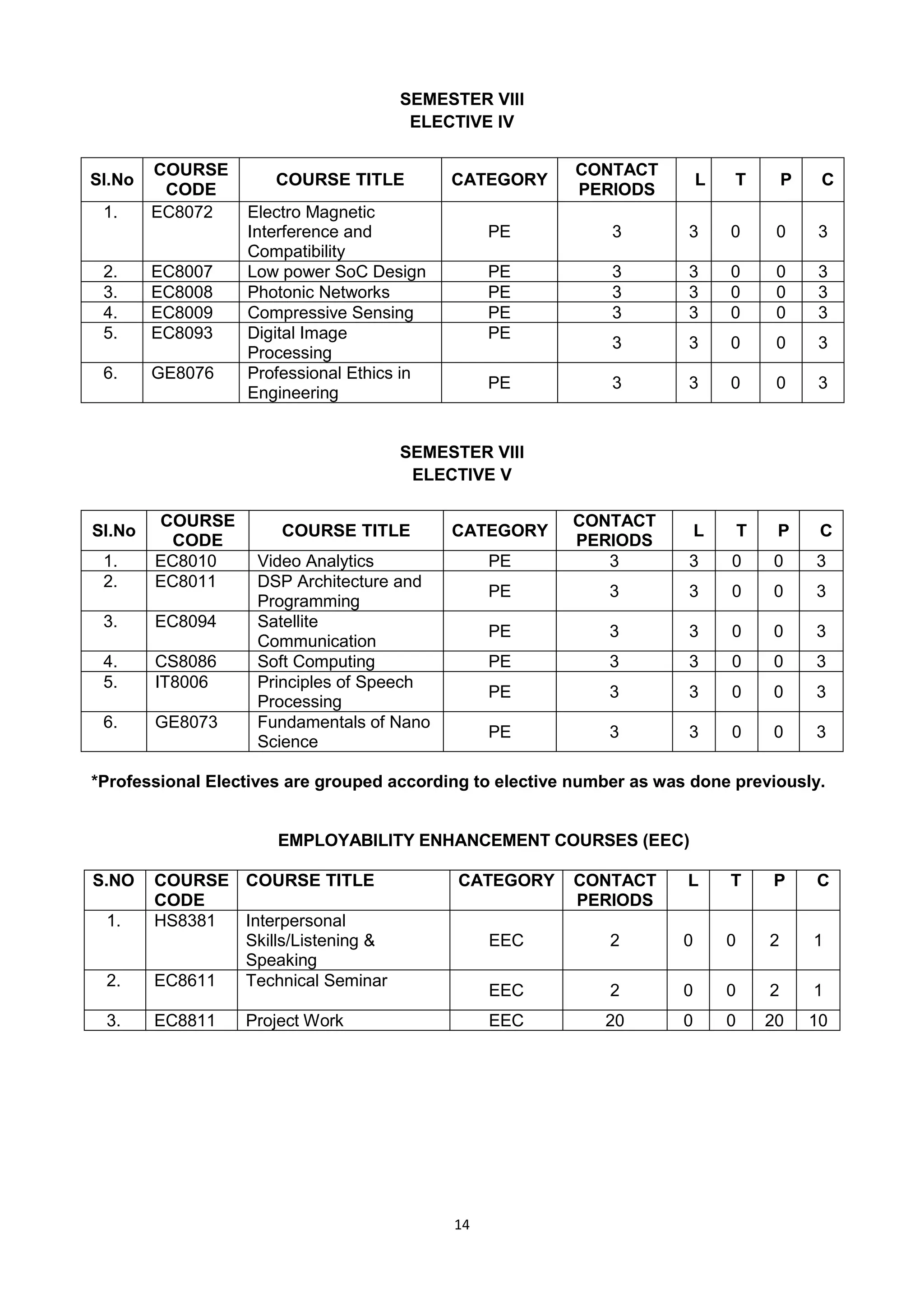
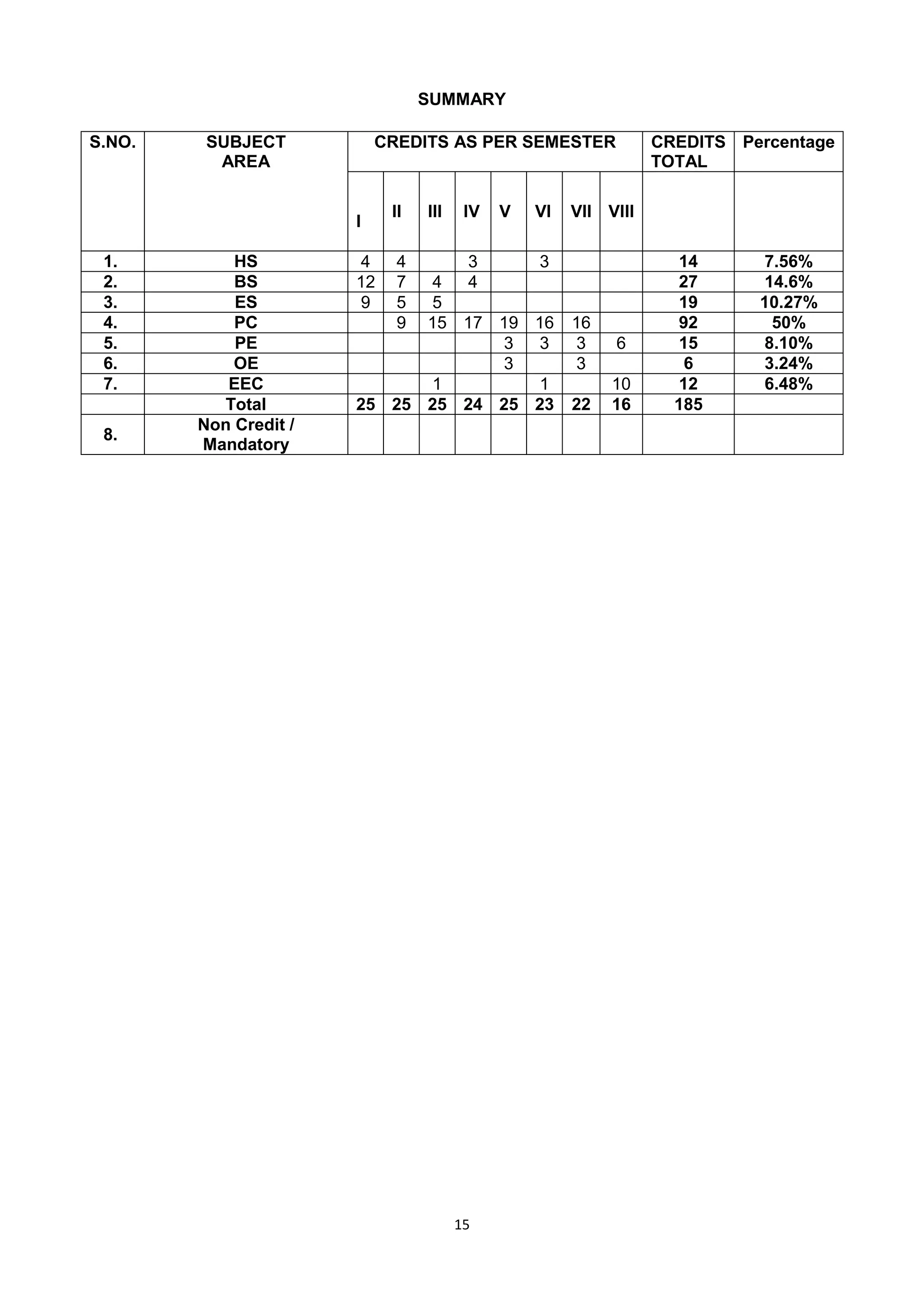
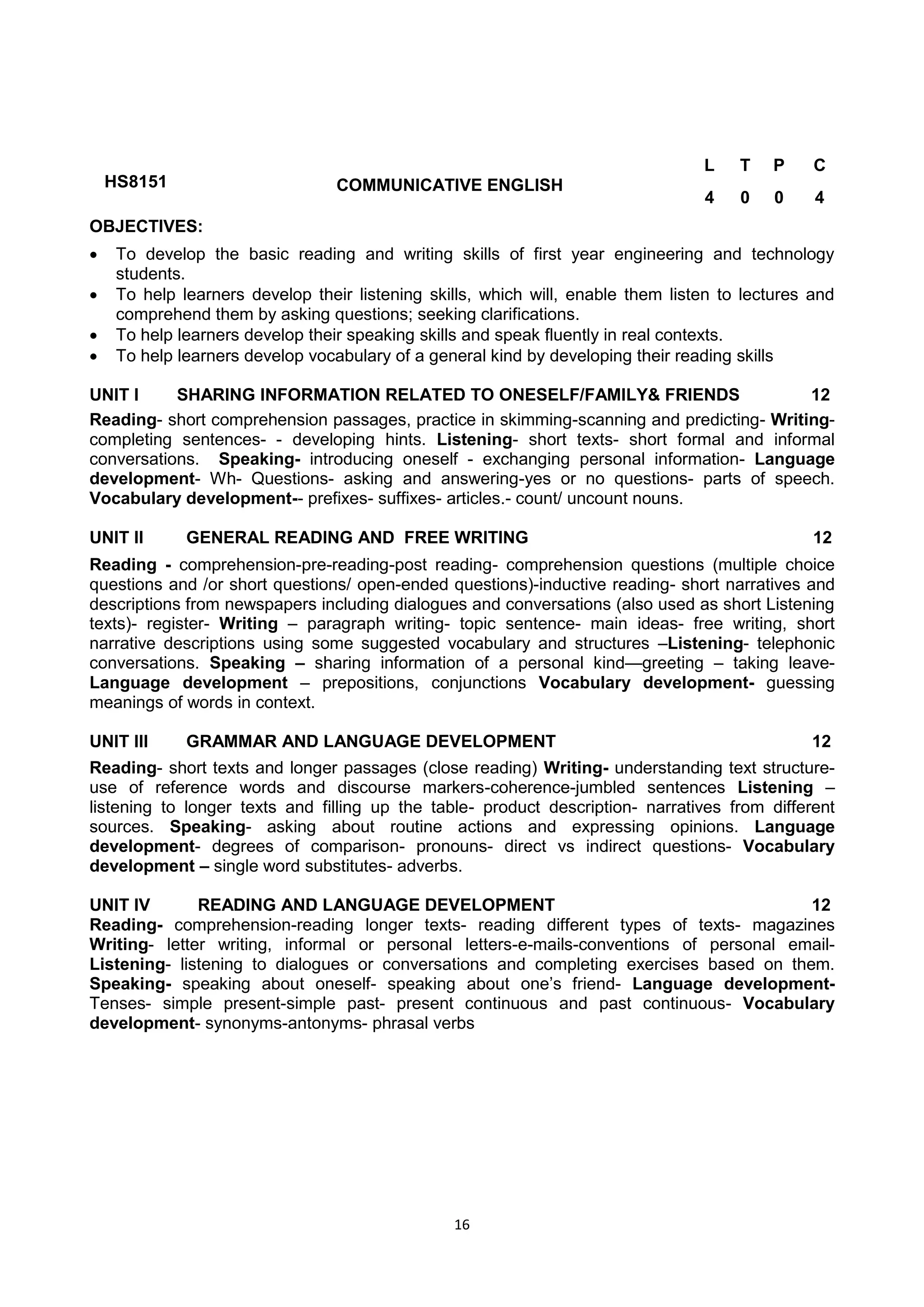
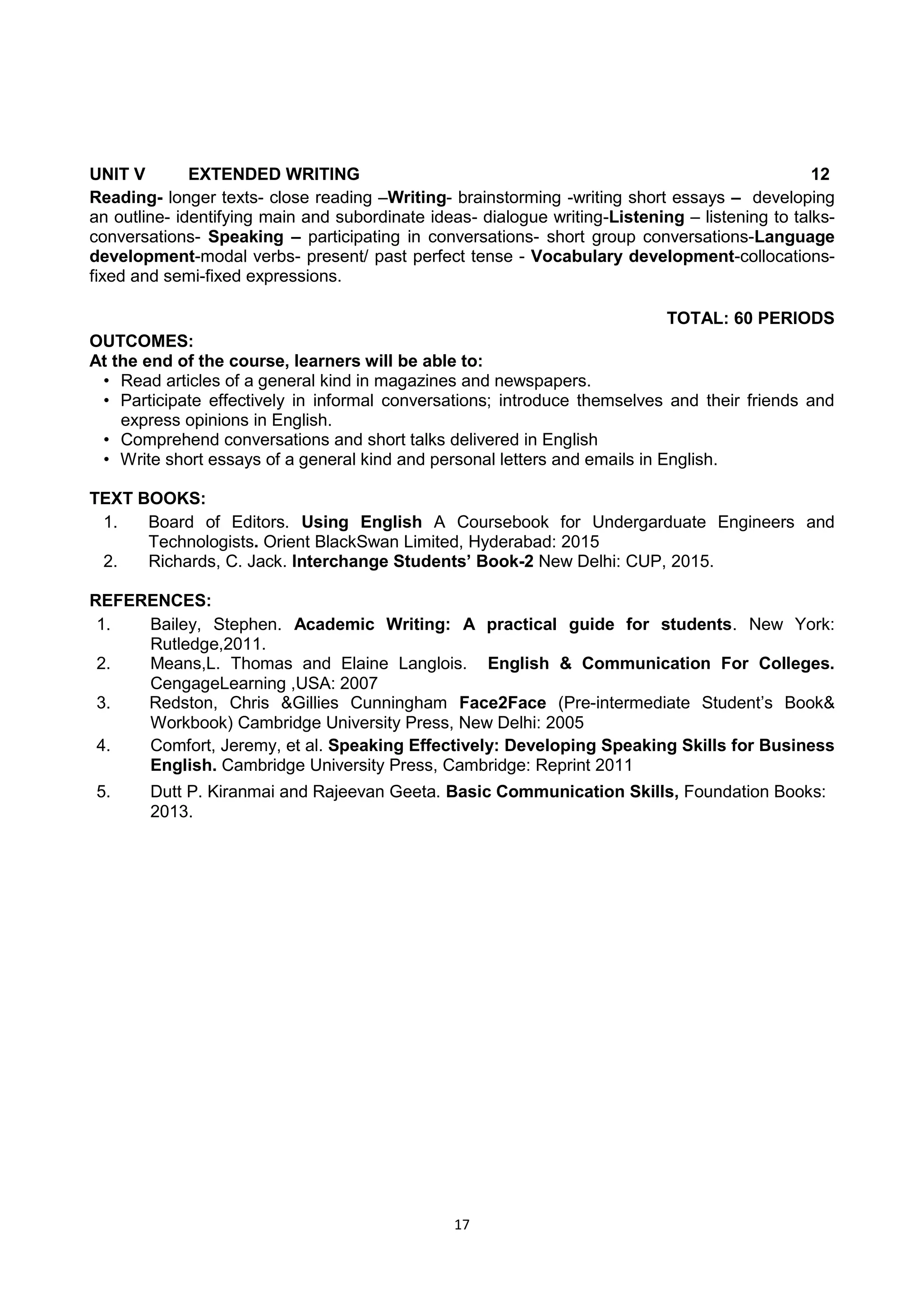
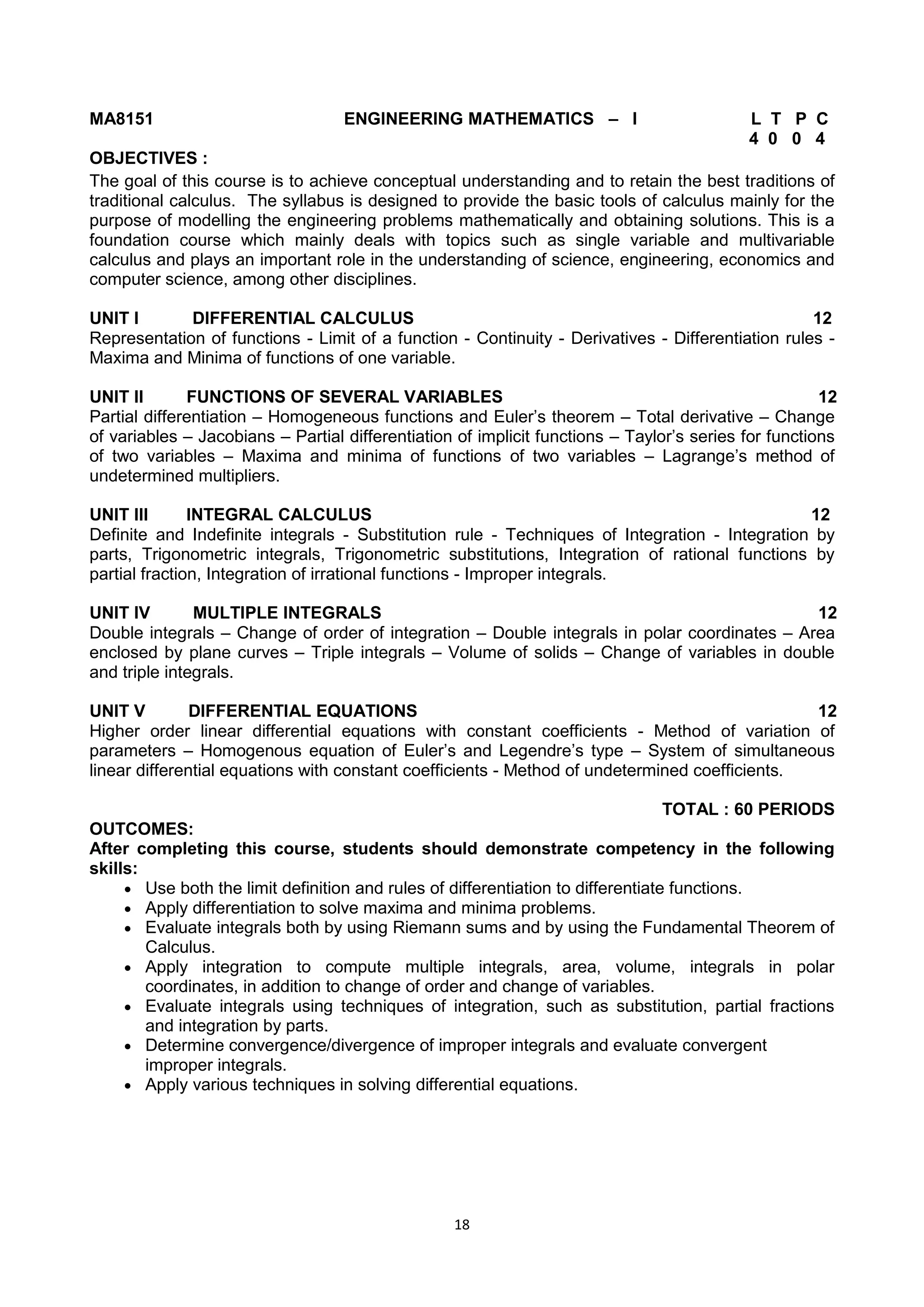
![19
TEXT BOOKS :
1. Grewal B.S., ―Higher Engineering Mathematics‖, Khanna Publishers, New Delhi, 43rd
Edition,
2014.
2. James Stewart, "Calculus: Early Transcendentals", Cengage Learning, 7th
Edition, New
Delhi, 2015. [For Units I & III - Sections 1.1, 2.2, 2.3, 2.5, 2.7(Tangents problems only), 2.8,
3.1 to 3.6, 3.11, 4.1, 4.3, 5.1(Area problems only), 5.2, 5.3, 5.4 (excluding net change
theorem), 5.5, 7.1 - 7.4 and 7.8].
REFERENCES :
1. Anton, H, Bivens, I and Davis, S, "Calculus", Wiley, 10th
Edition, 2016.
2. Jain R.K. and Iyengar S.R.K., ―Advanced Engineering Mathematics‖, Narosa Publications,
New Delhi, 3rd
Edition, 2007.
3. Narayanan, S. and Manicavachagom Pillai, T. K., ―Calculus" Volume I and II,
S. Viswanathan Publishers Pvt. Ltd., Chennai, 2007.
4. Srimantha Pal and Bhunia, S.C, "Engineering Mathematics" Oxford University Press, 2015.
5. Weir, M.D and Joel Hass, "Thomas Calculus", 12th
Edition, Pearson India, 2016.
PH8151 ENGINEERING PHYSICS
L T P C
3 0 0 3
OBJECTIVES:
To enhance the fundamental knowledge in Physics and its applications relevant to various
streams of Engineering and Technology.
UNIT I PROPERTIES OF MATTER 9
Elasticity – Stress-strain diagram and its uses - factors affecting elastic modulus and tensile
strength – torsional stress and deformations – twisting couple - torsion pendulum: theory and
experiment - bending of beams - bending moment – cantilever: theory and experiment –
uniform and non-uniform bending: theory and experiment - I-shaped girders - stress due to
bending in beams.
UNIT II WAVES AND FIBER OPTICS 9
Oscillatory motion – forced and damped oscillations: differential equation and its solution –
plane progressive waves – wave equation. Lasers : population of energy levels, Einstein‘s A
and B coefficients derivation – resonant cavity, optical amplification (qualitative) –
Semiconductor lasers: homojunction and heterojunction – Fiber optics: principle, numerical
aperture and acceptance angle - types of optical fibres (material, refractive index, mode) –
losses associated with optical fibers - fibre optic sensors: pressure and displacement.
UNIT III THERMAL PHYSICS 9
Transfer of heat energy – thermal expansion of solids and liquids – expansion joints - bimetallic
strips - thermal conduction, convection and radiation – heat conductions in solids – thermal
conductivity - Forbe‘s and Lee‘s disc method: theory and experiment - conduction through
compound media (series and parallel) – thermal insulation – applications: heat exchangers,
refrigerators, ovens and solar water heaters.
UNIT IV QUANTUM PHYSICS 9
Black body radiation – Planck‘s theory (derivation) – Compton effect: theory and experimental
verification – wave particle duality – electron diffraction – concept of wave function and its
physical significance – Schrödinger‘s wave equation – time independent and time dependent
equations – particle in a one-dimensional rigid box – tunnelling (qualitative) - scanning
tunnelling microscope.](https://image.slidesharecdn.com/2017regecesyllabus-190206071001/75/2017-reg-ece-syllabus-19-2048.jpg)
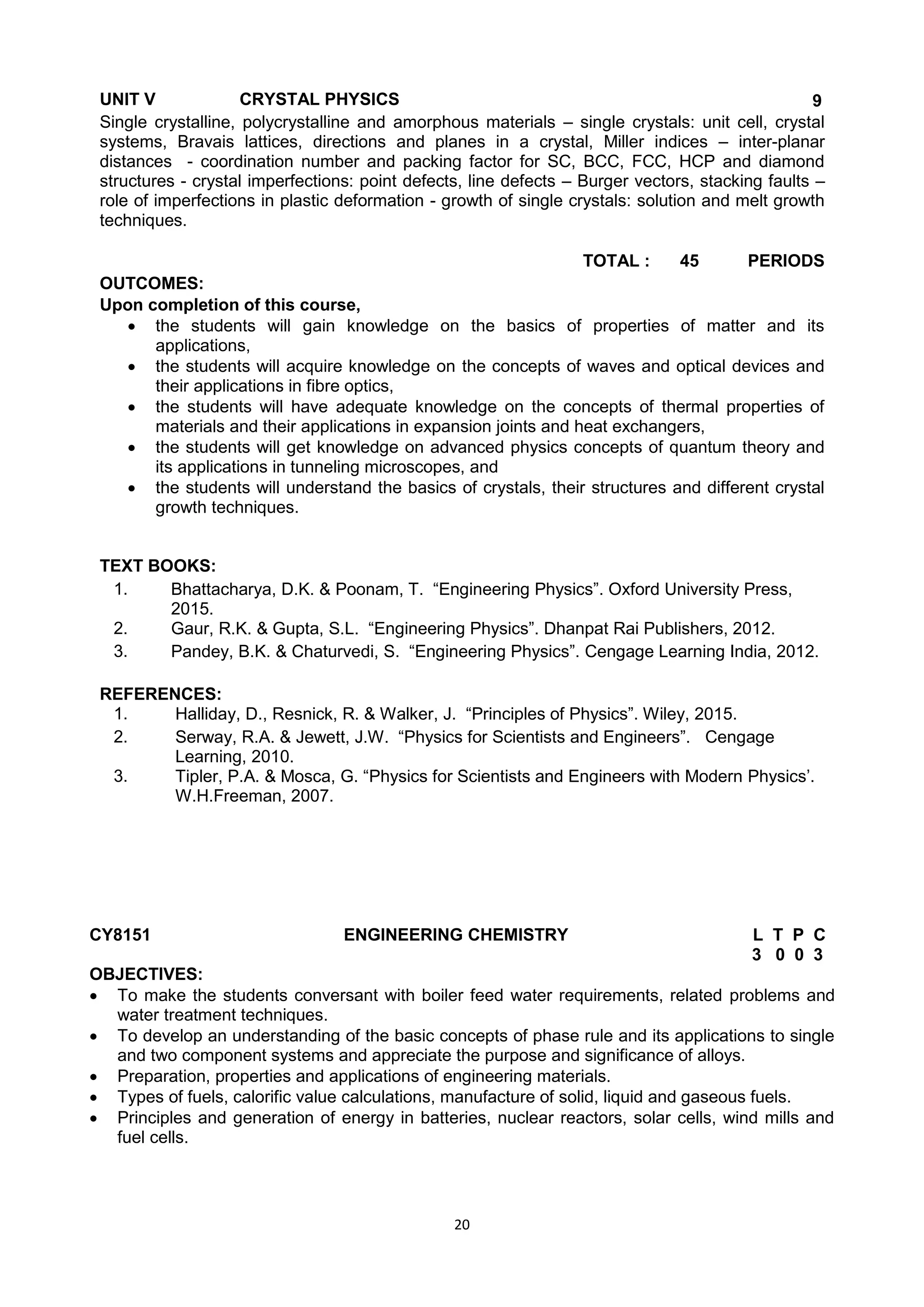
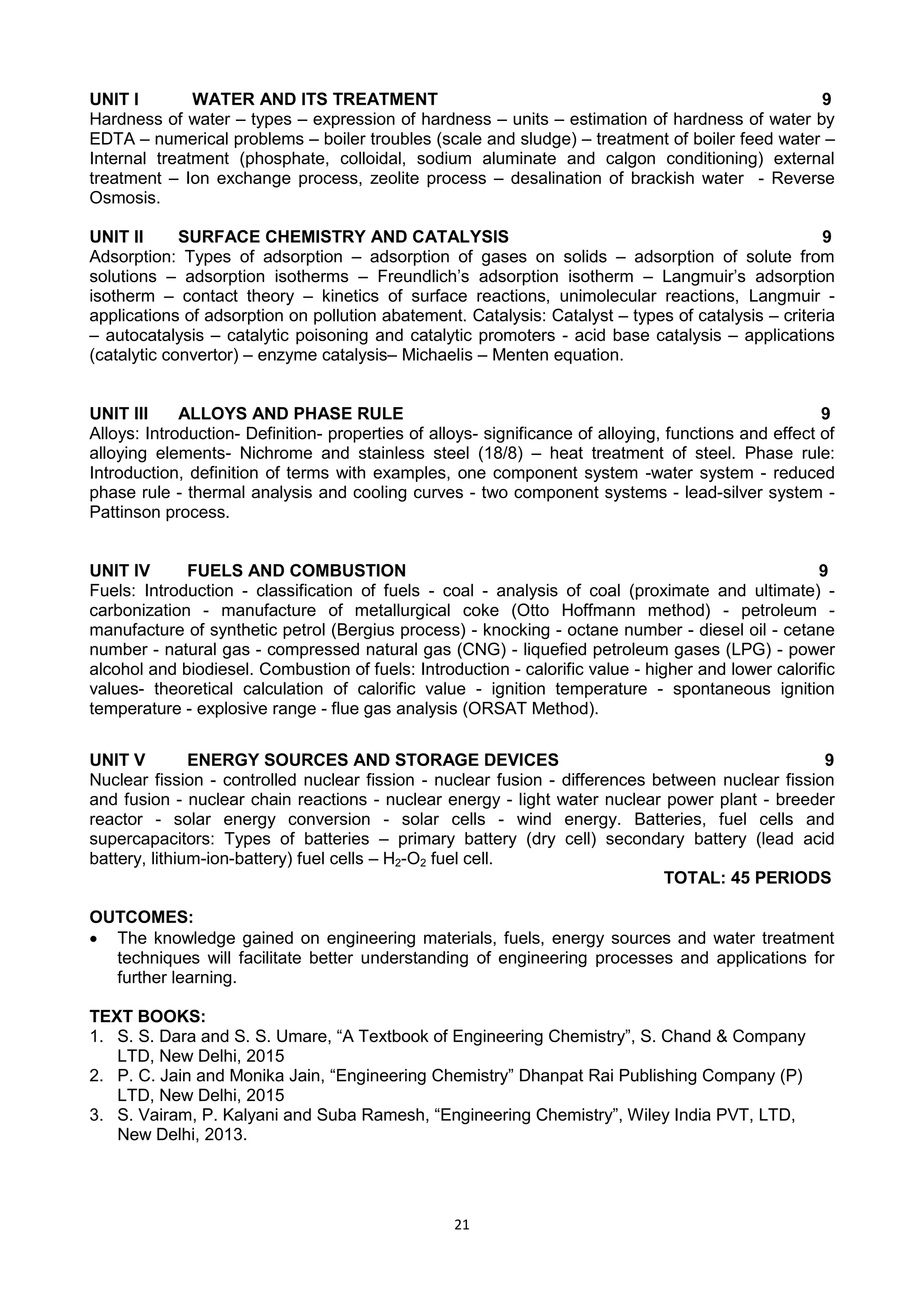
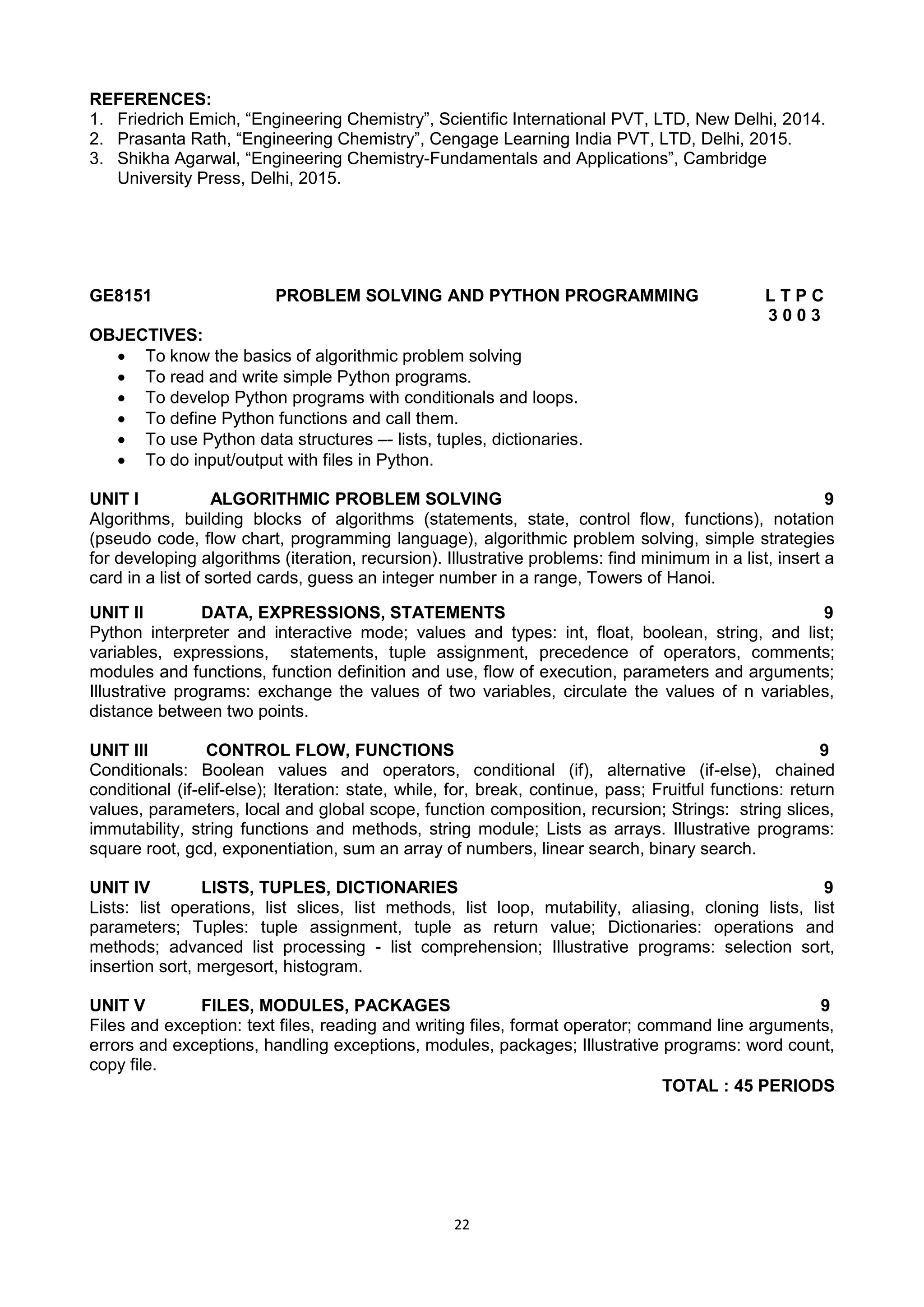
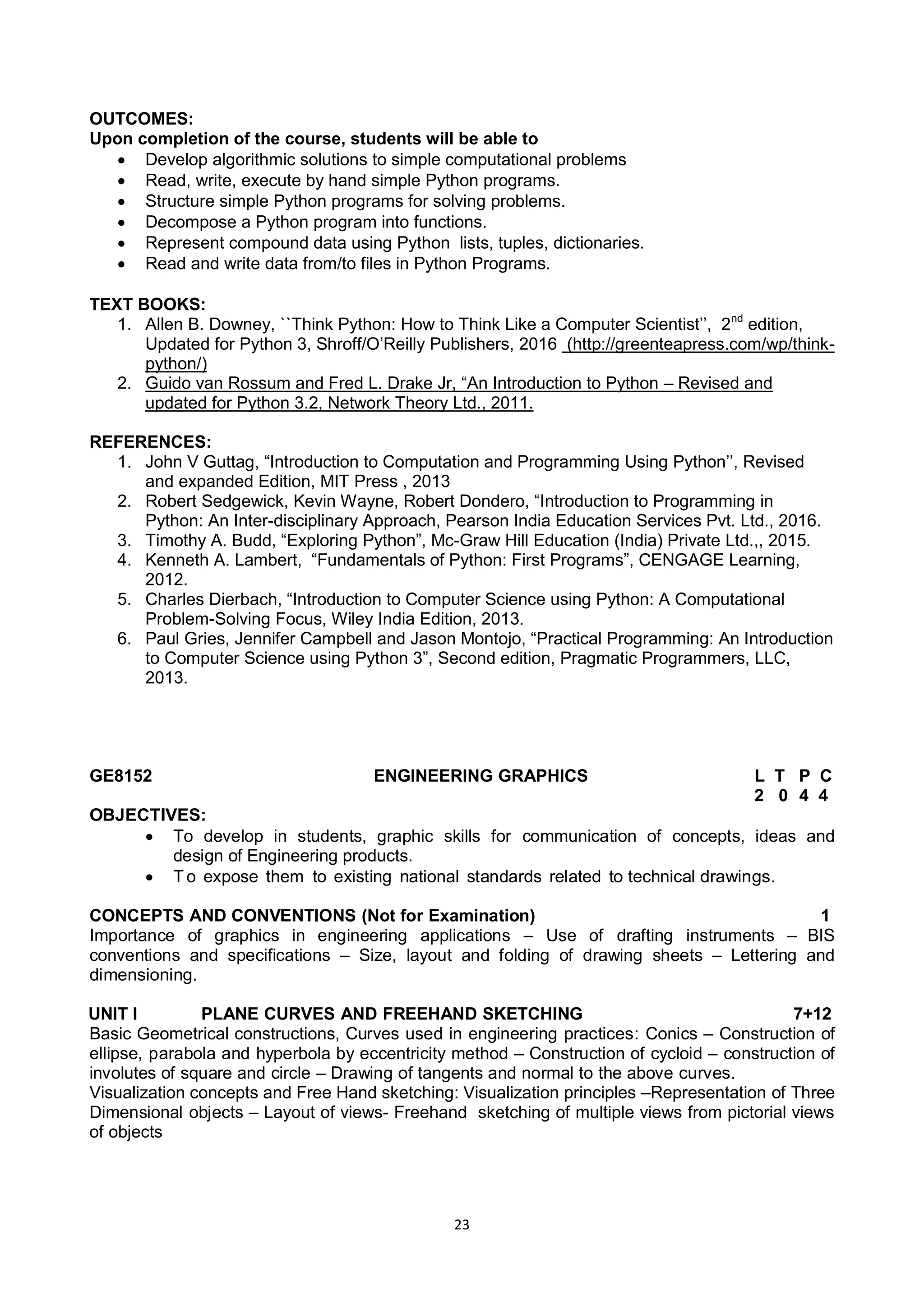
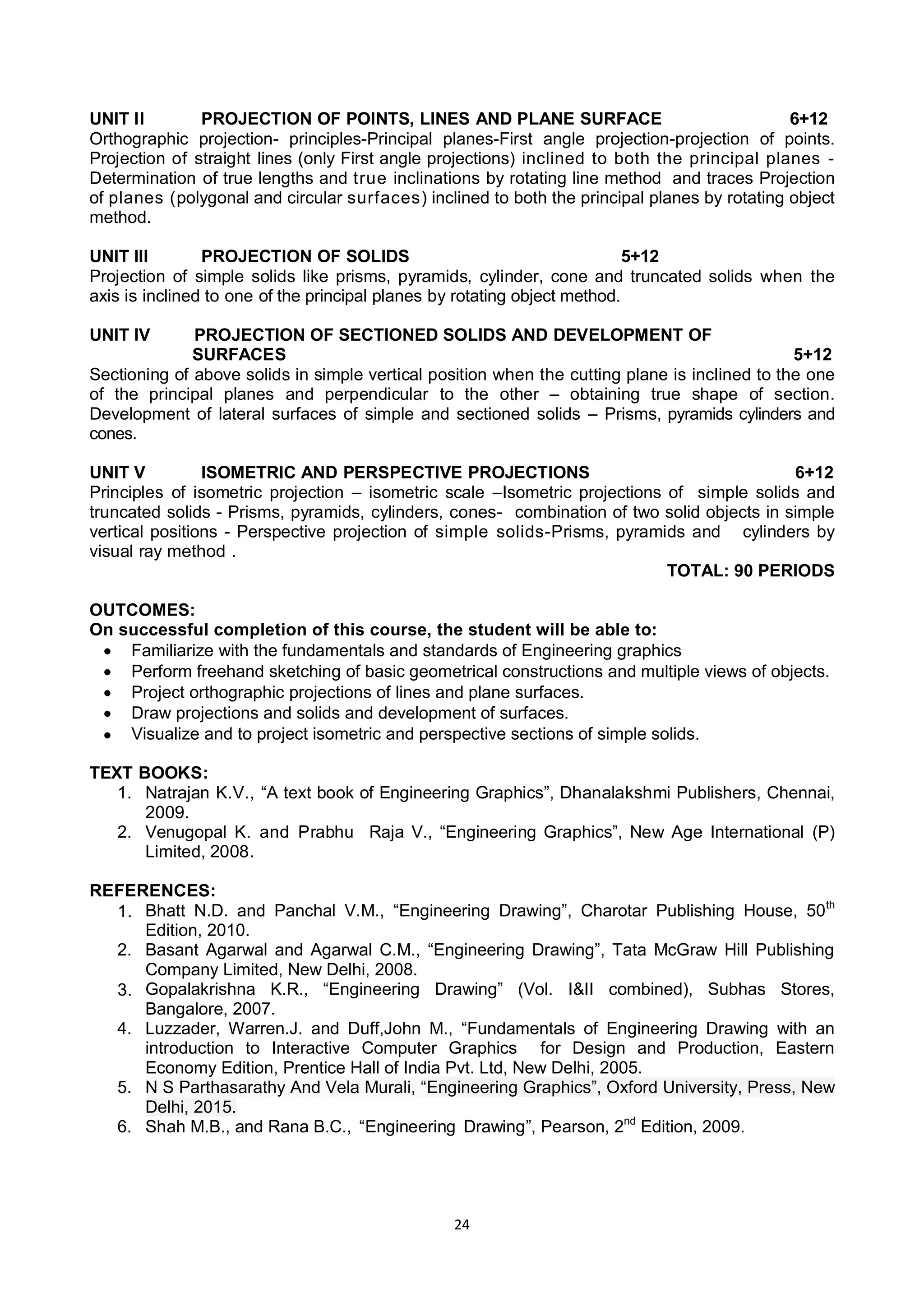
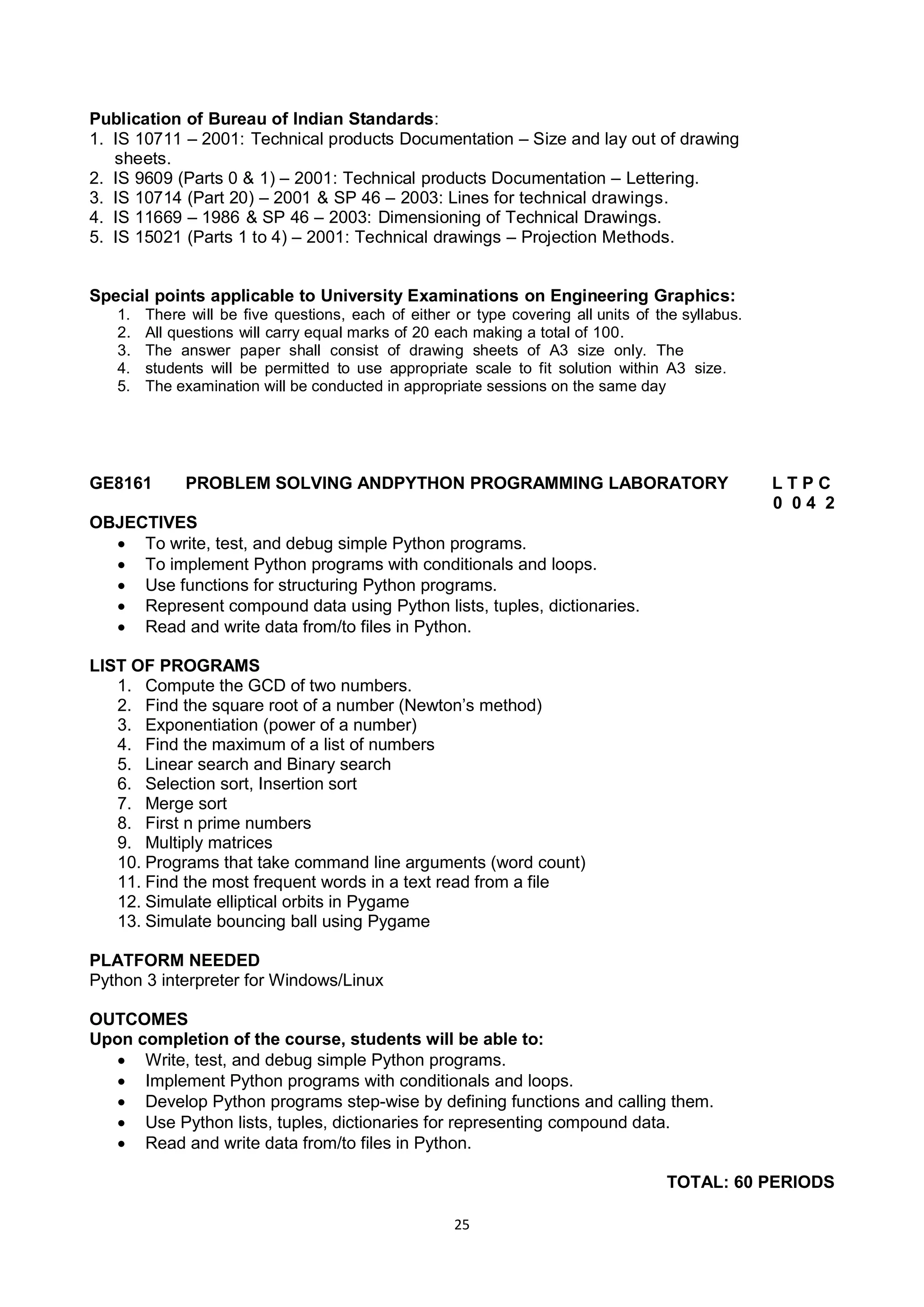
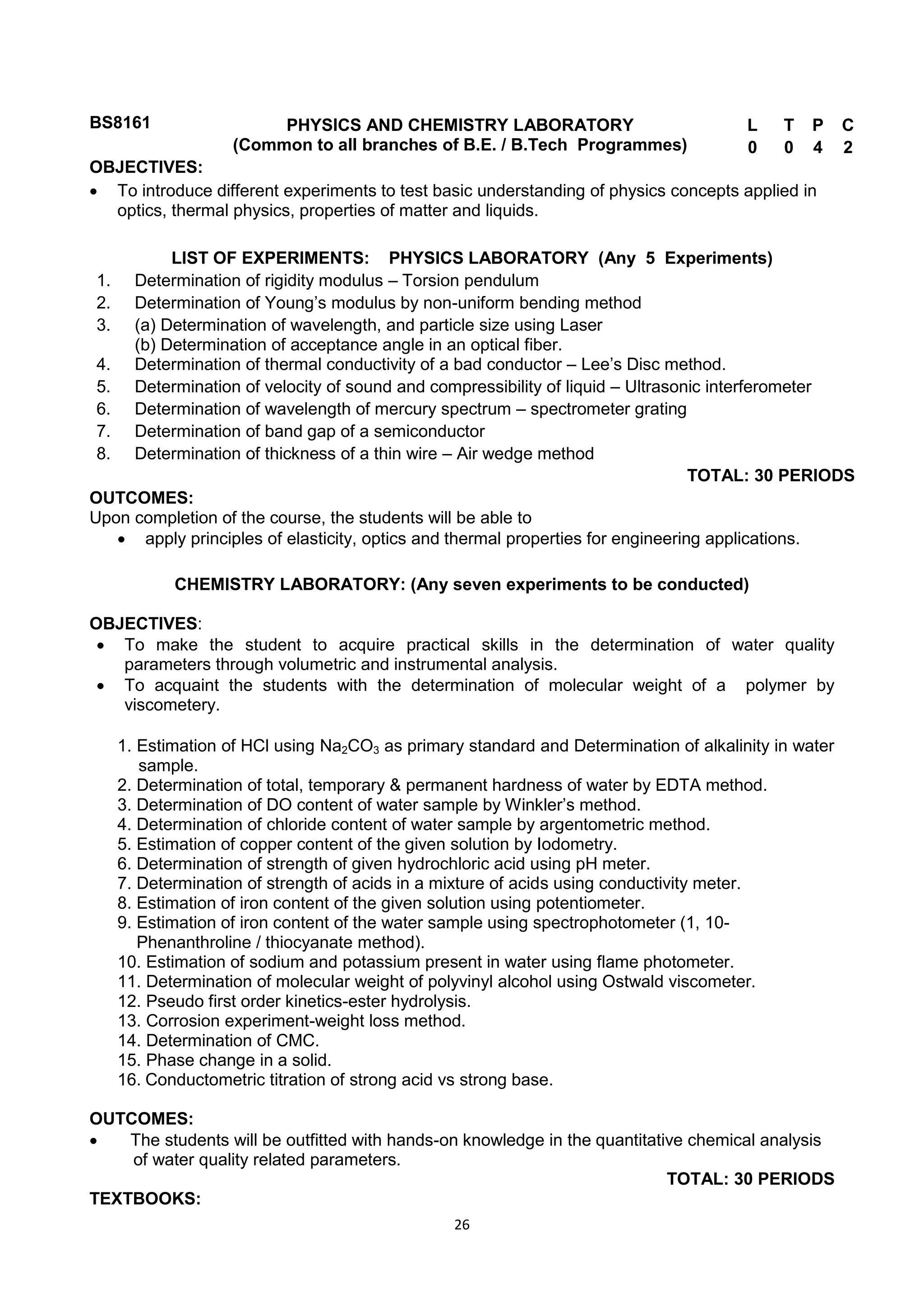
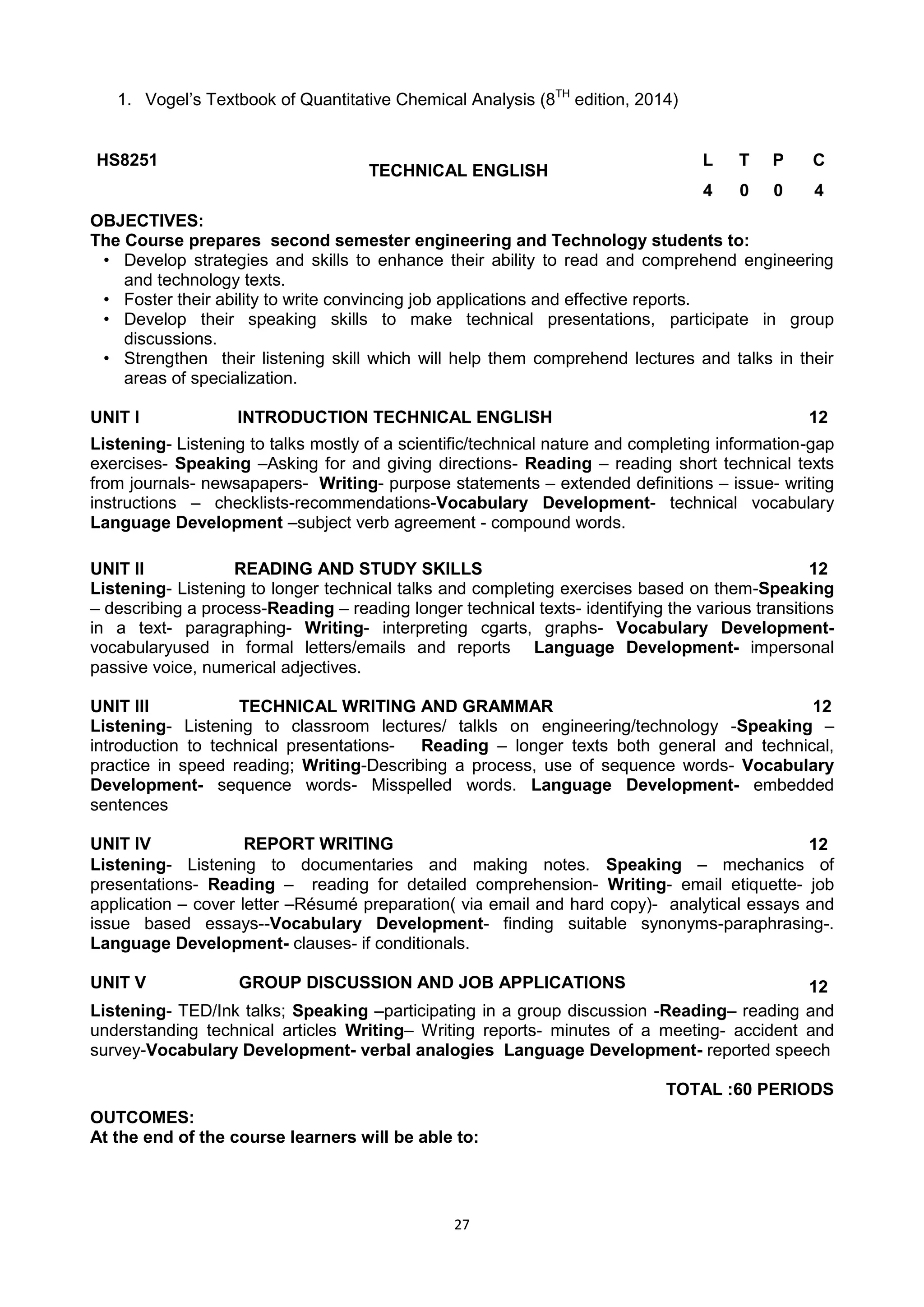
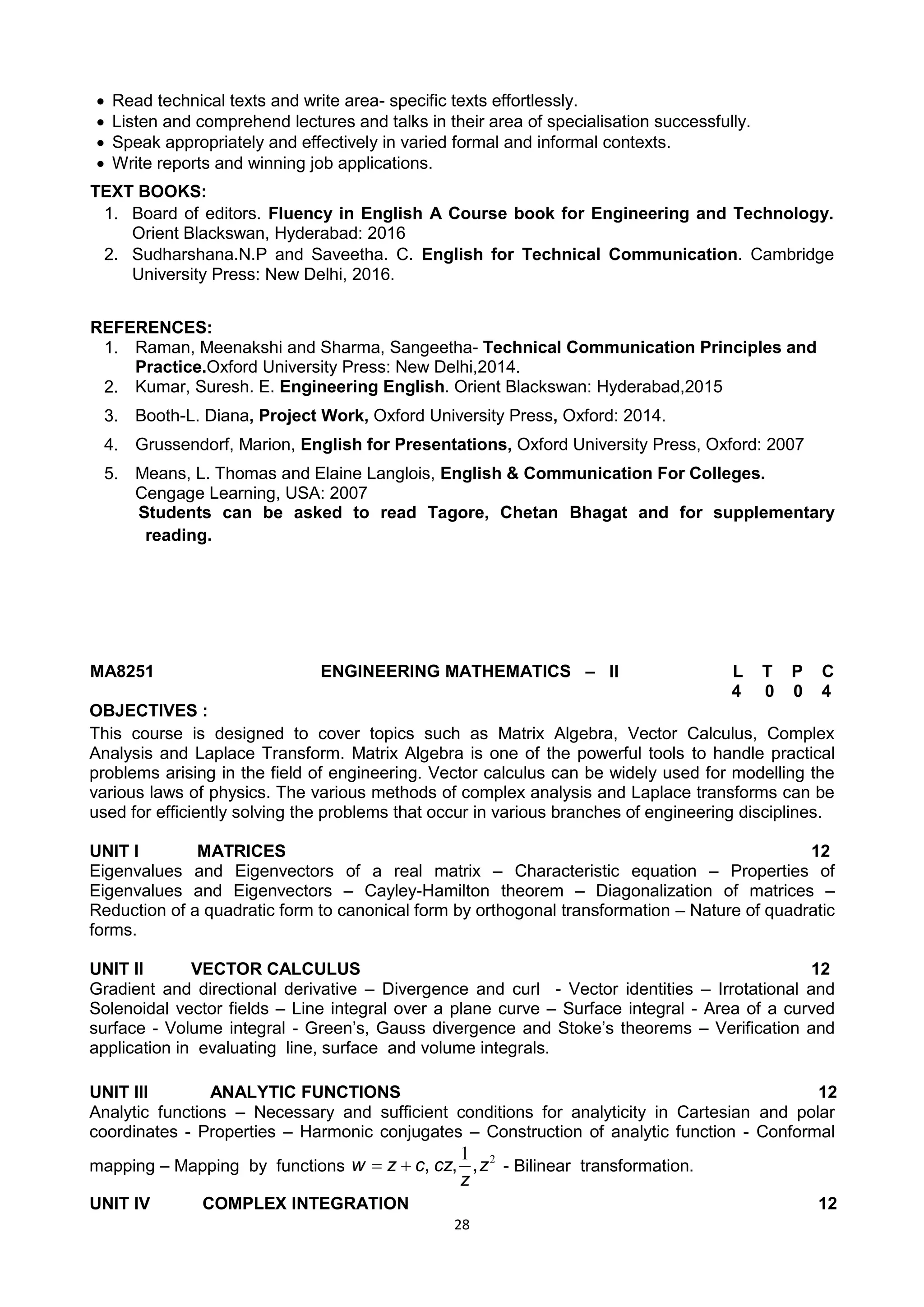

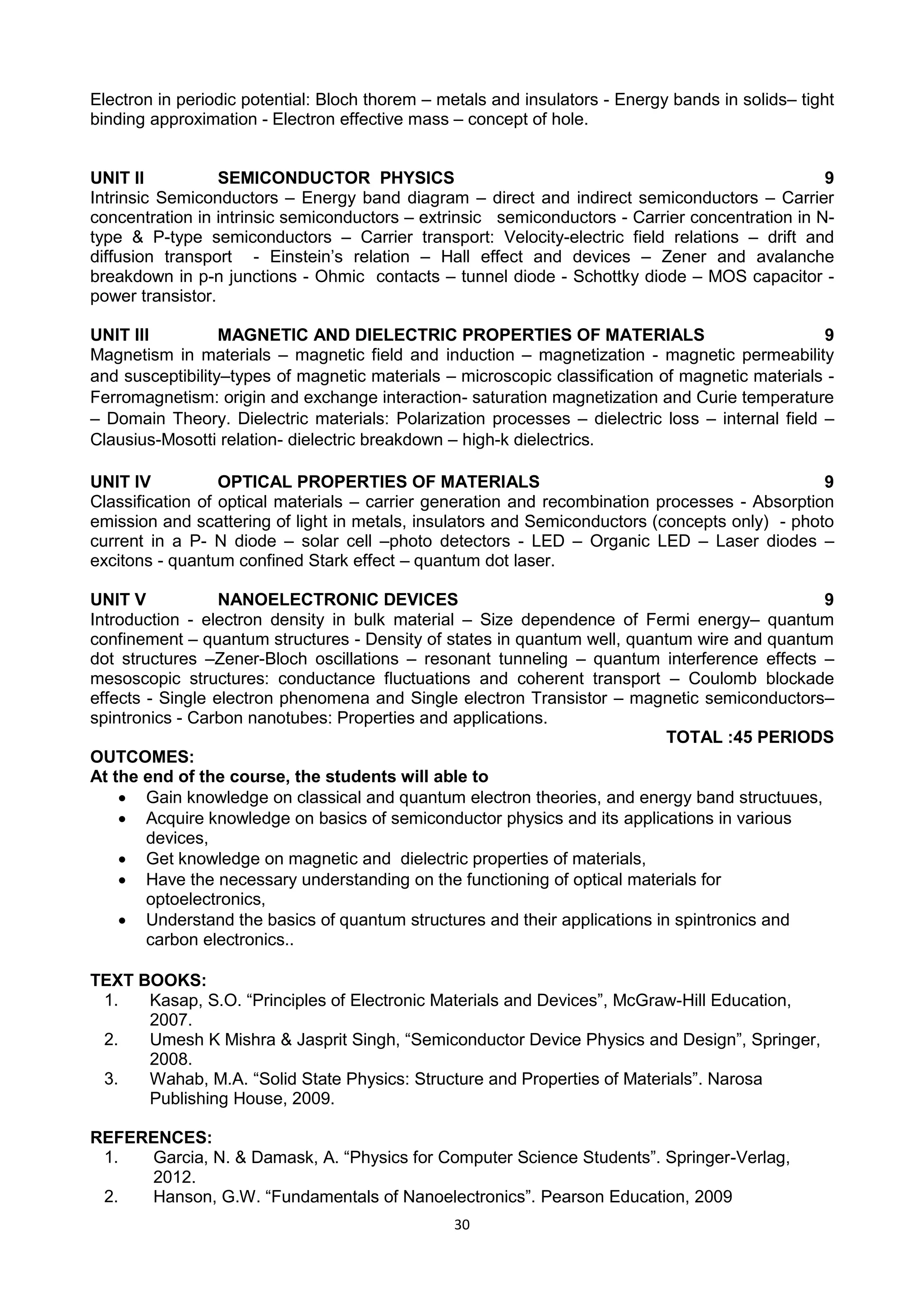
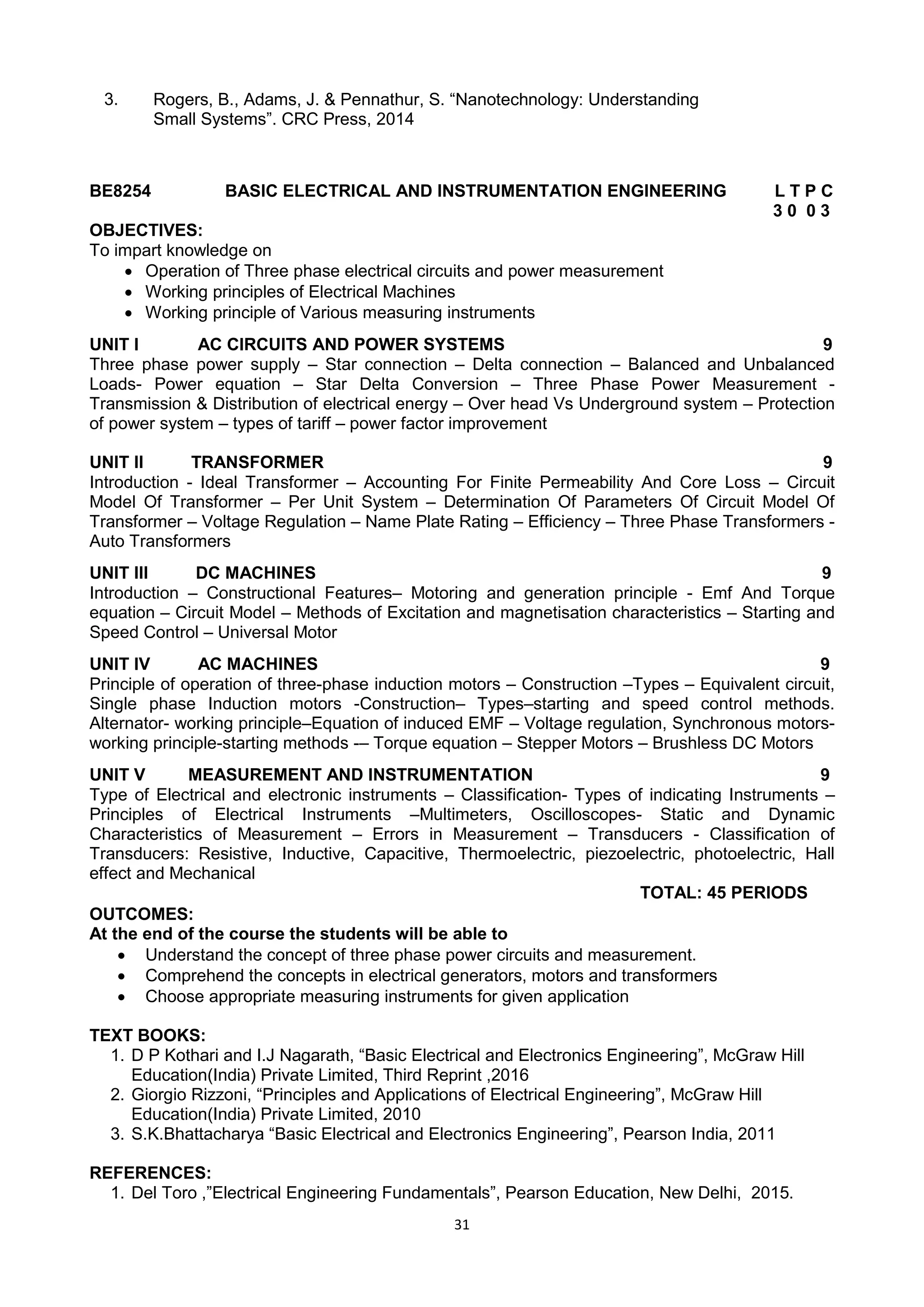
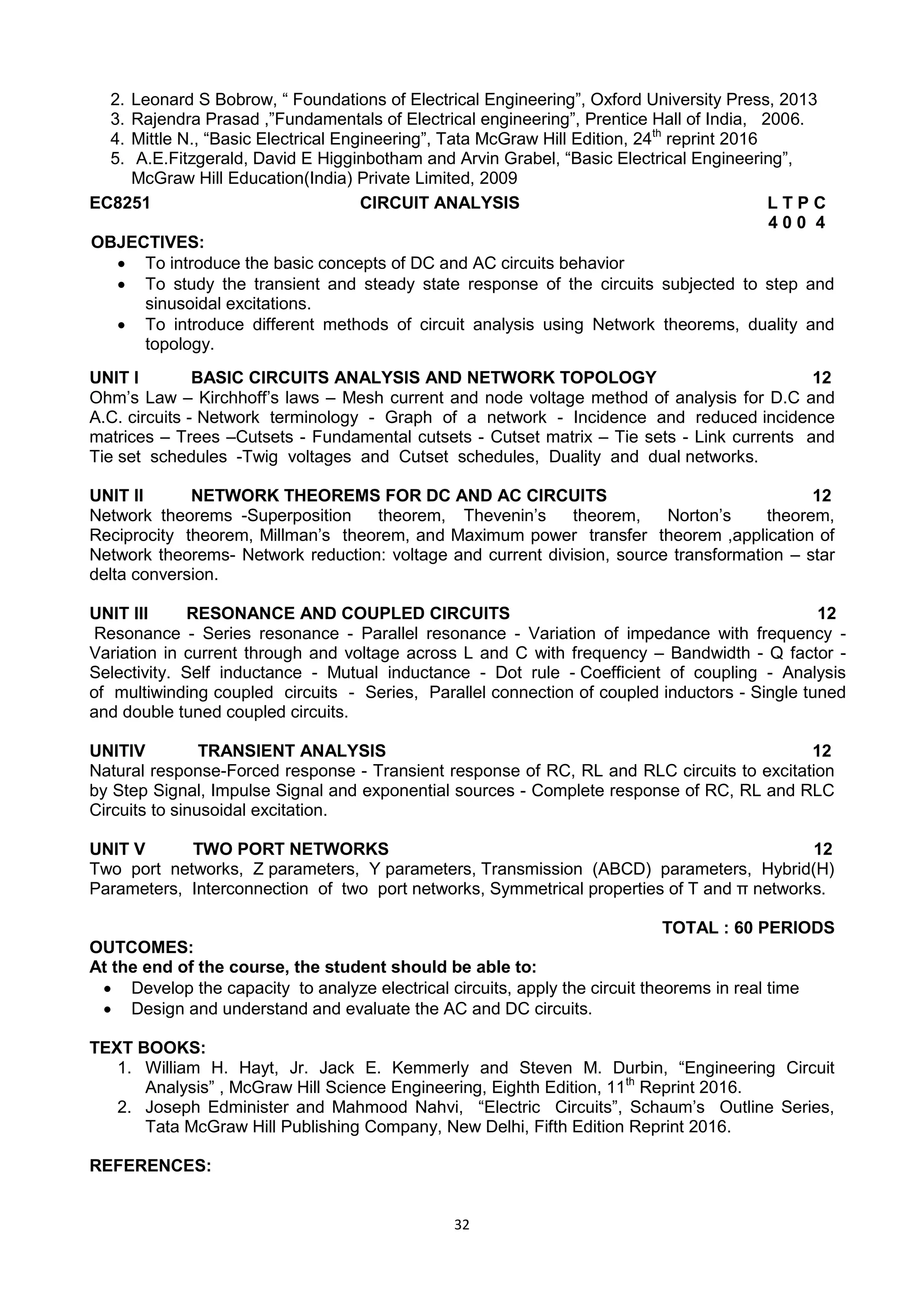

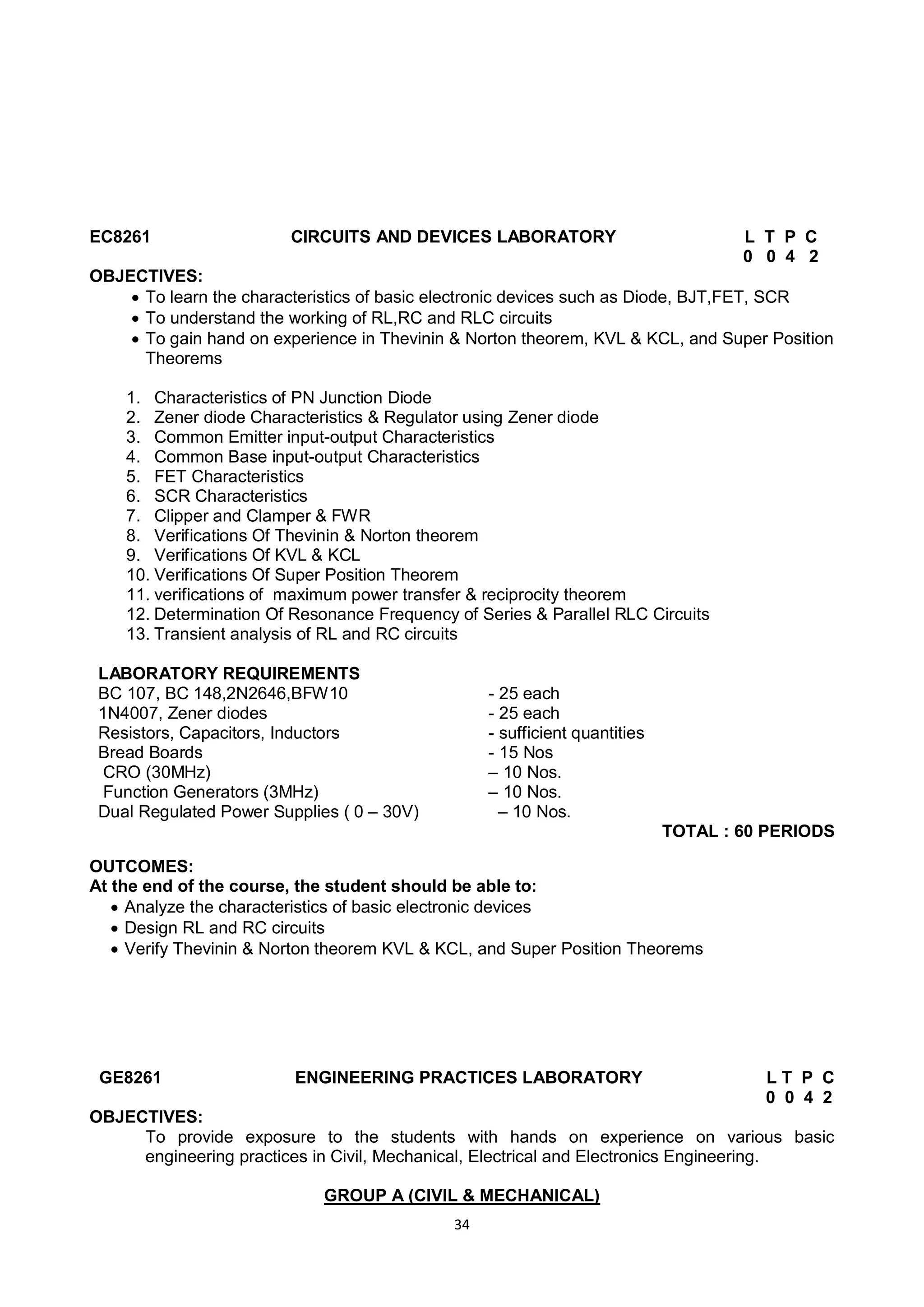
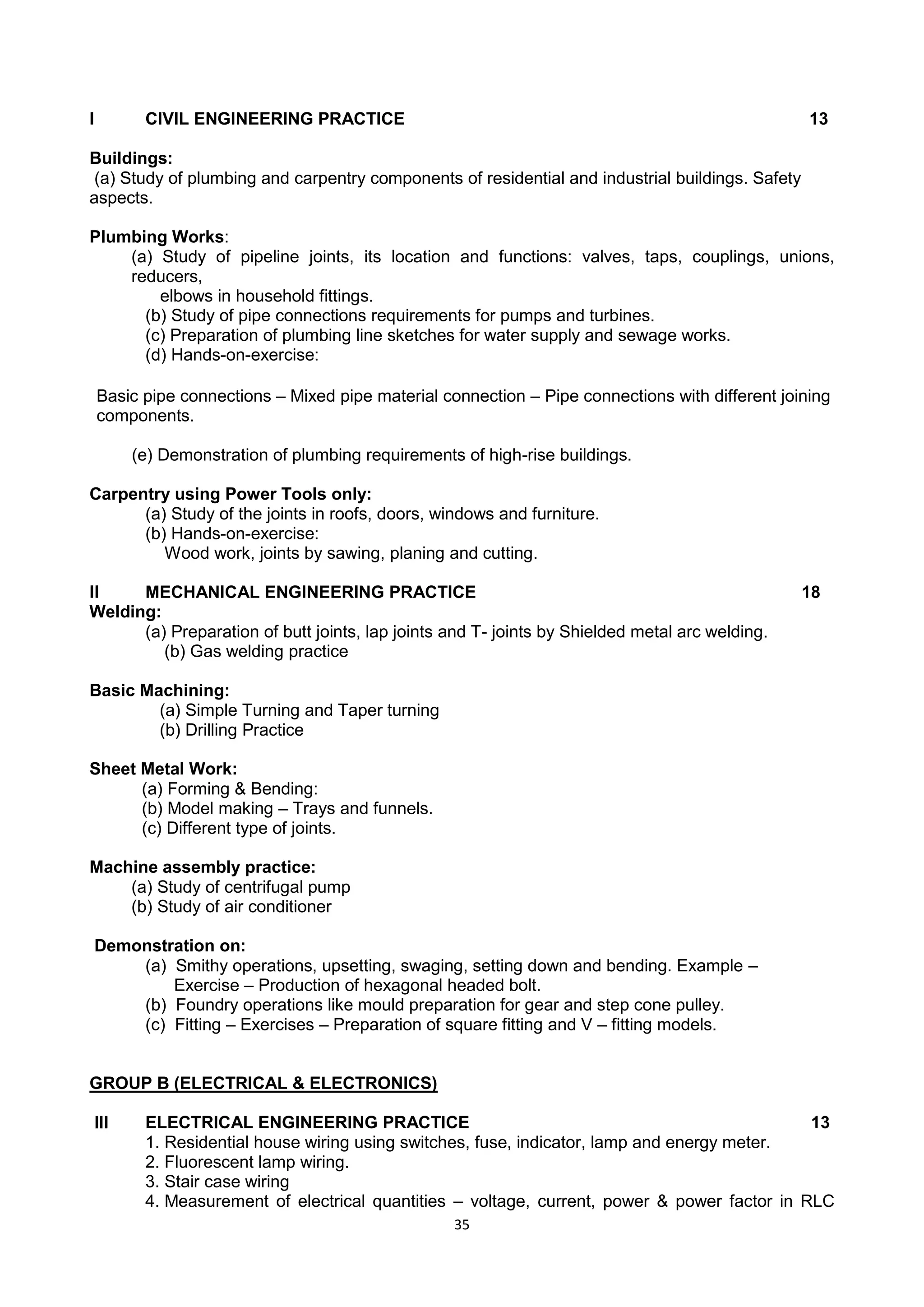
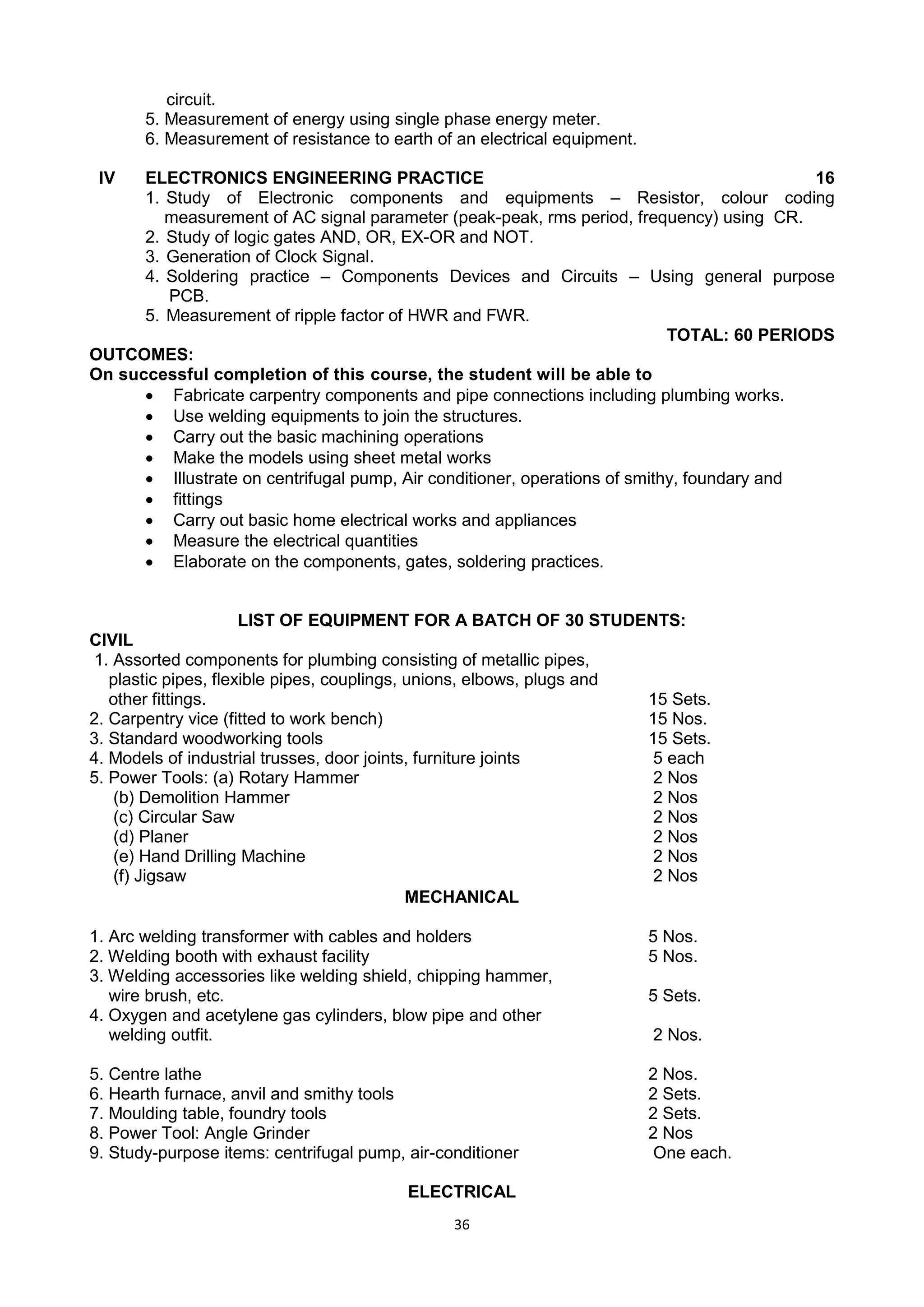
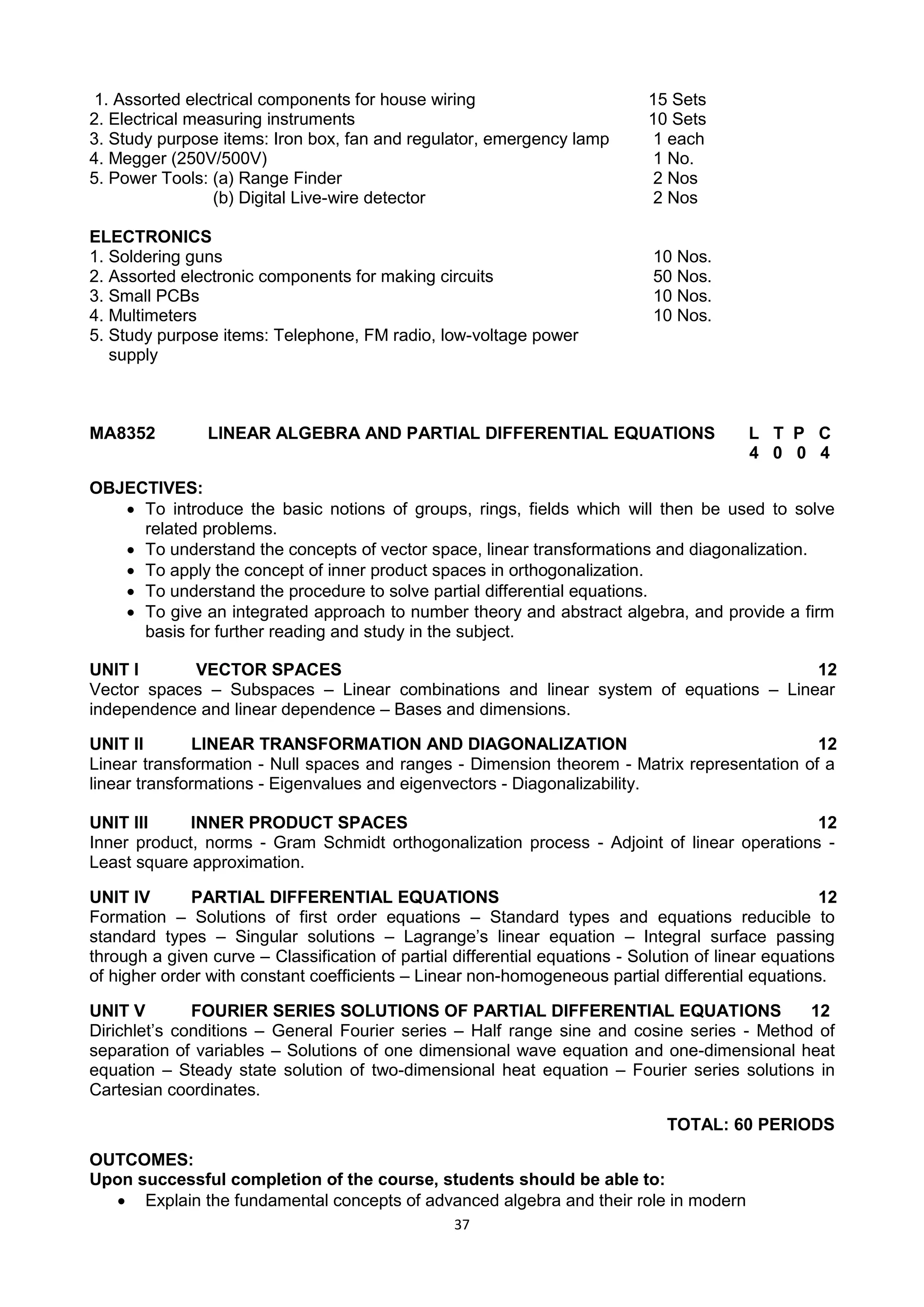

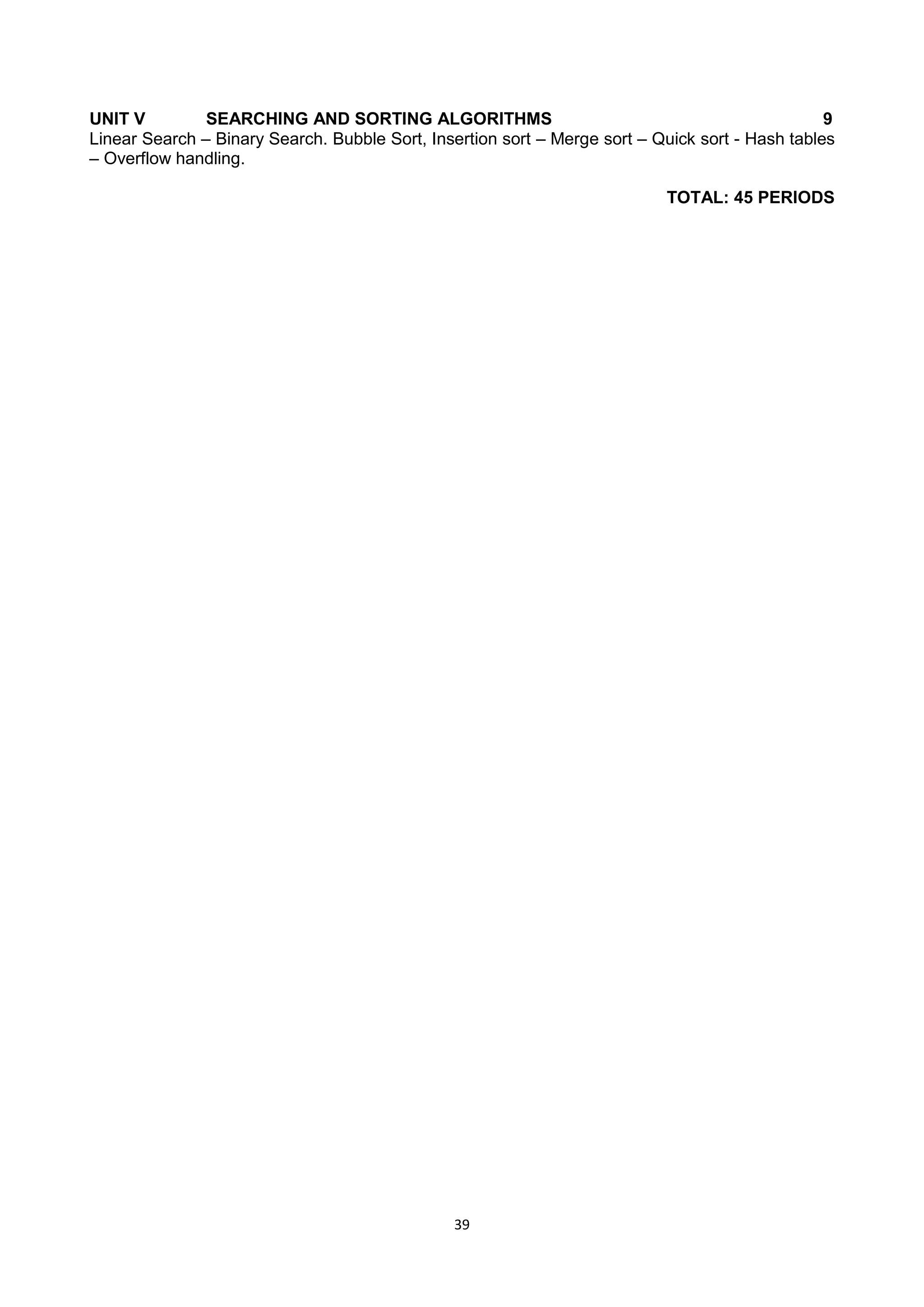
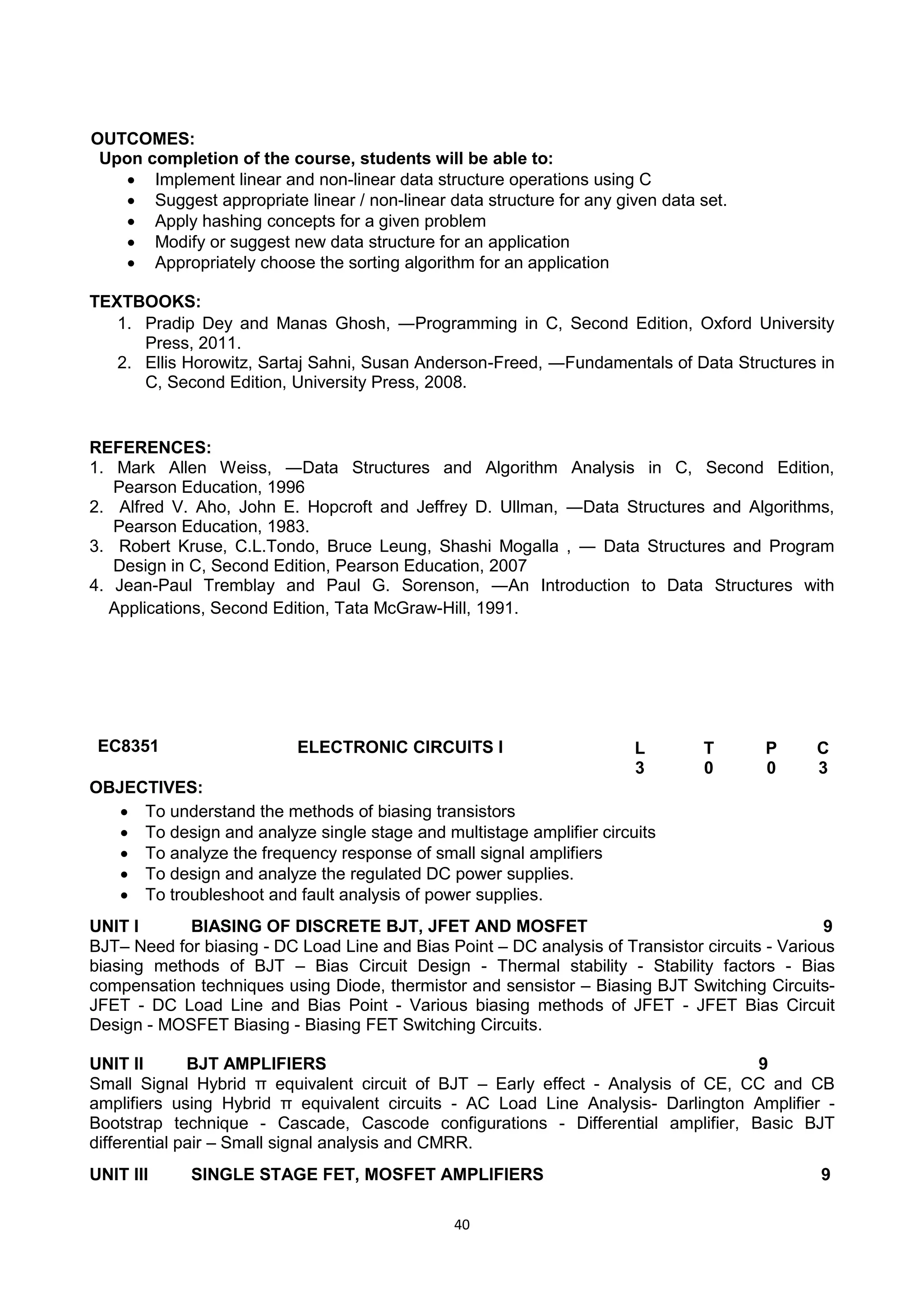
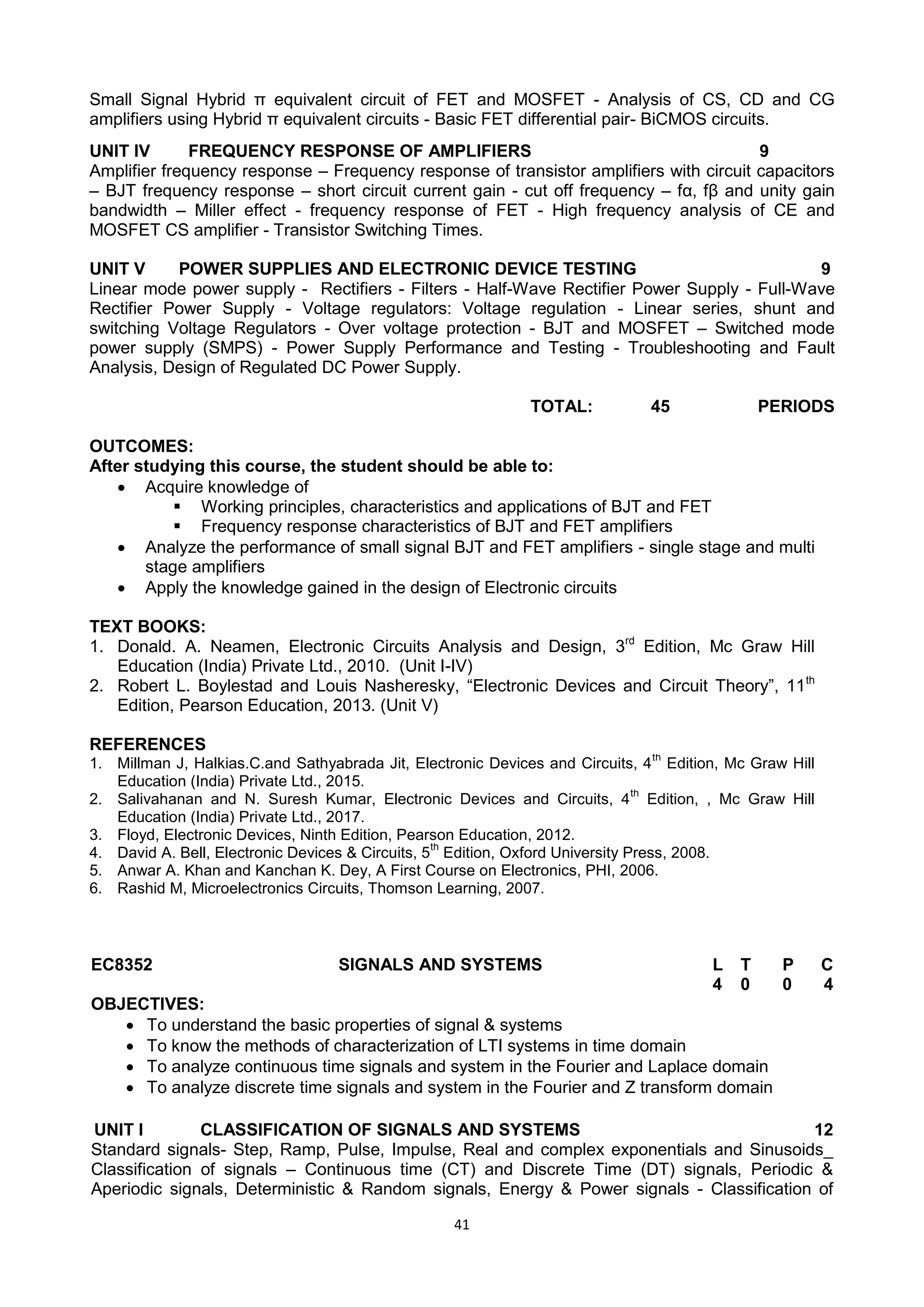
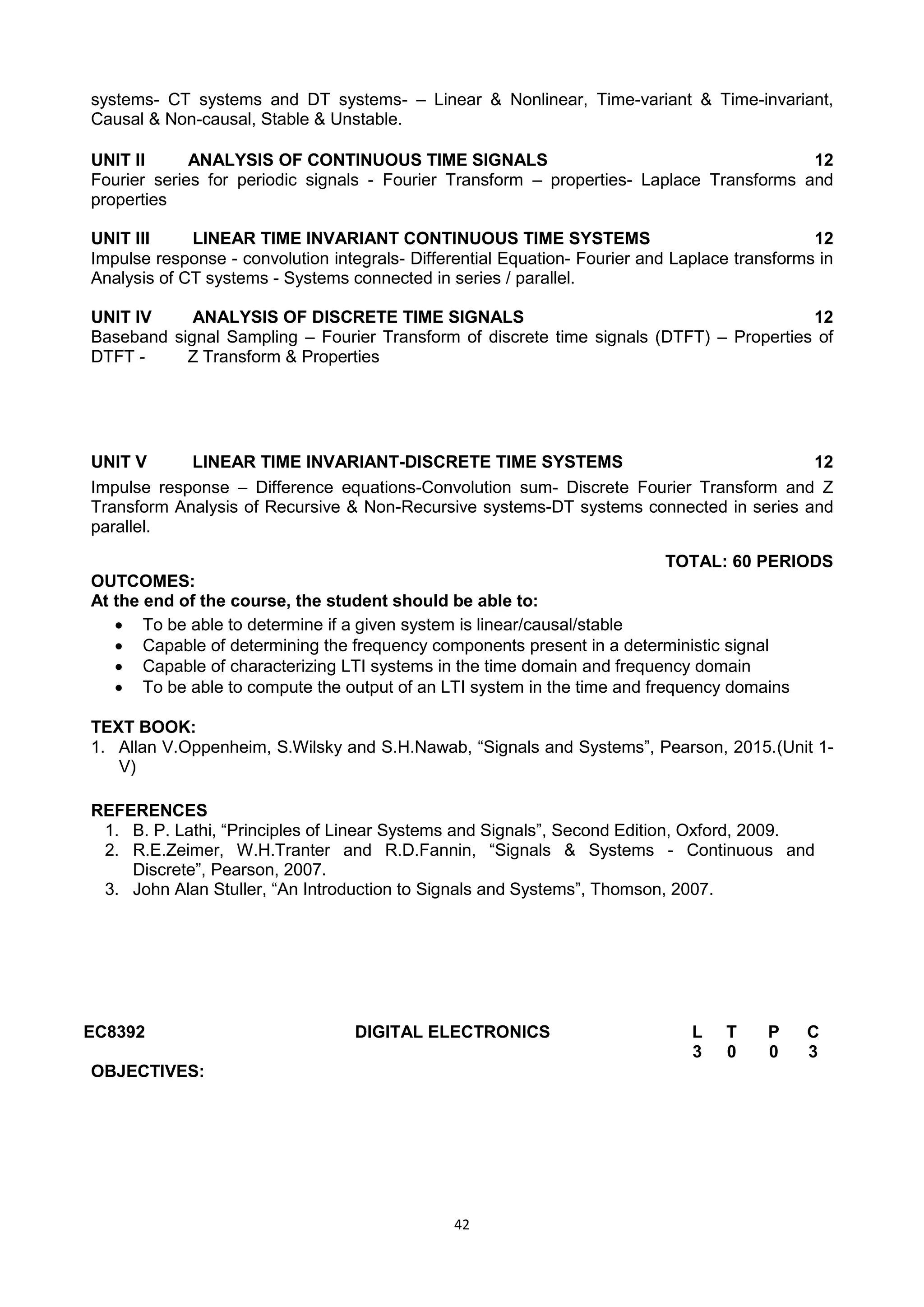


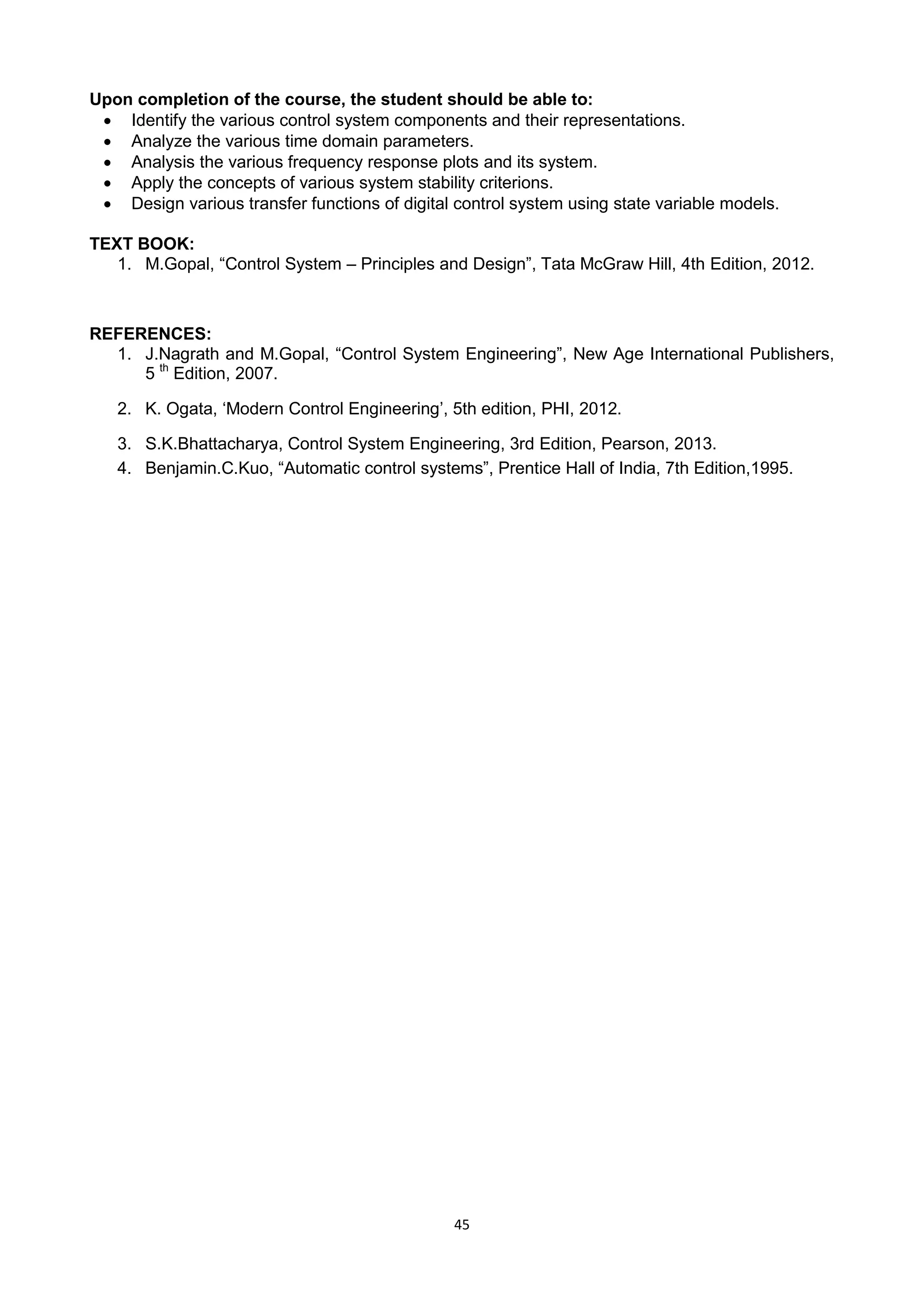

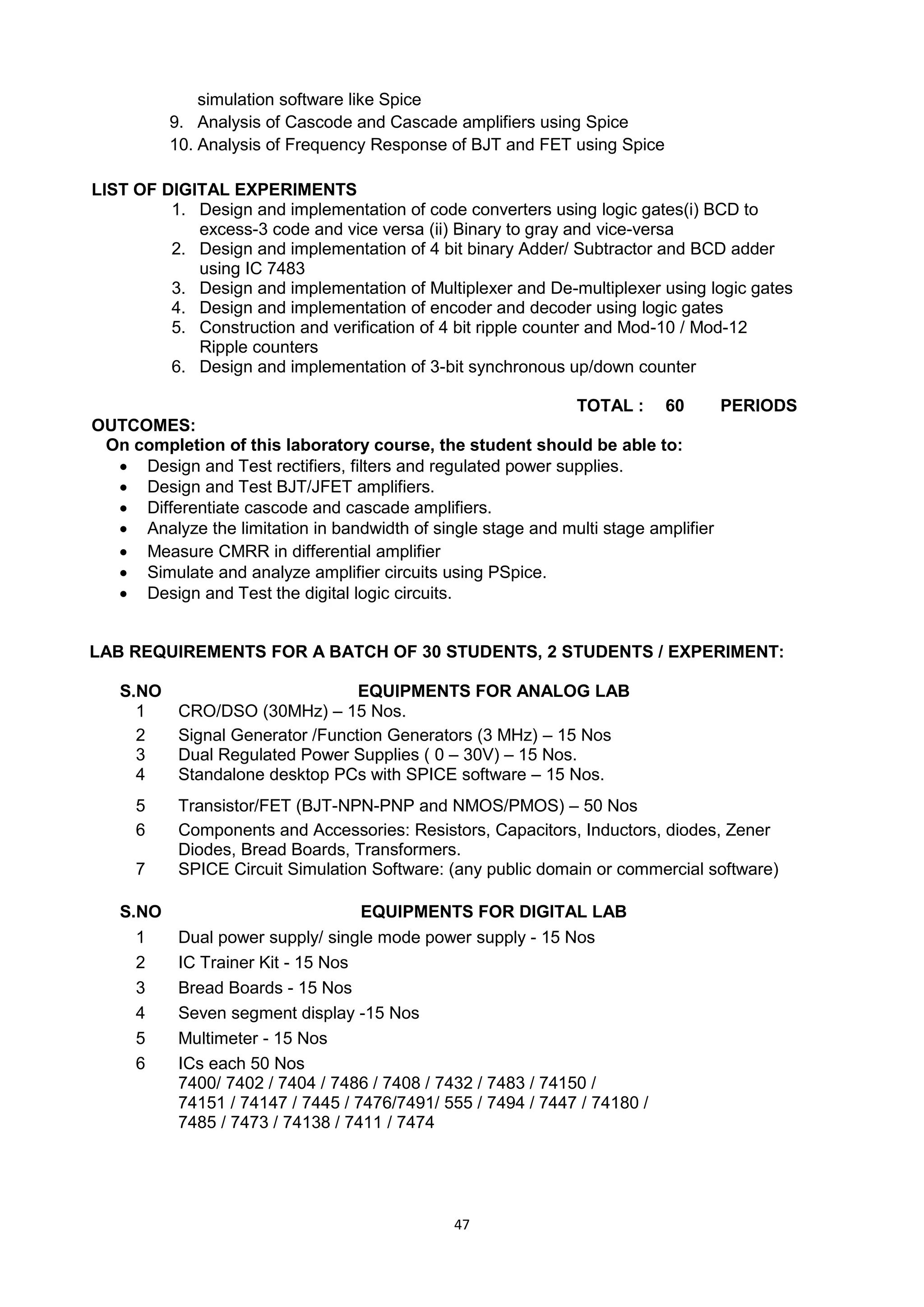

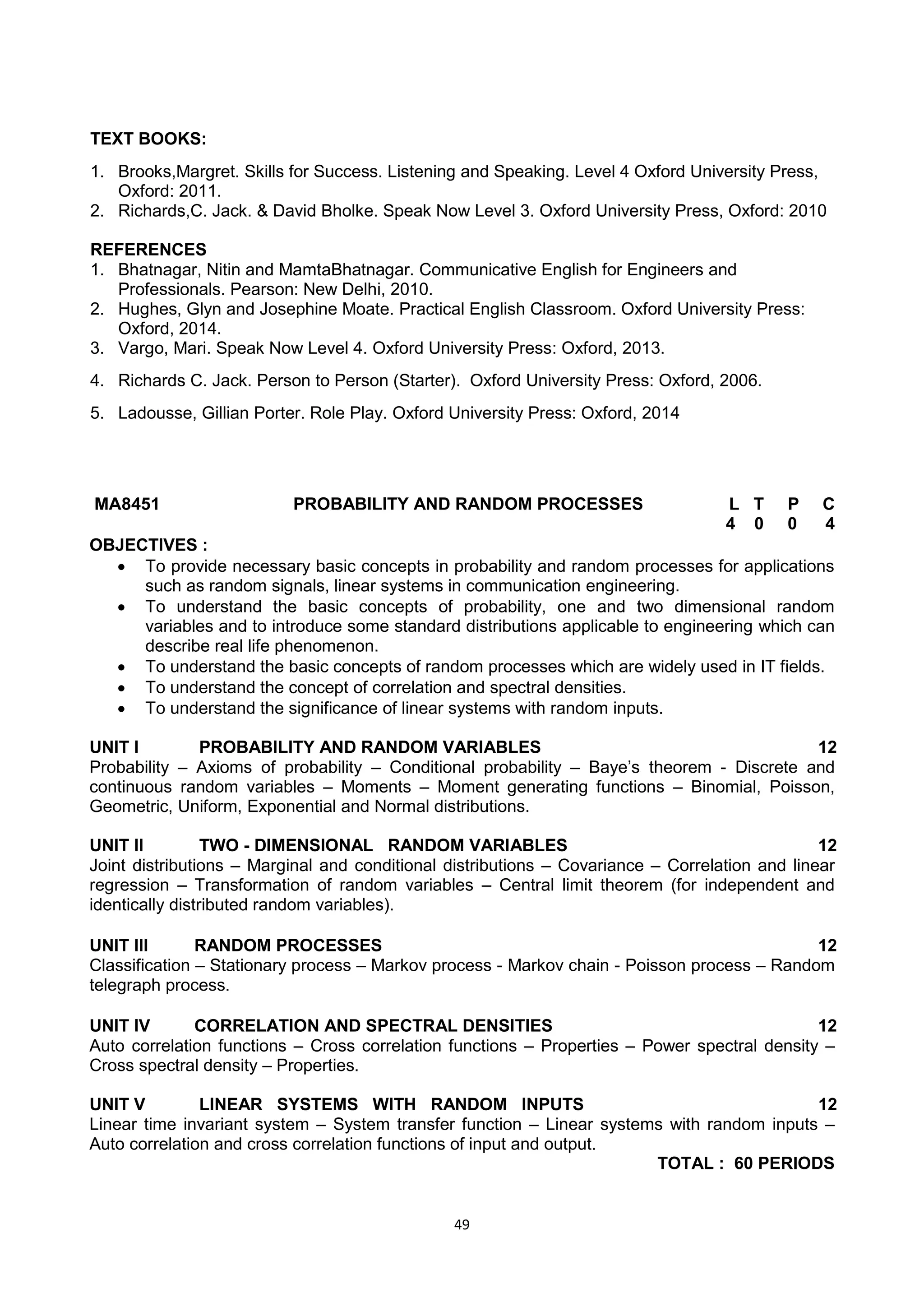
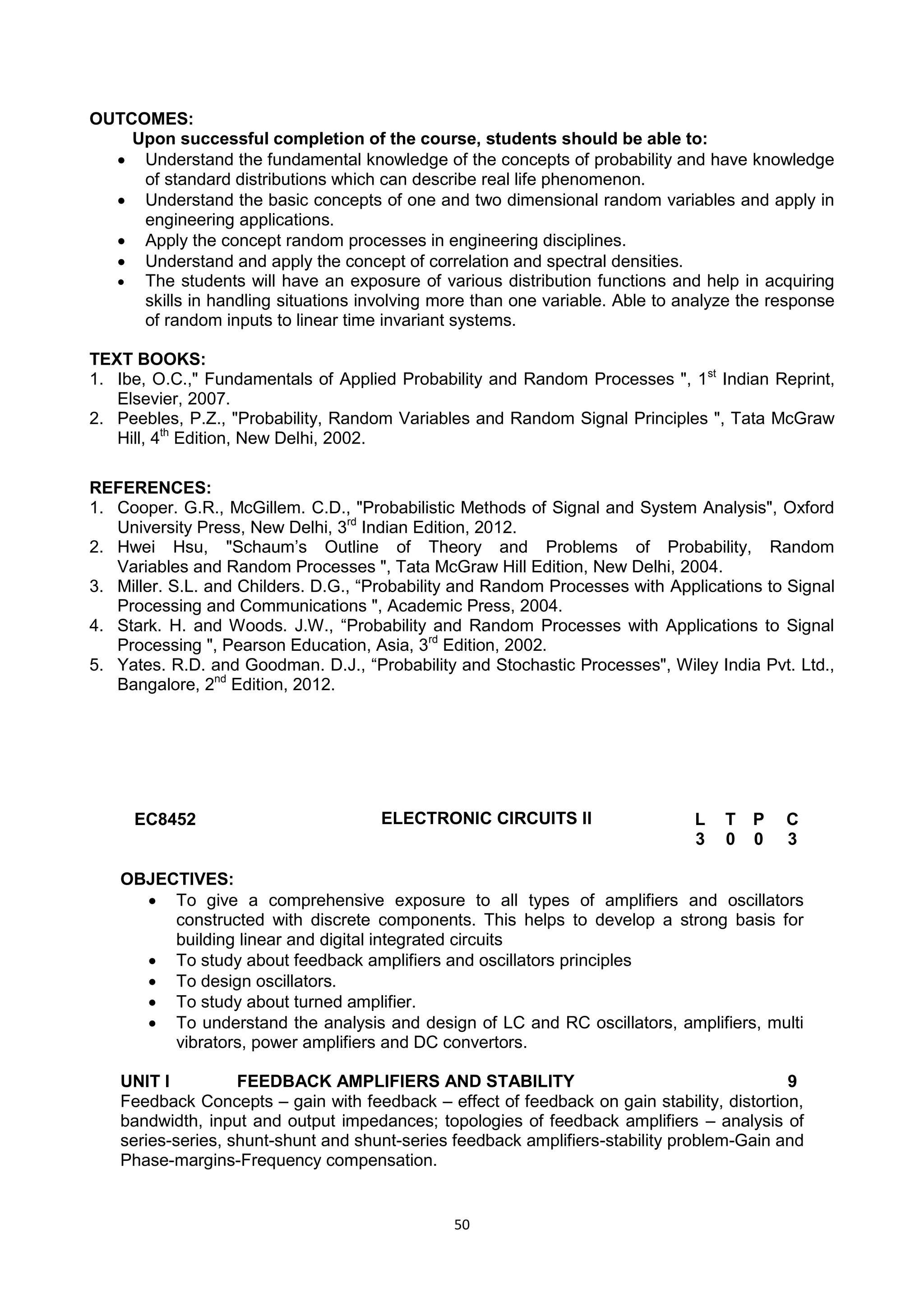
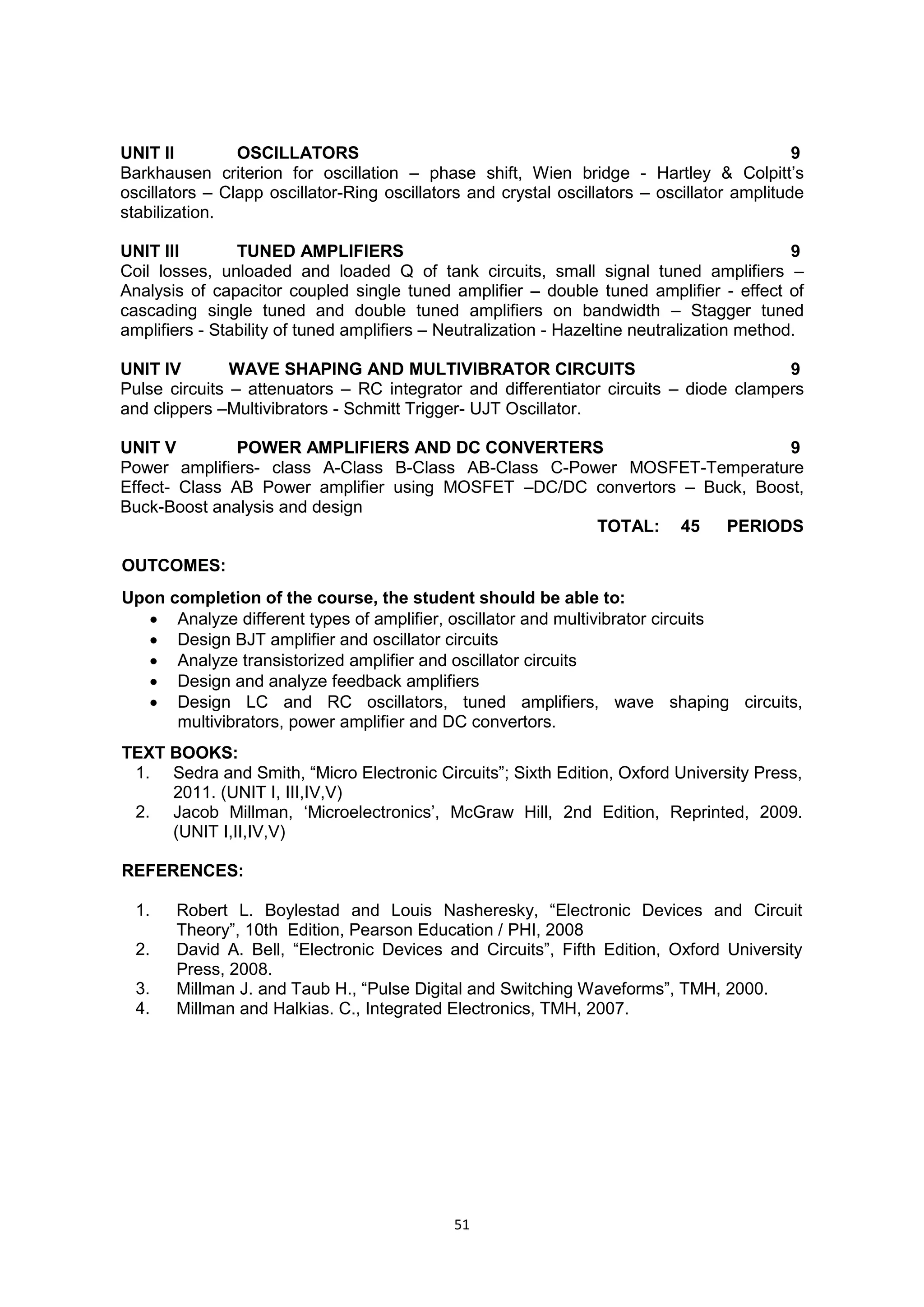
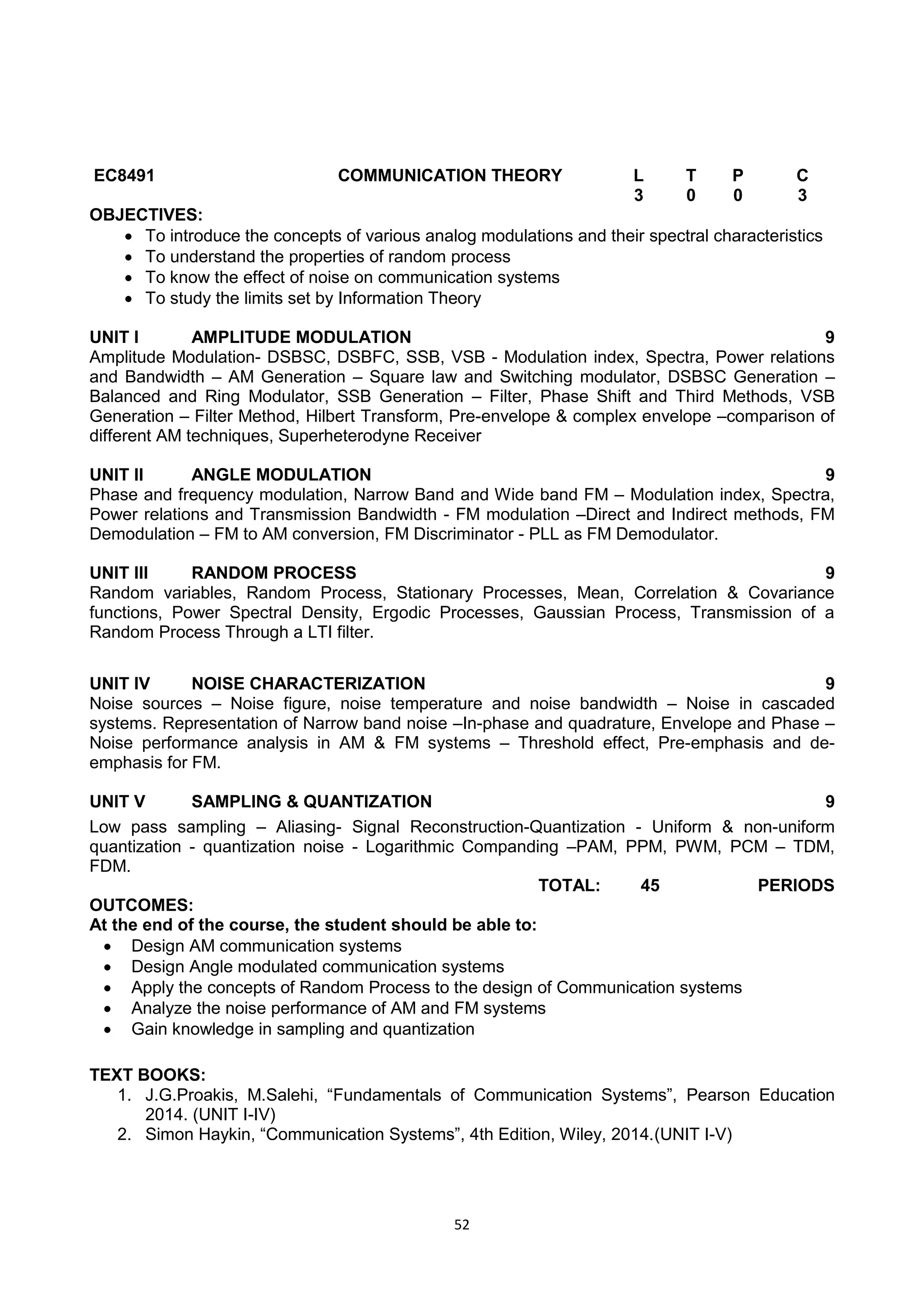
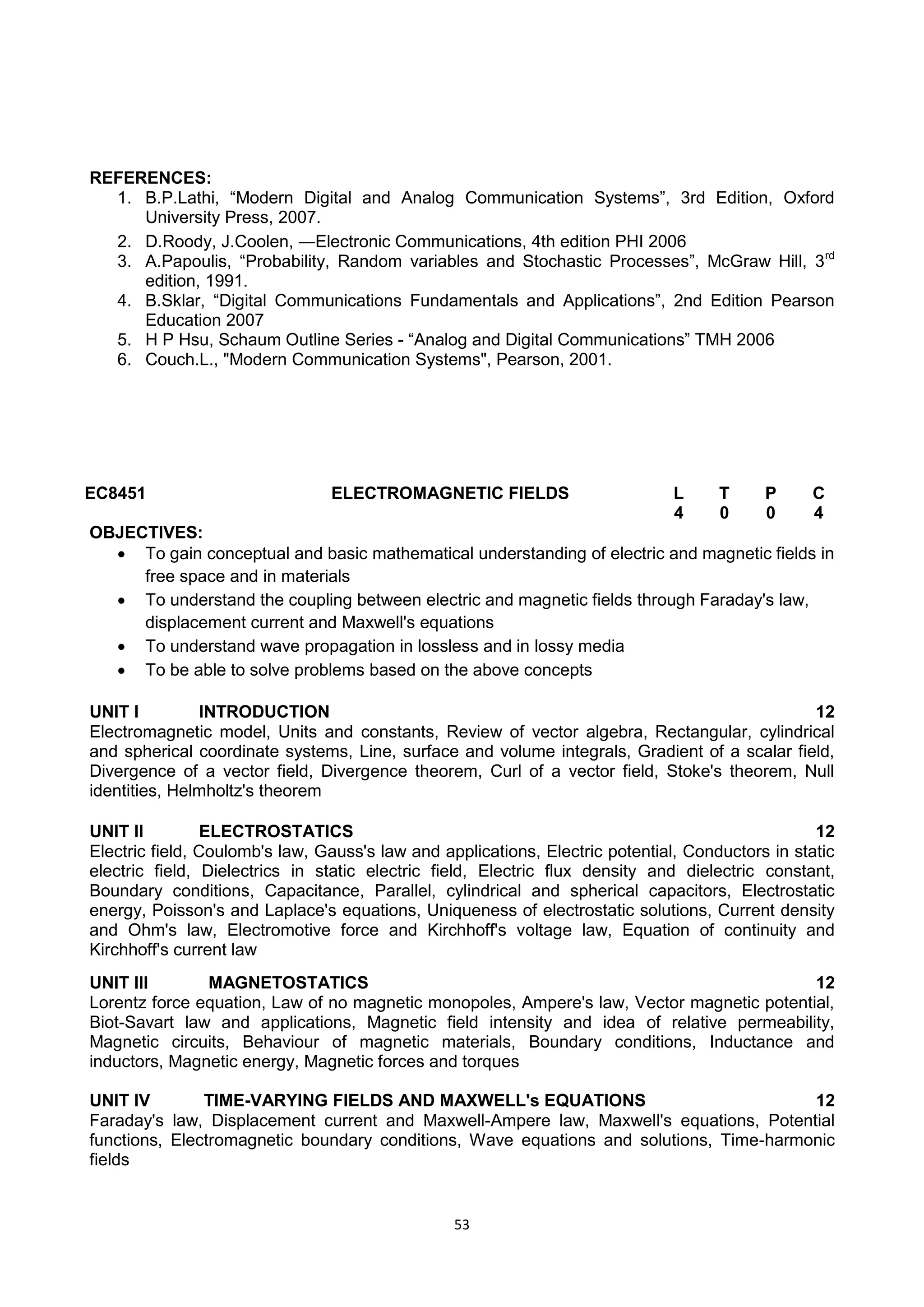
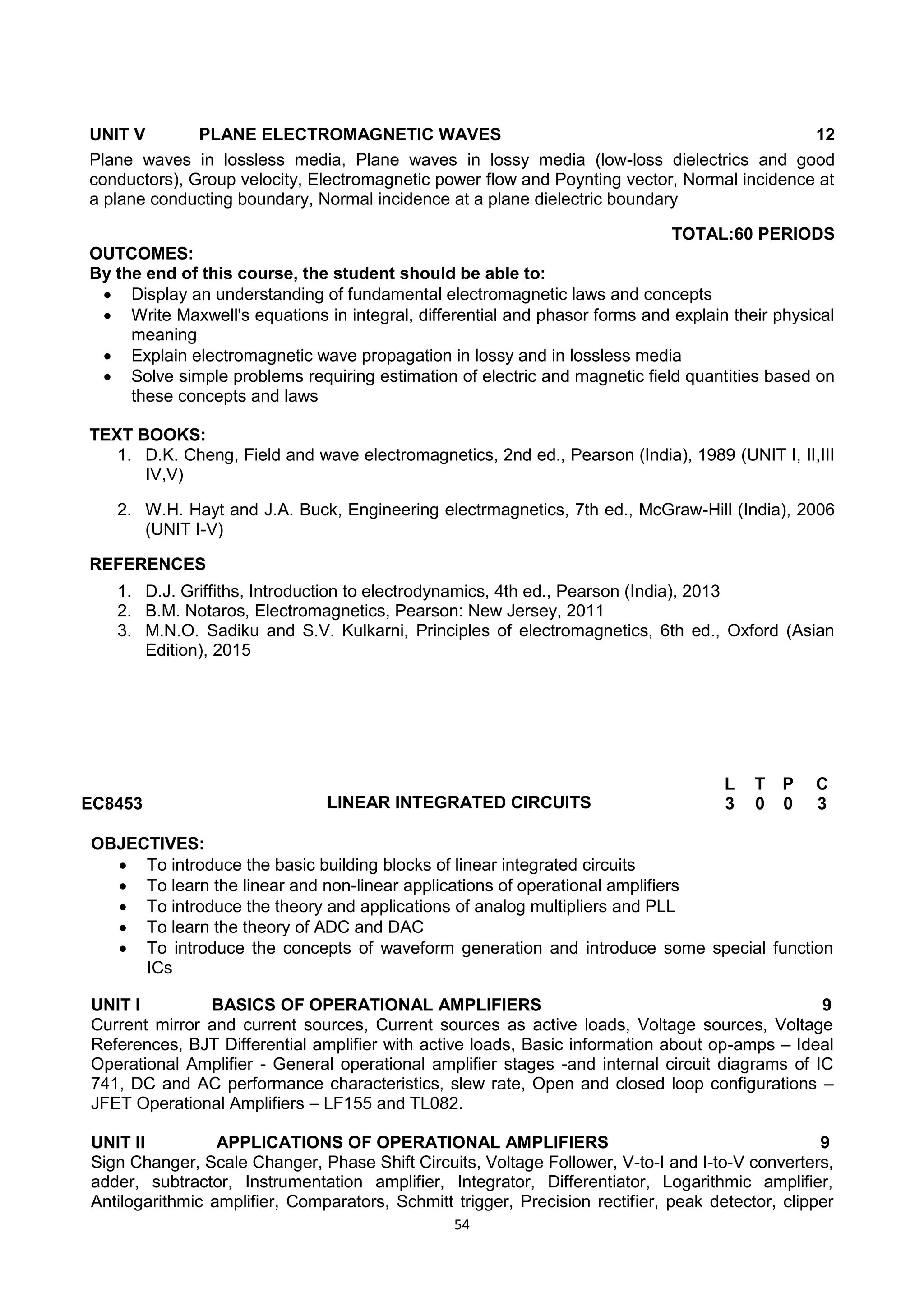
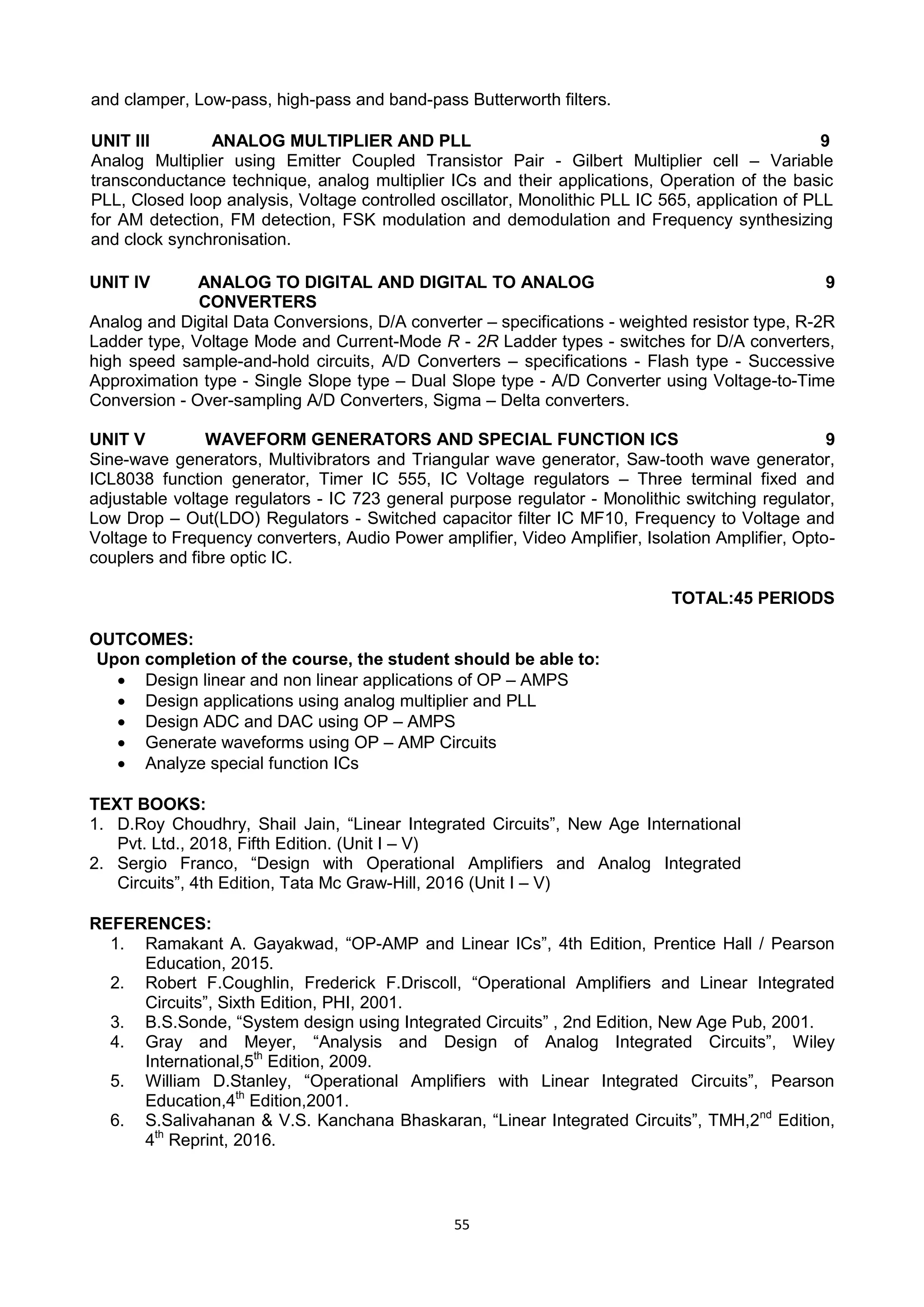

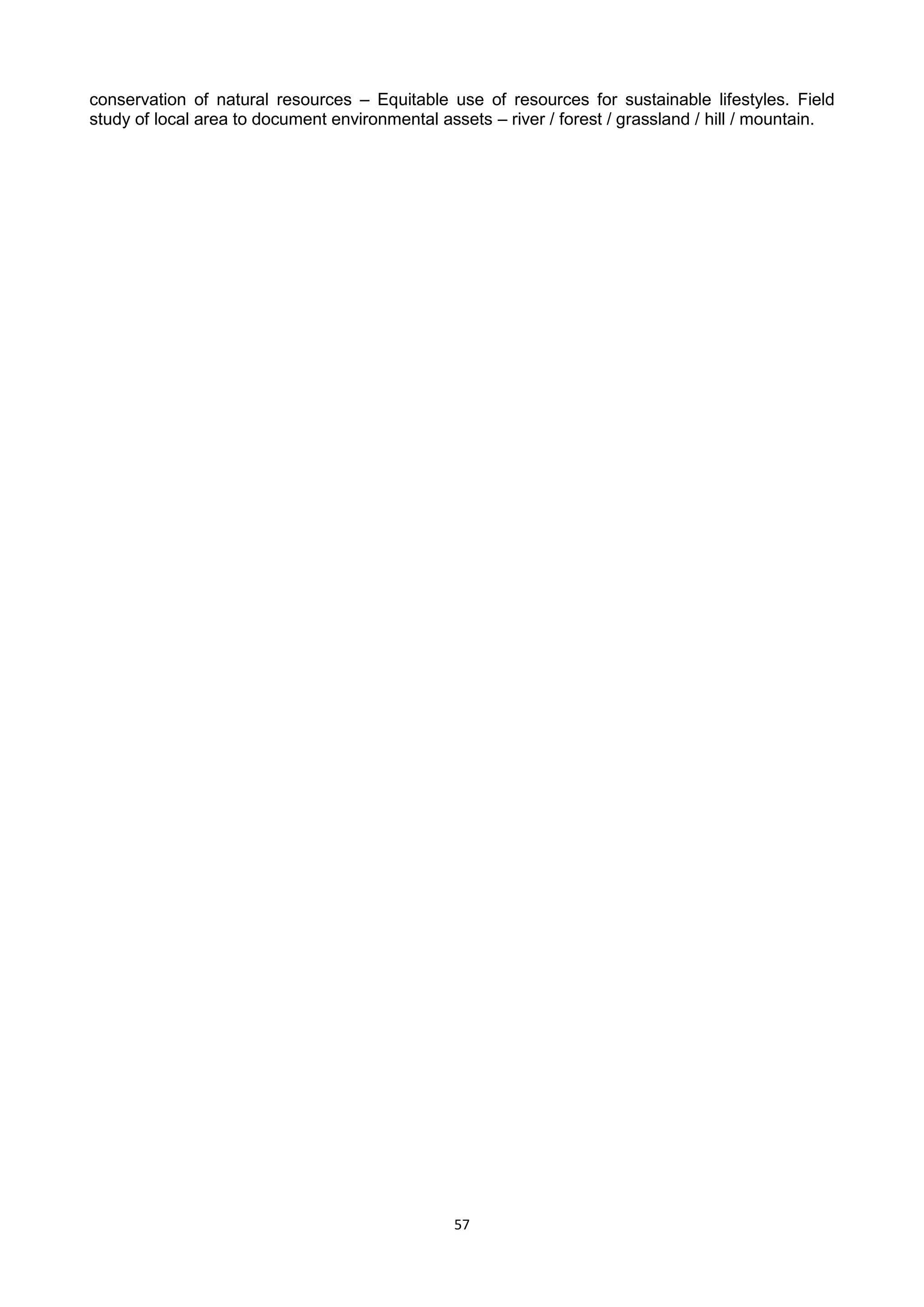
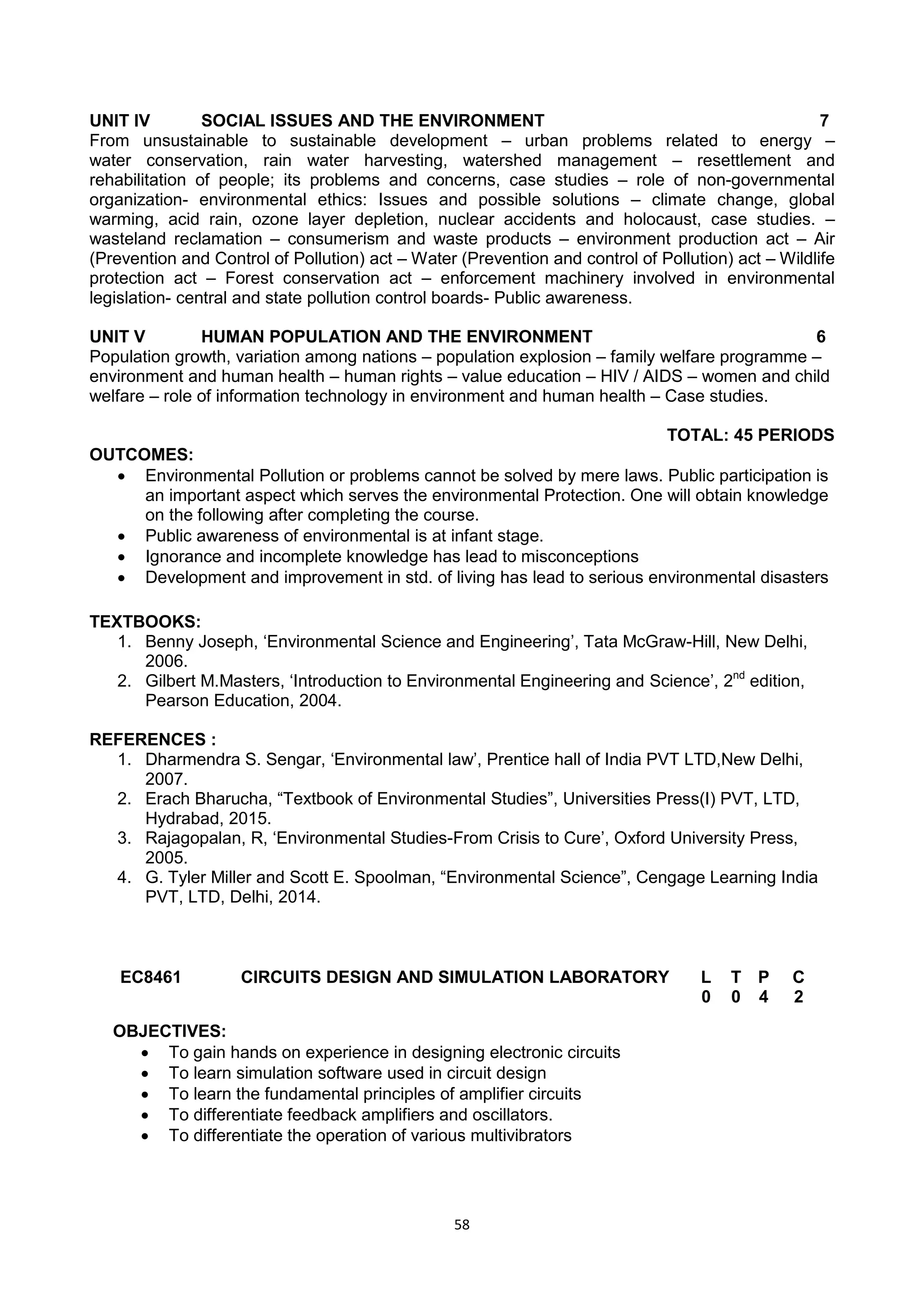
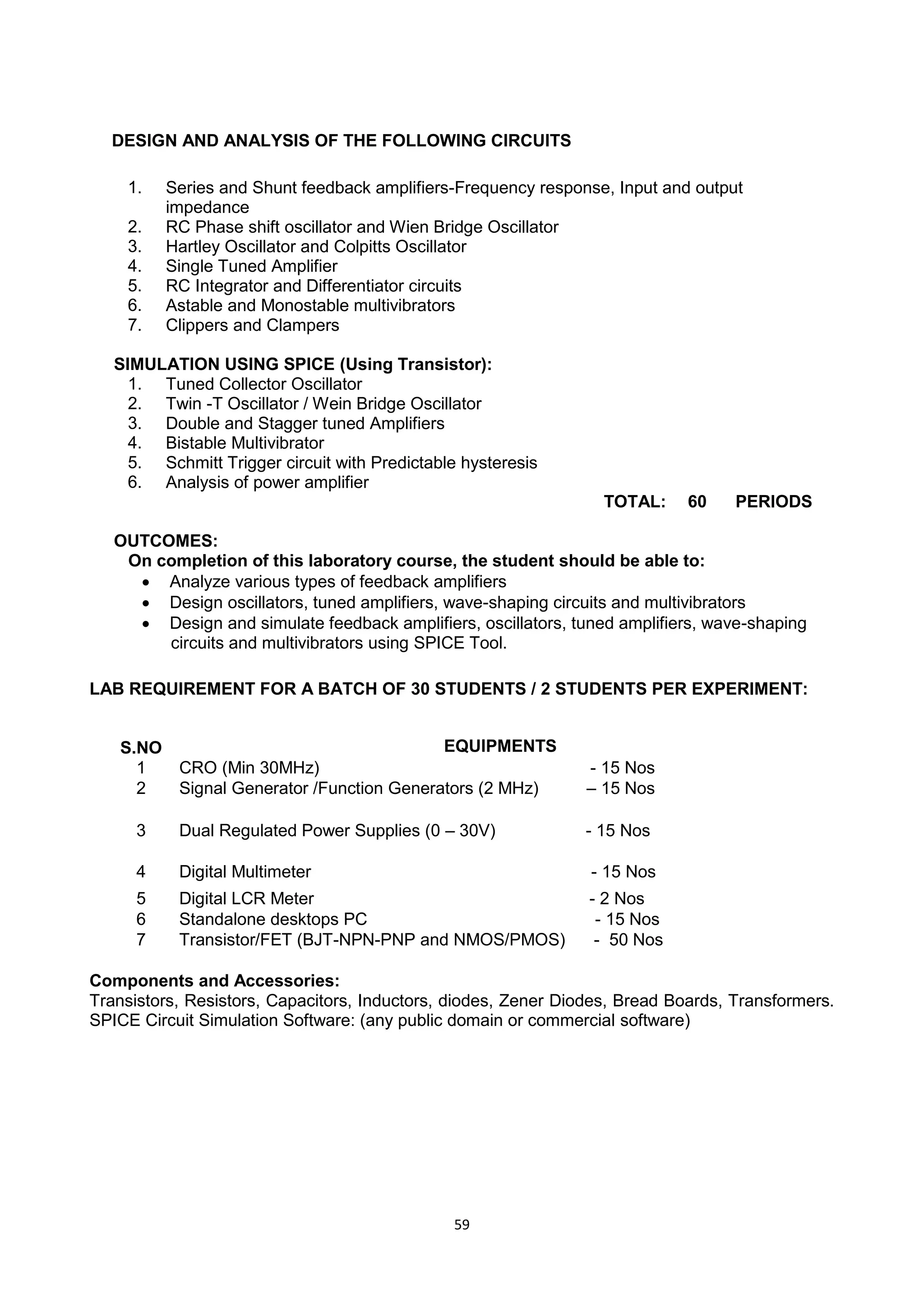
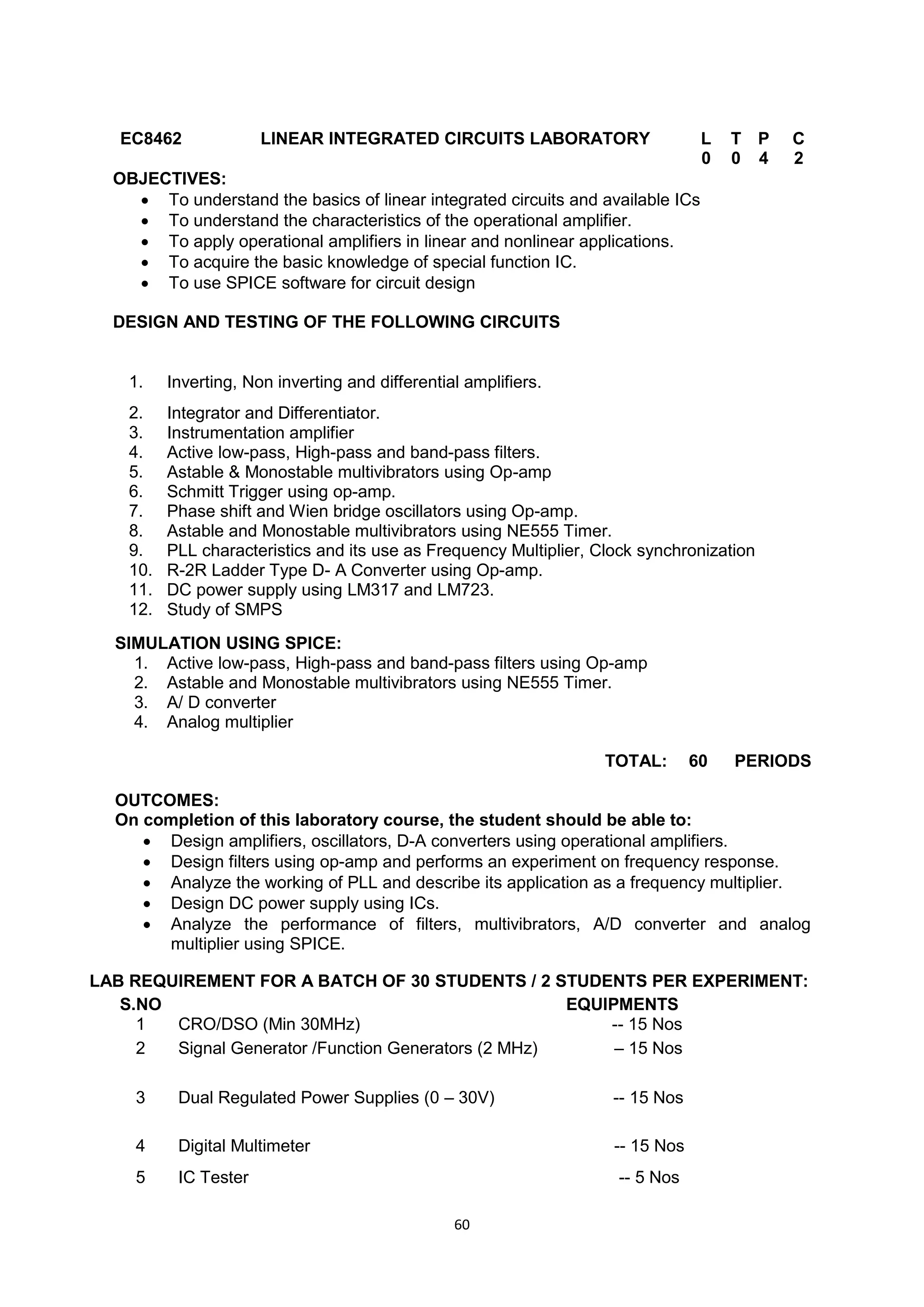
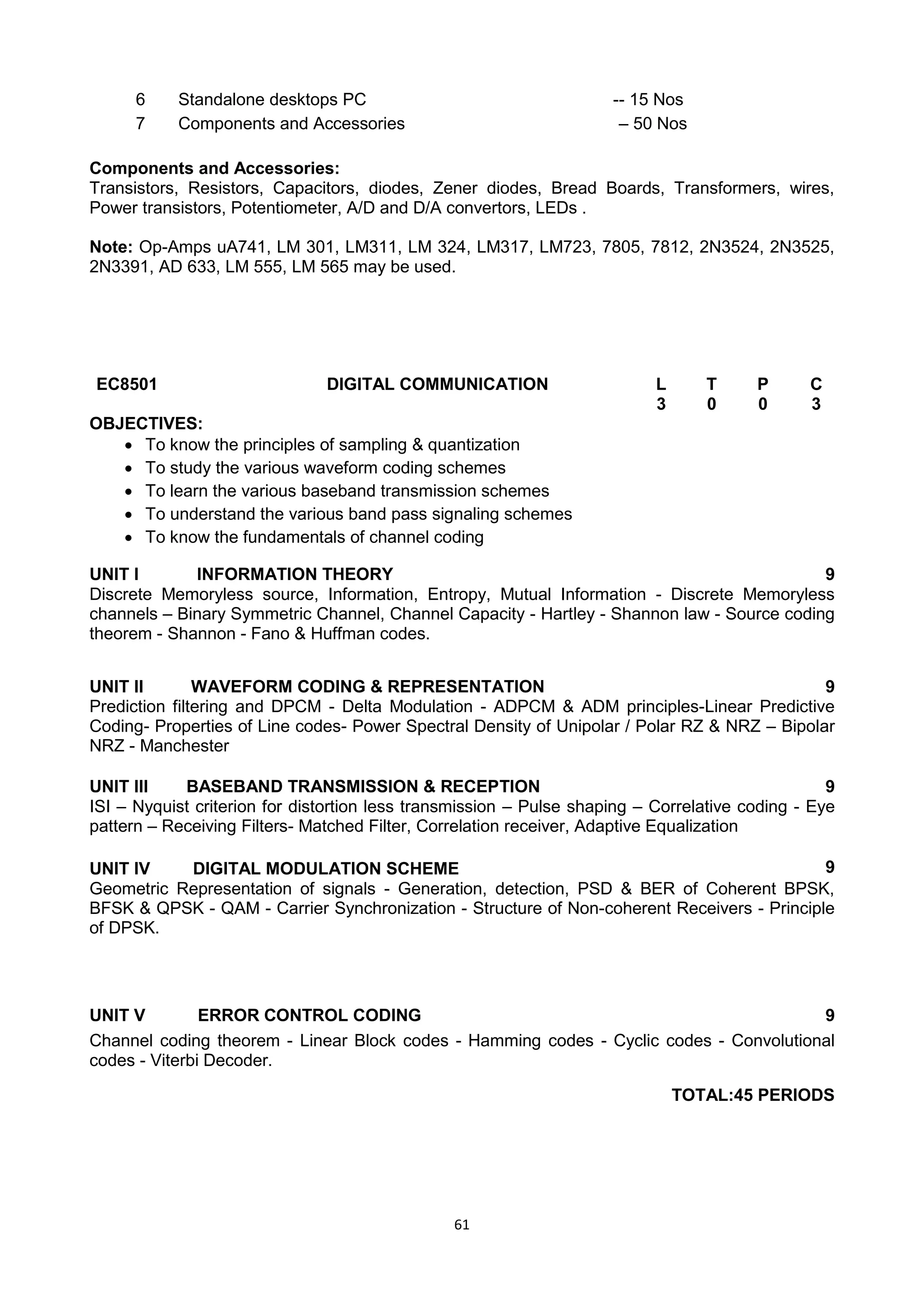
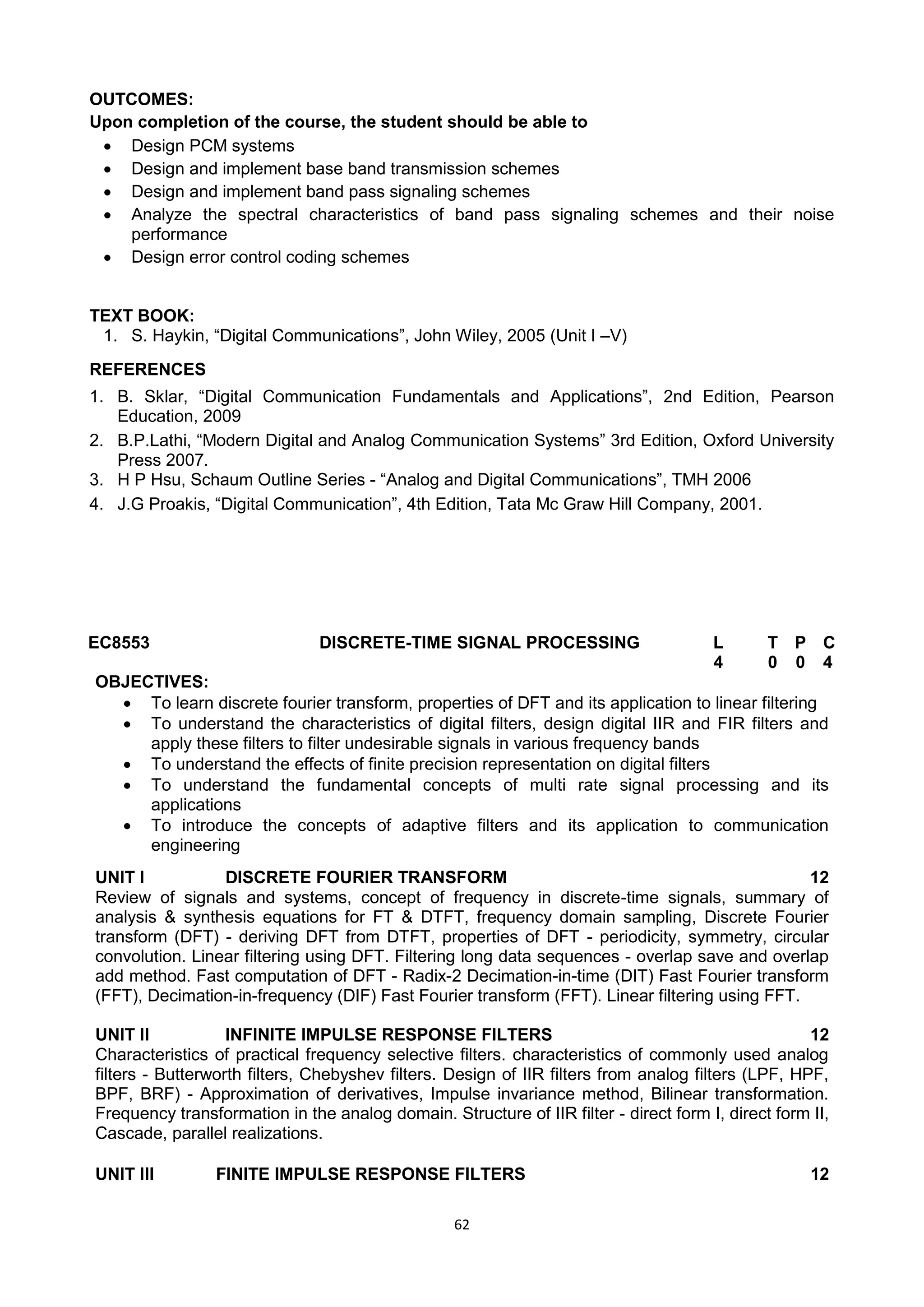
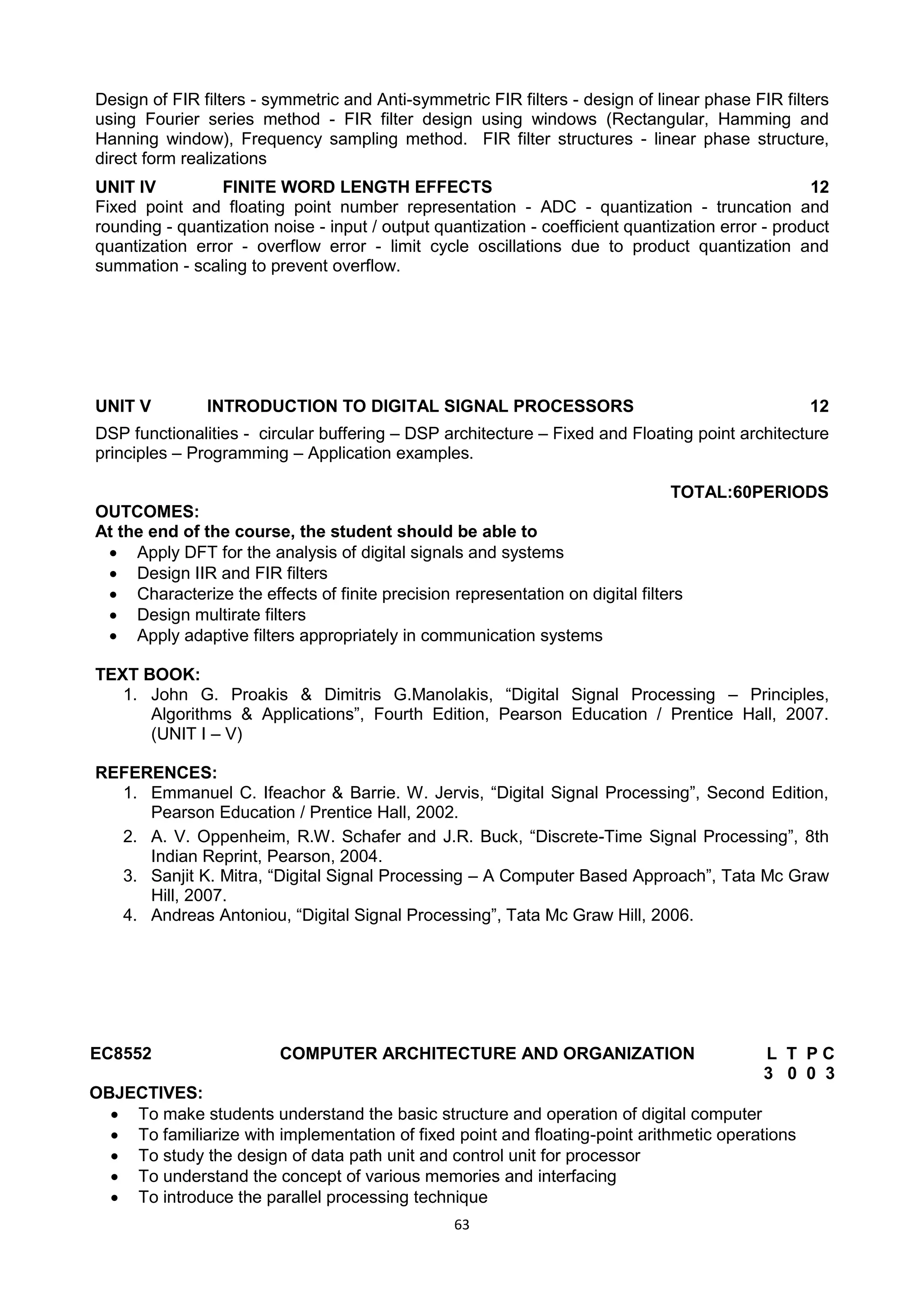
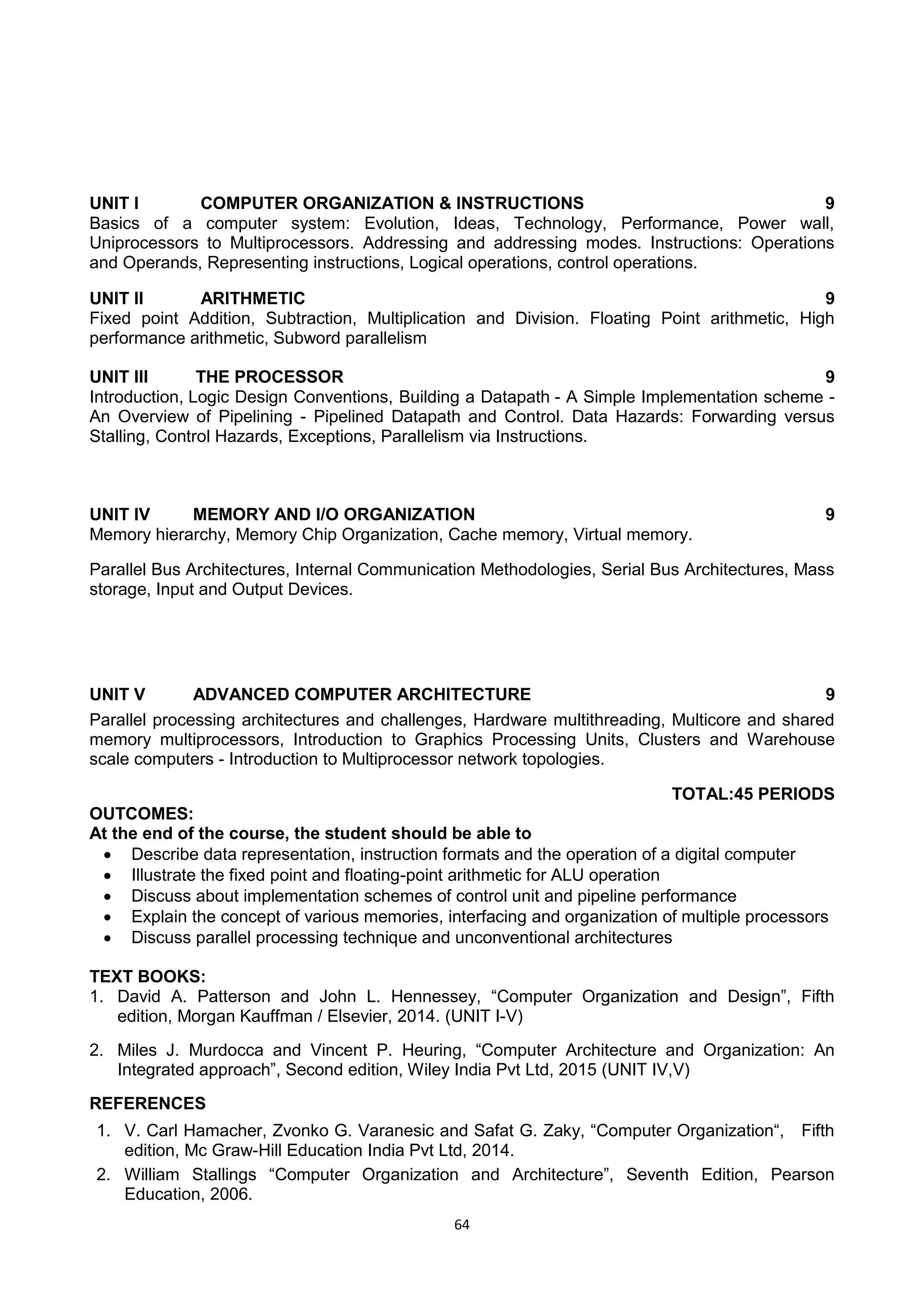
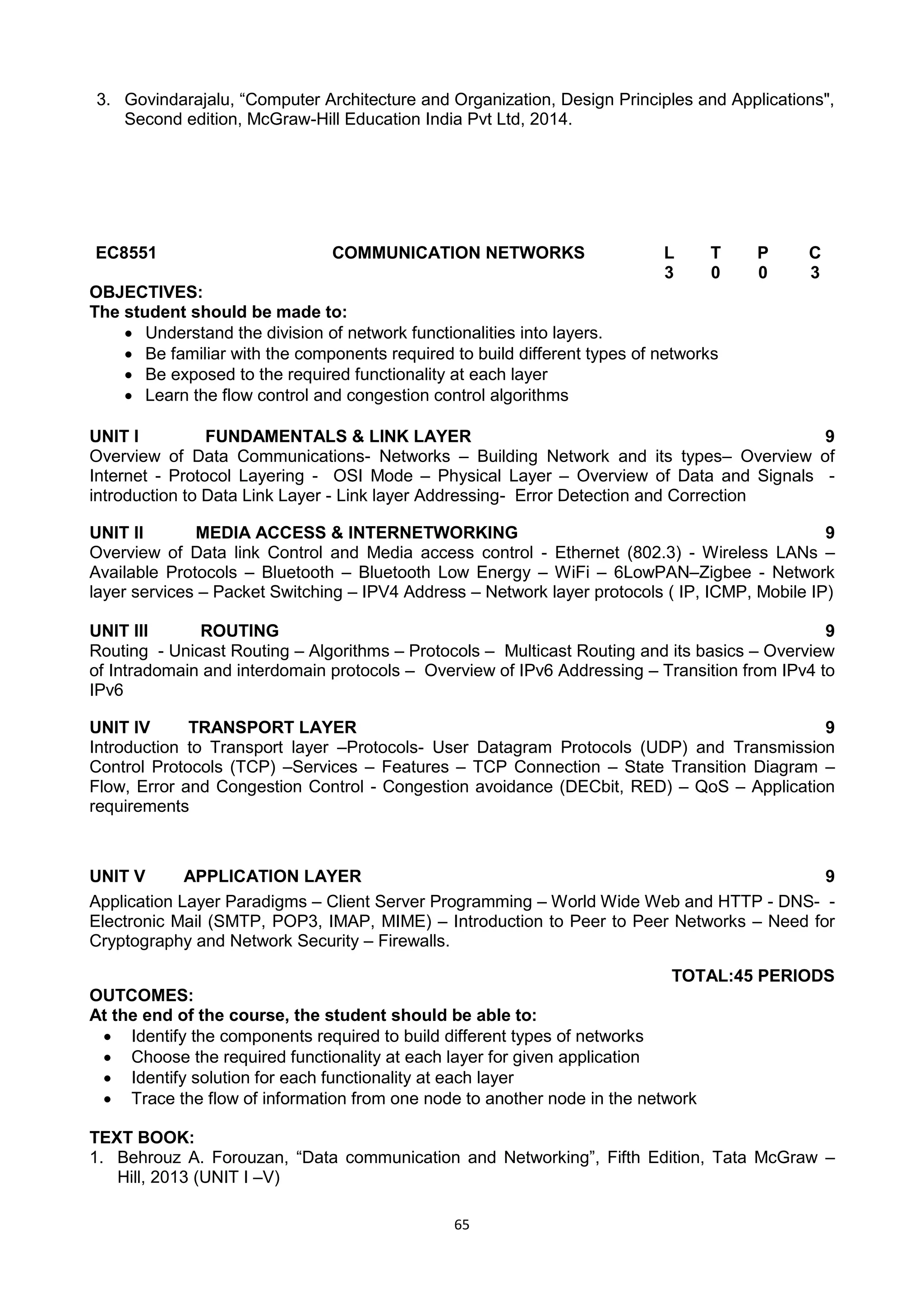
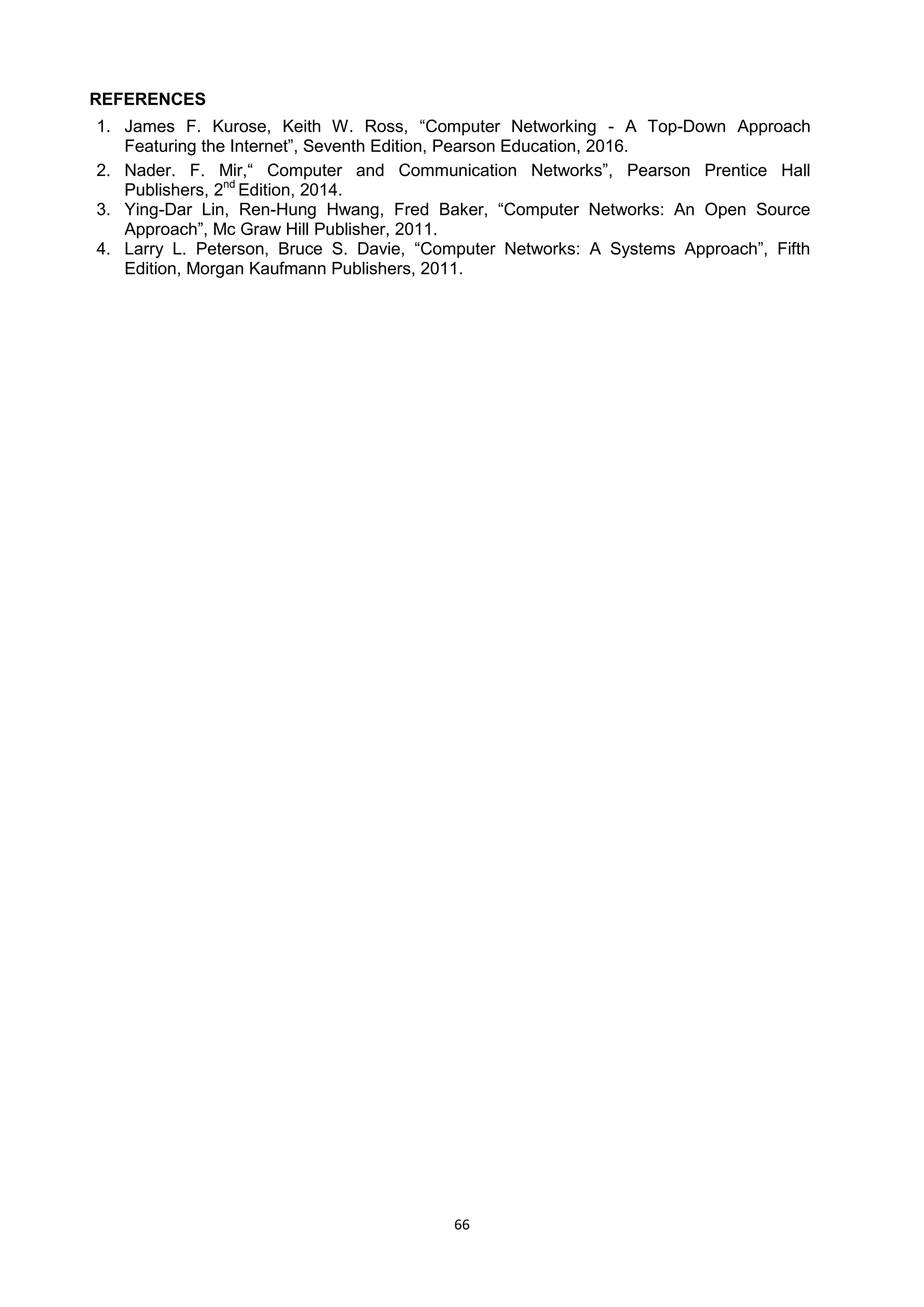
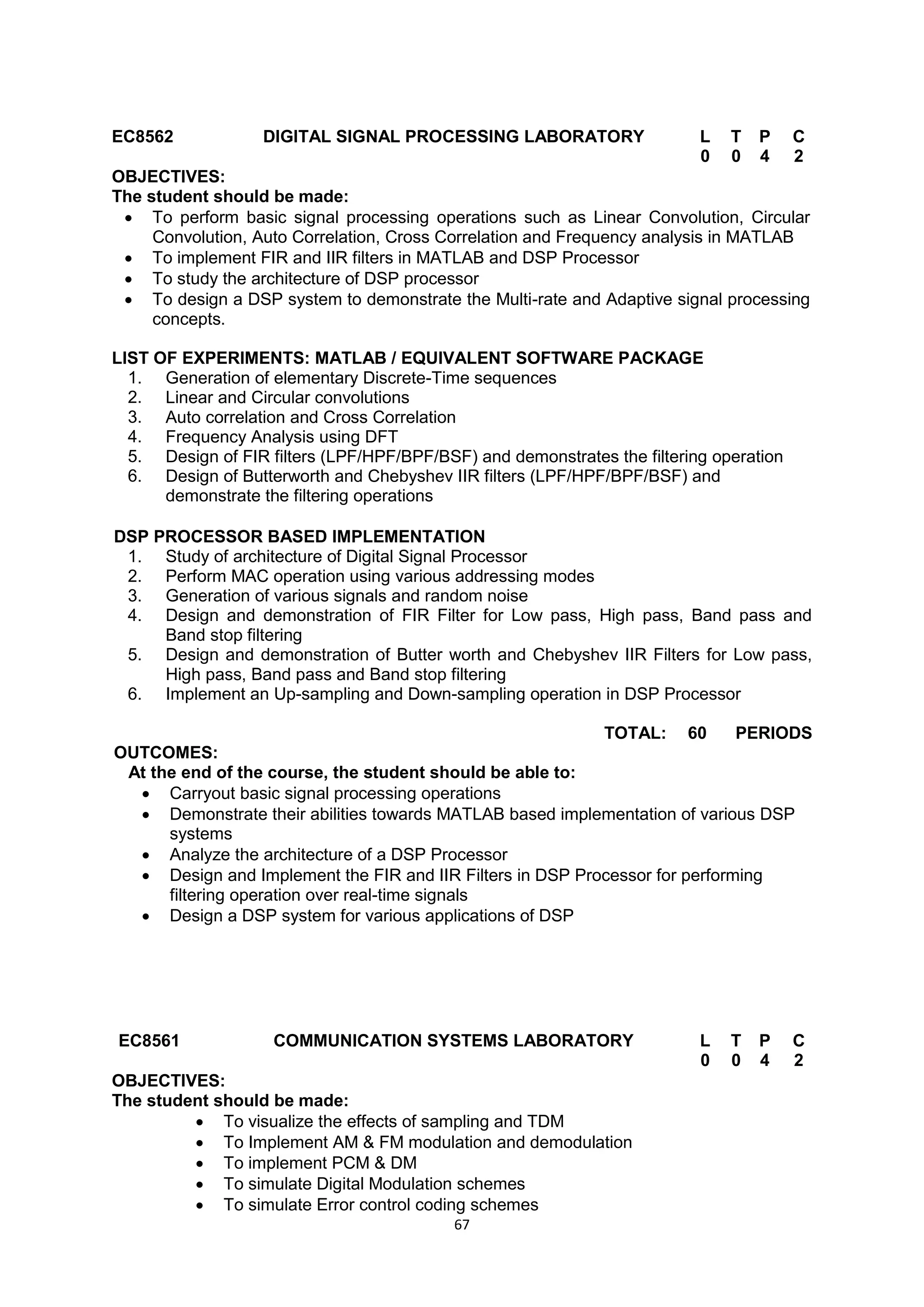
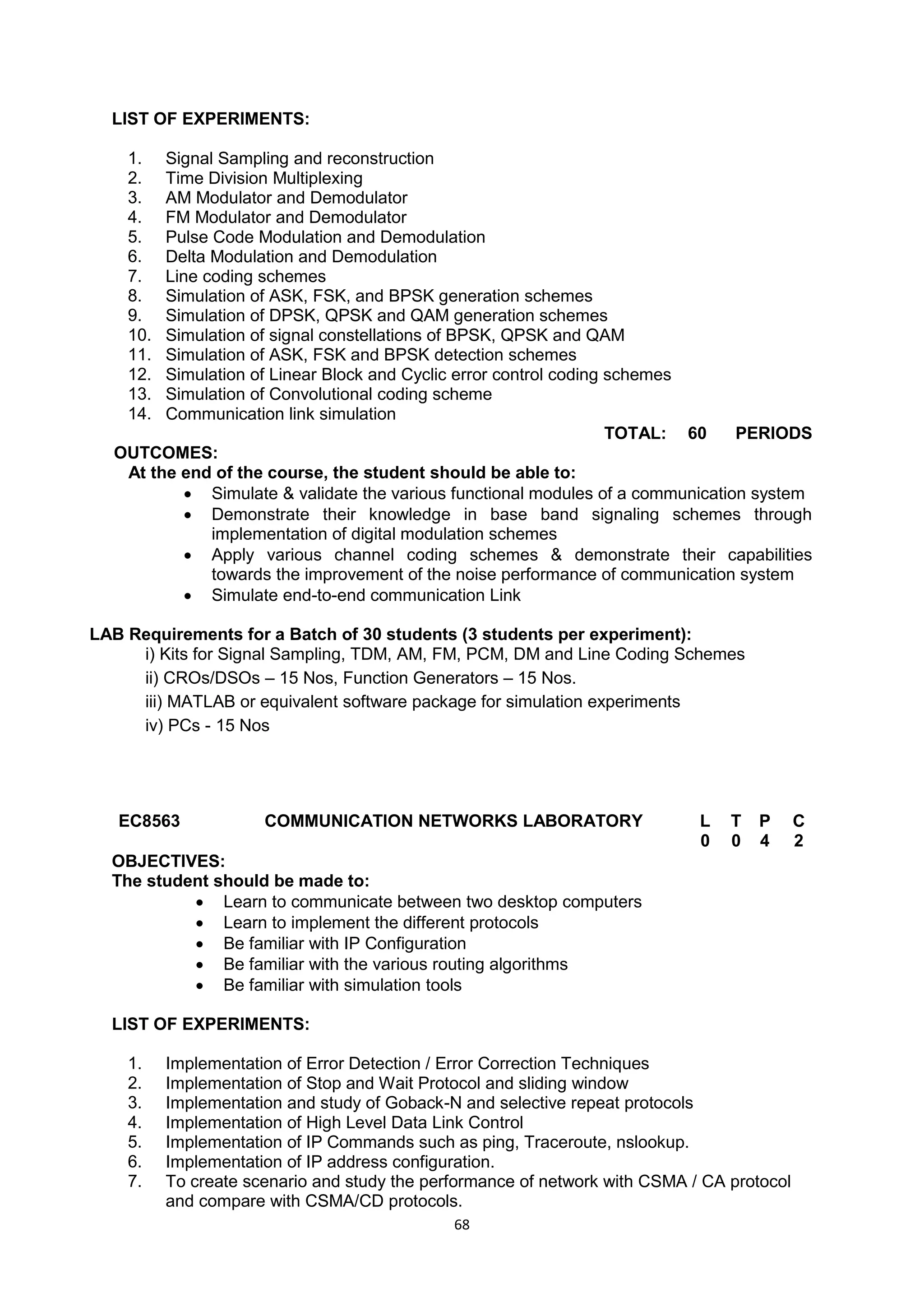
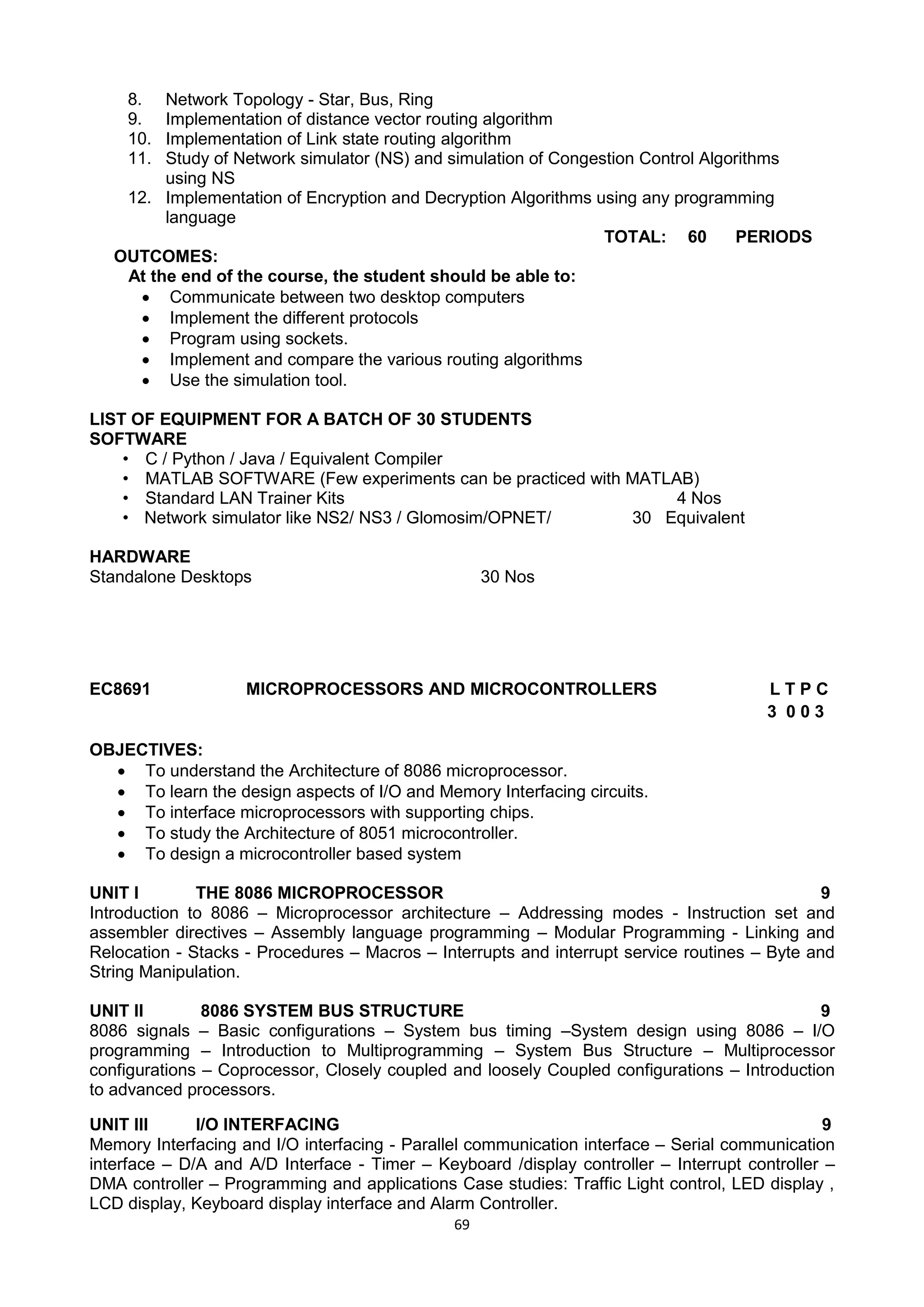
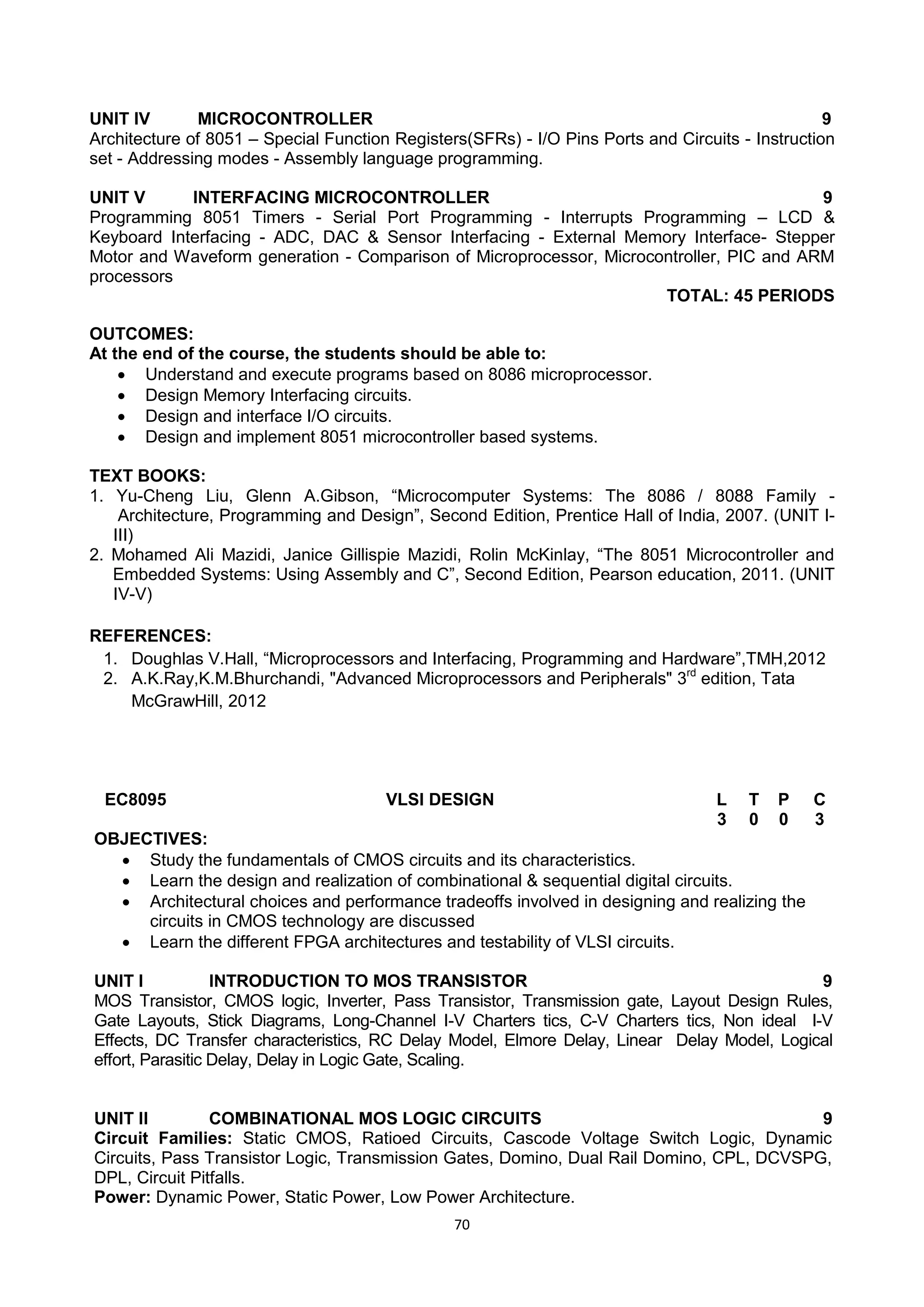
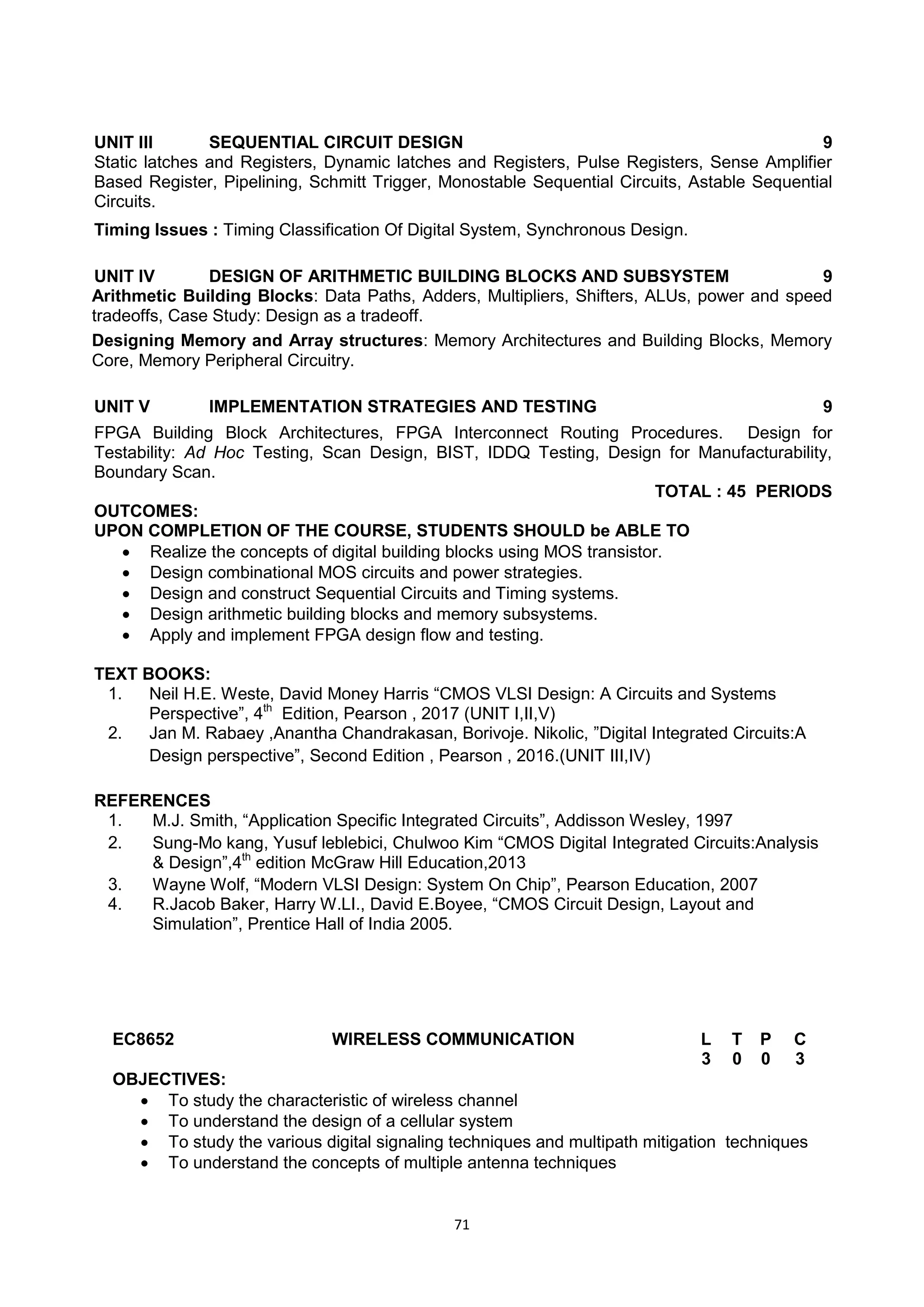
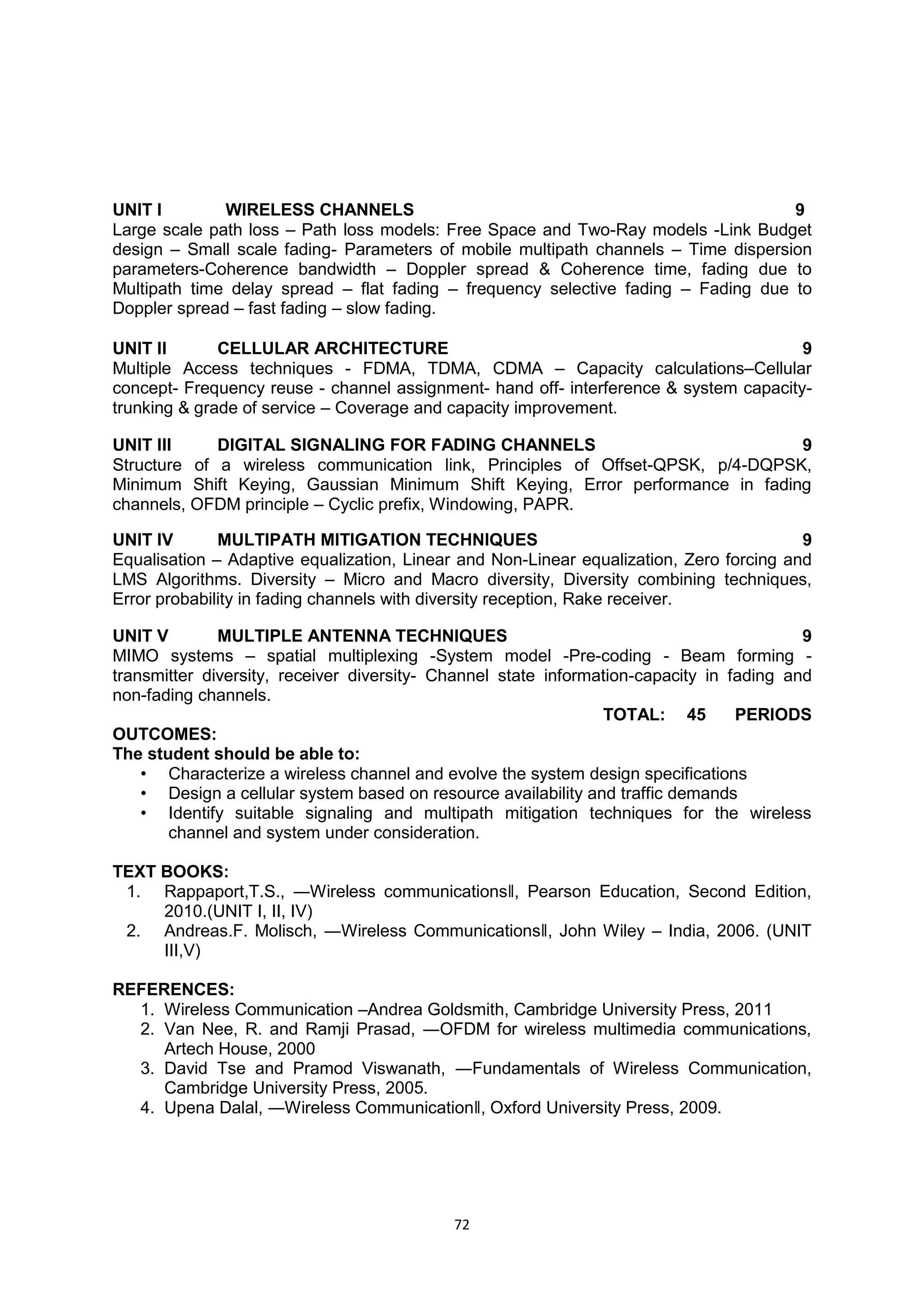

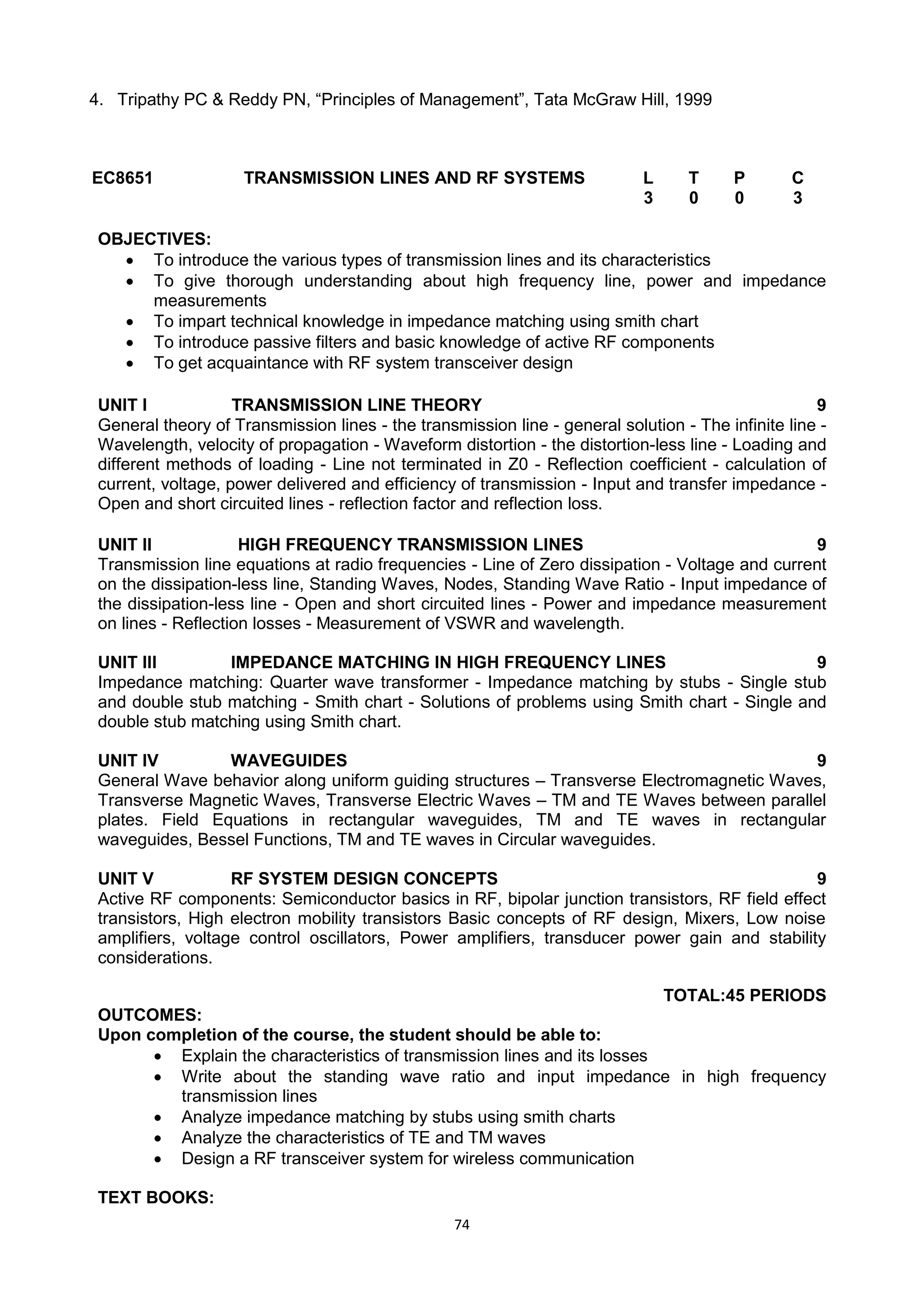

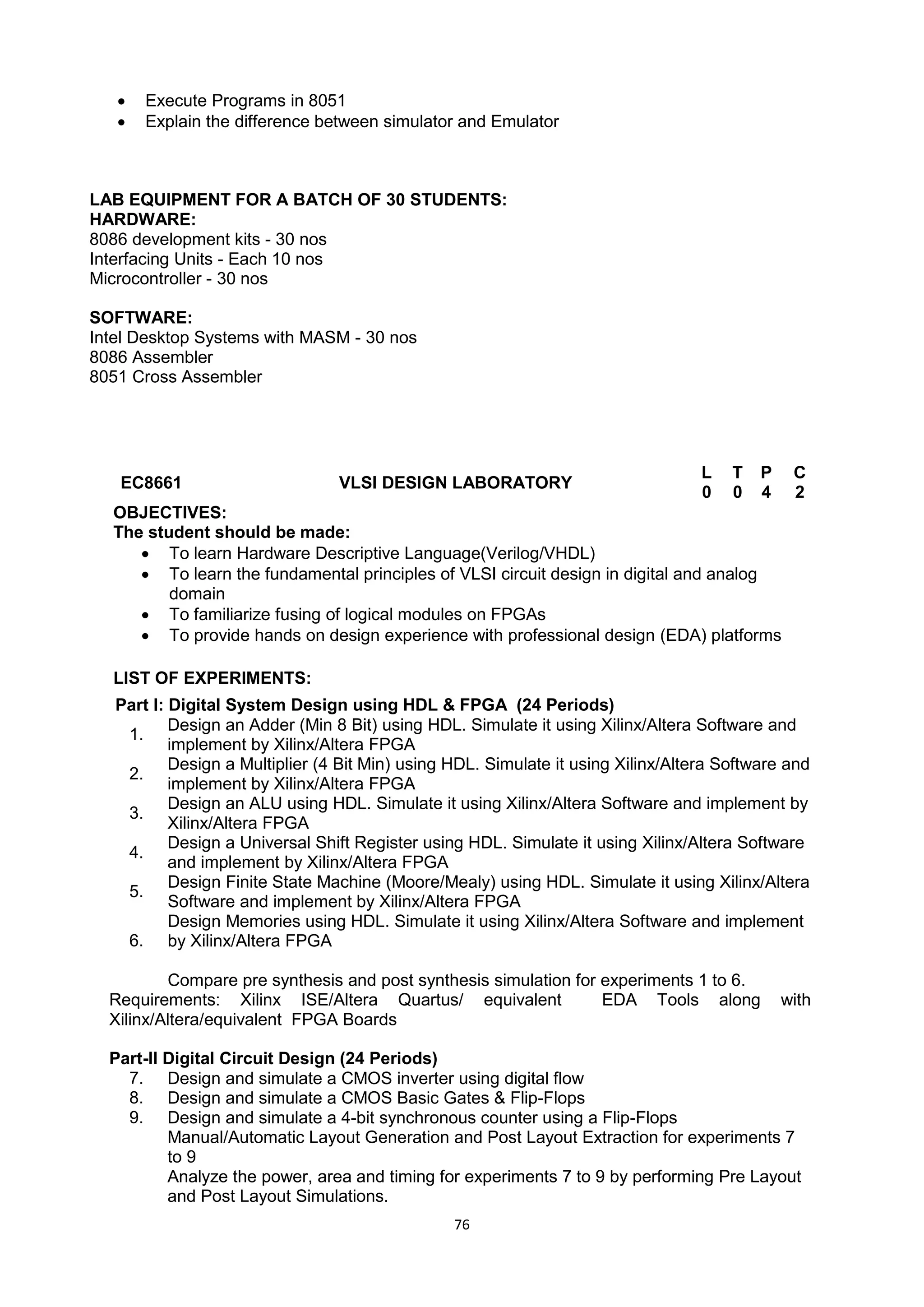
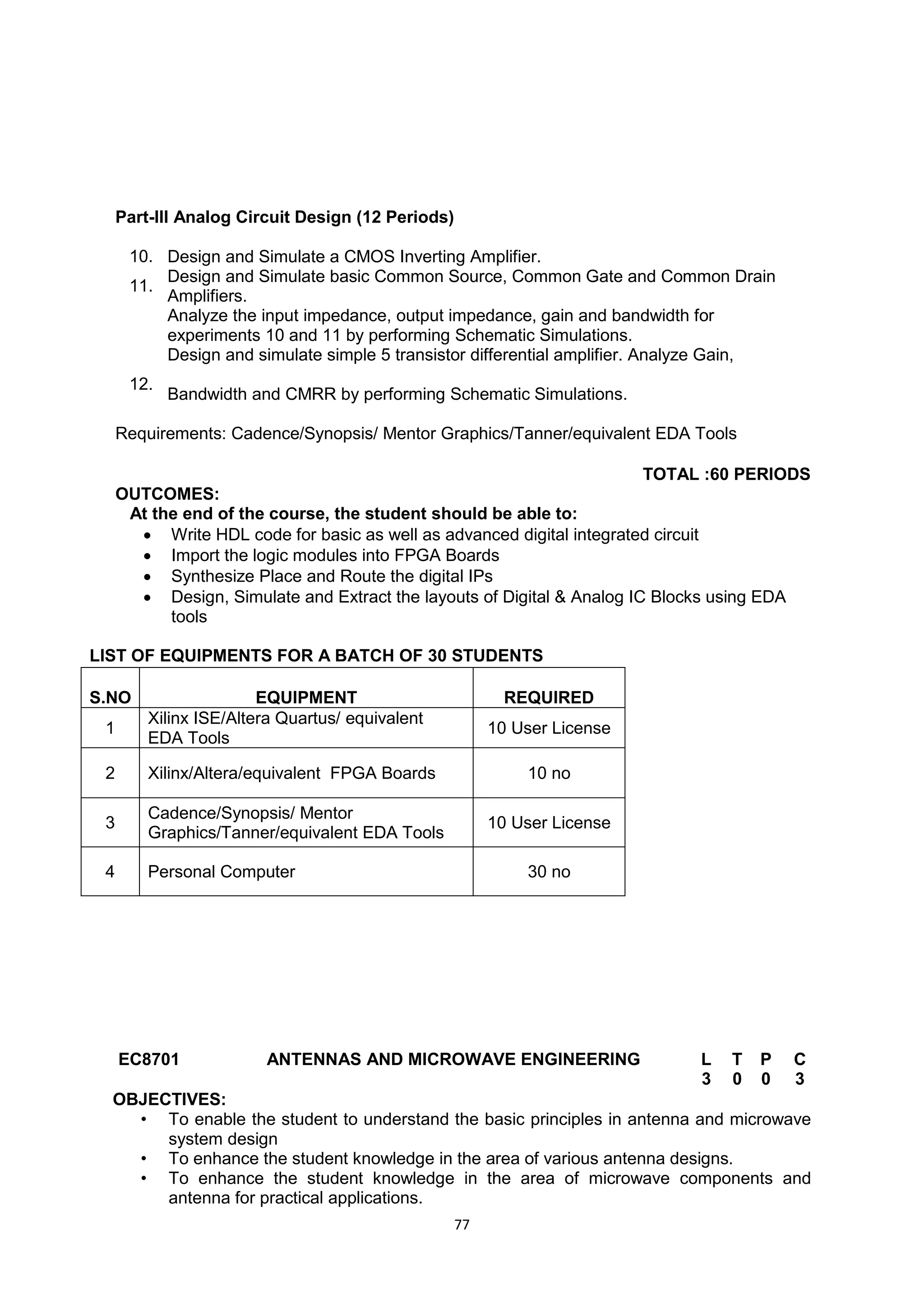

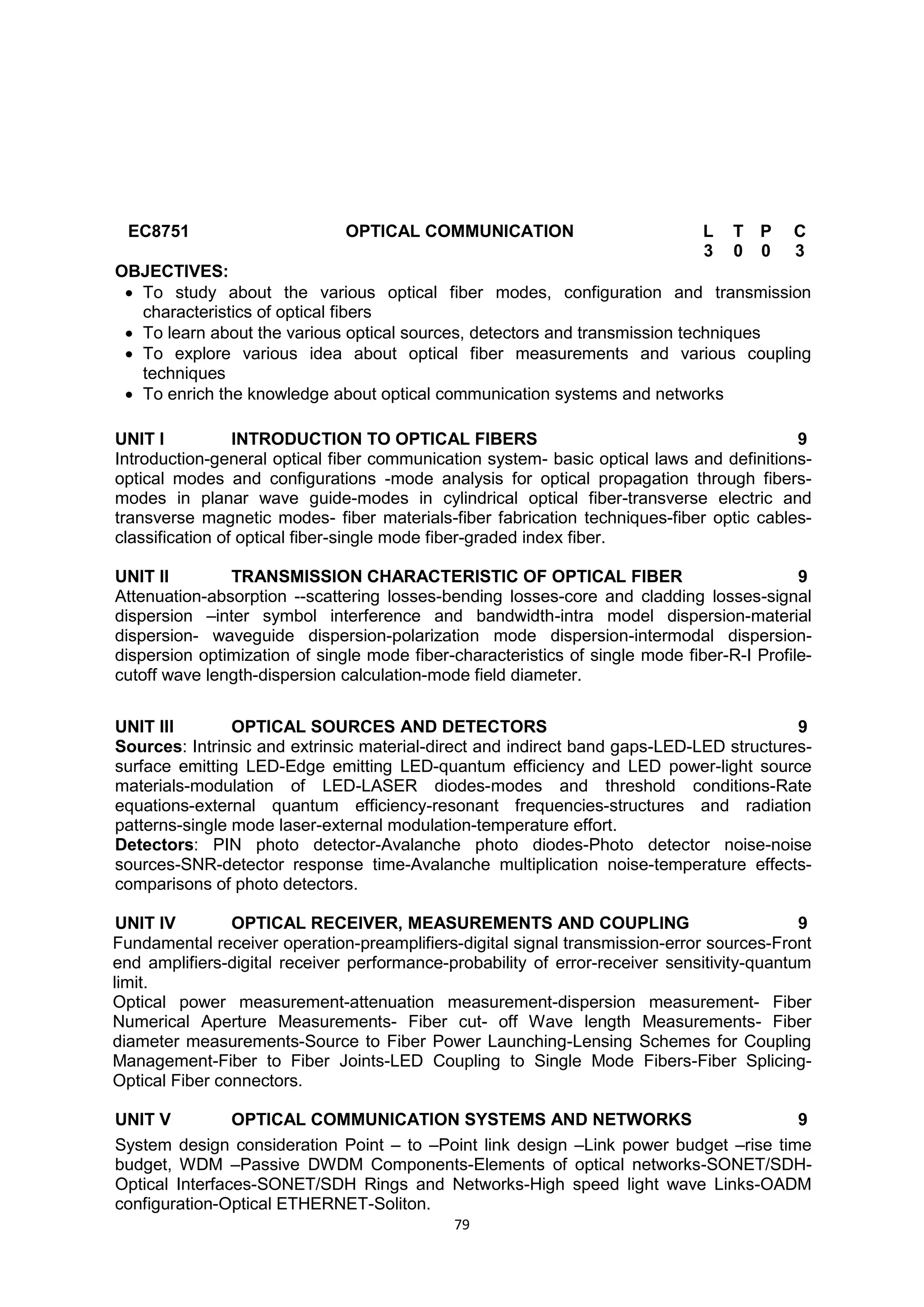
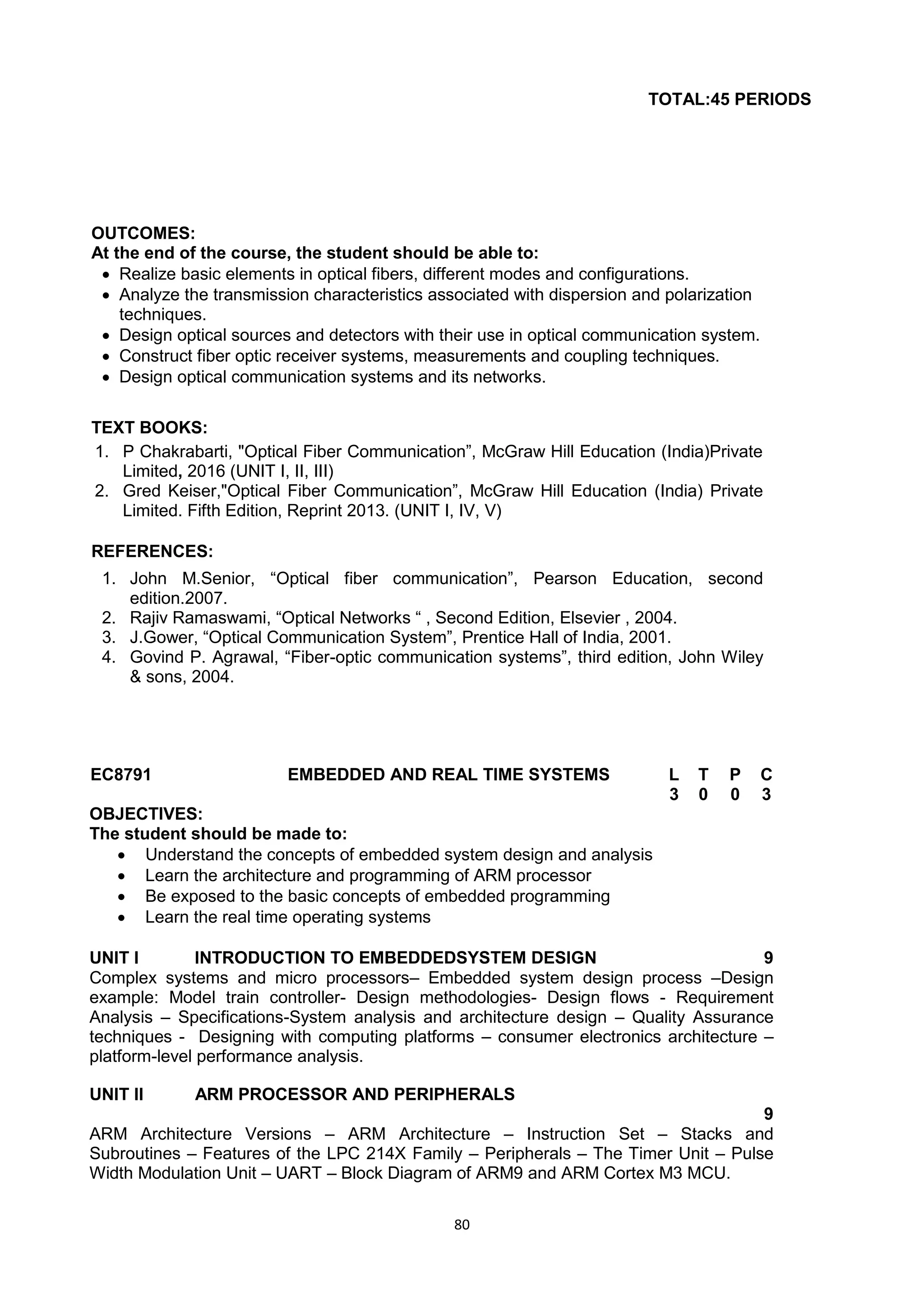
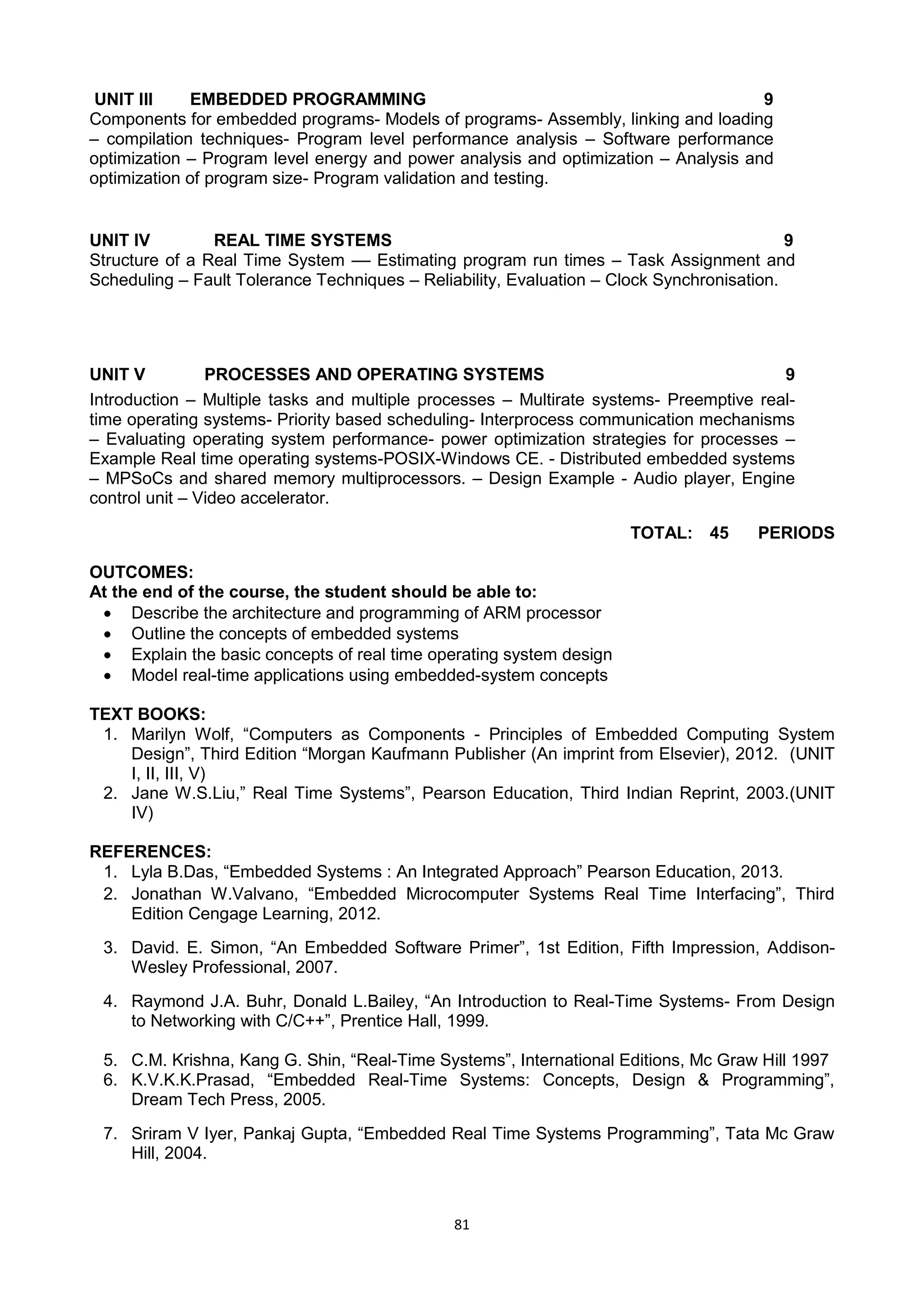
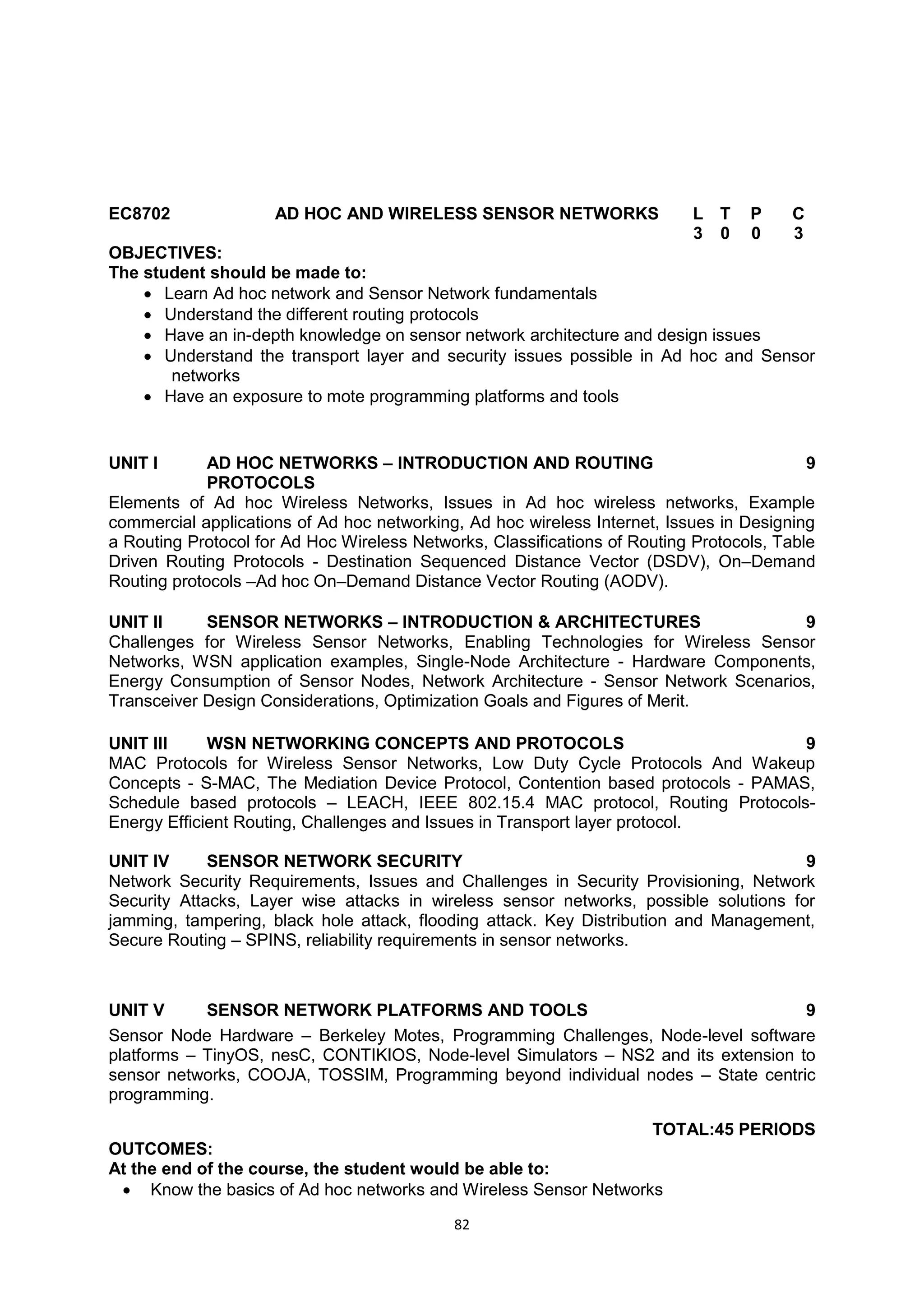

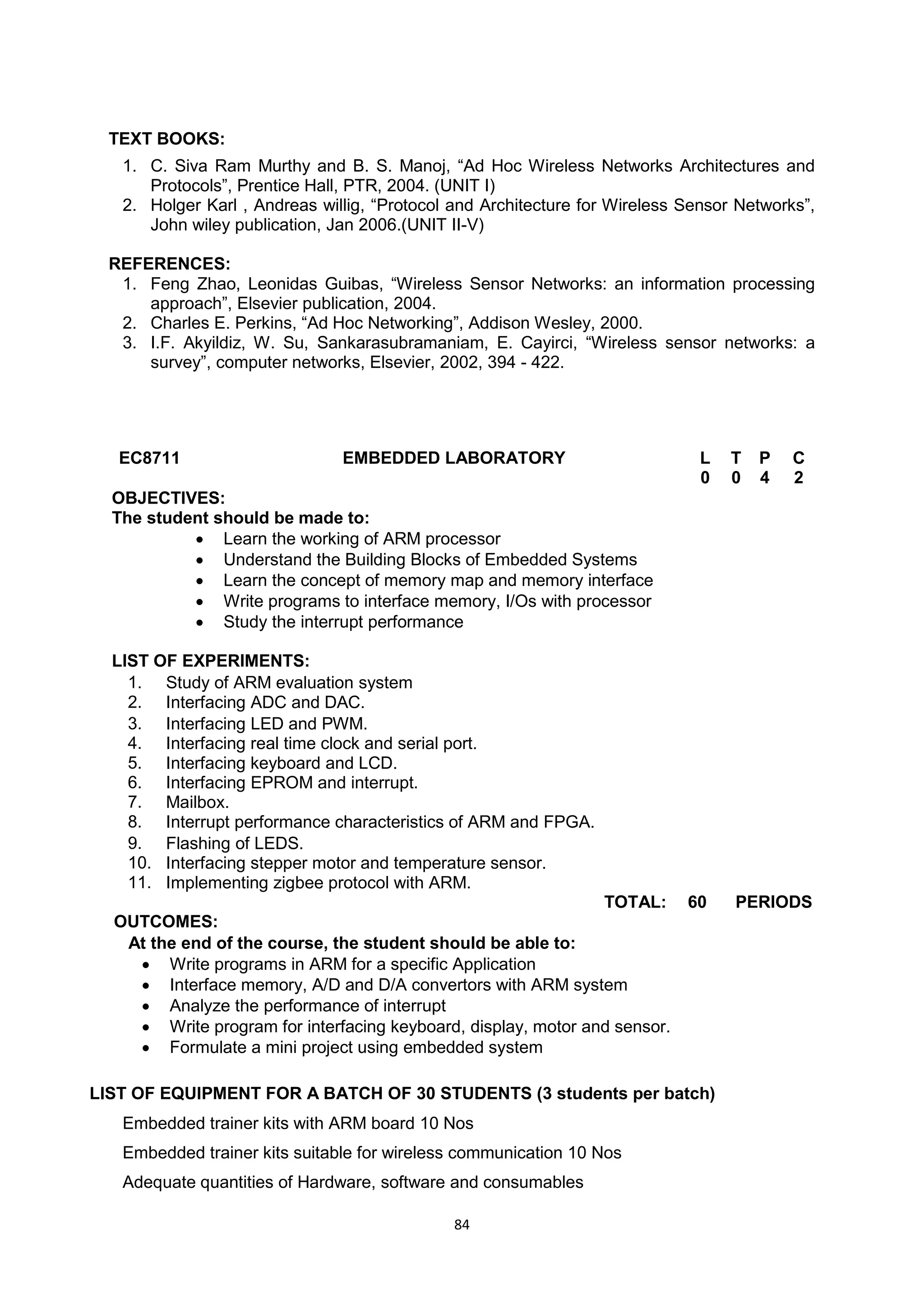

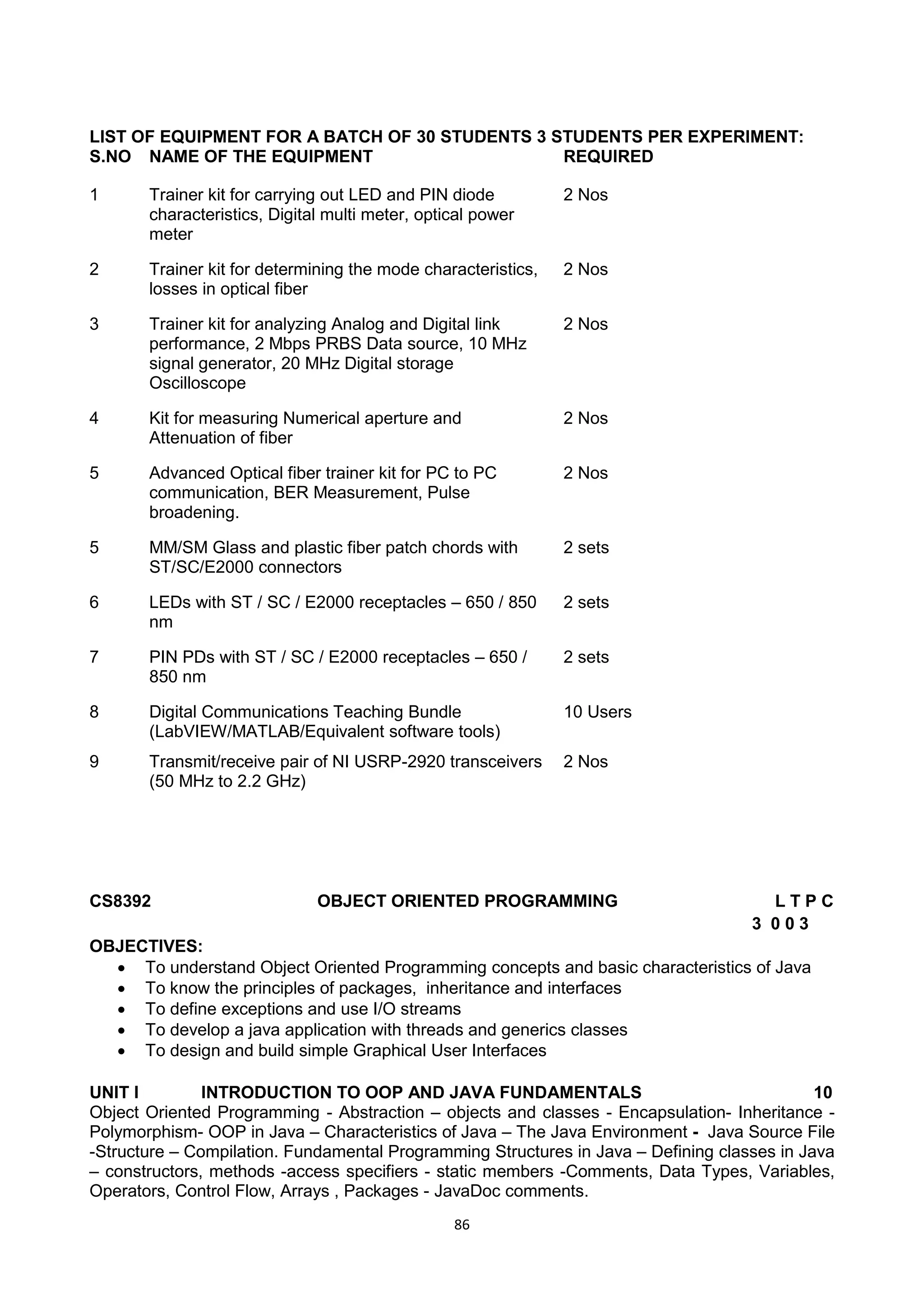

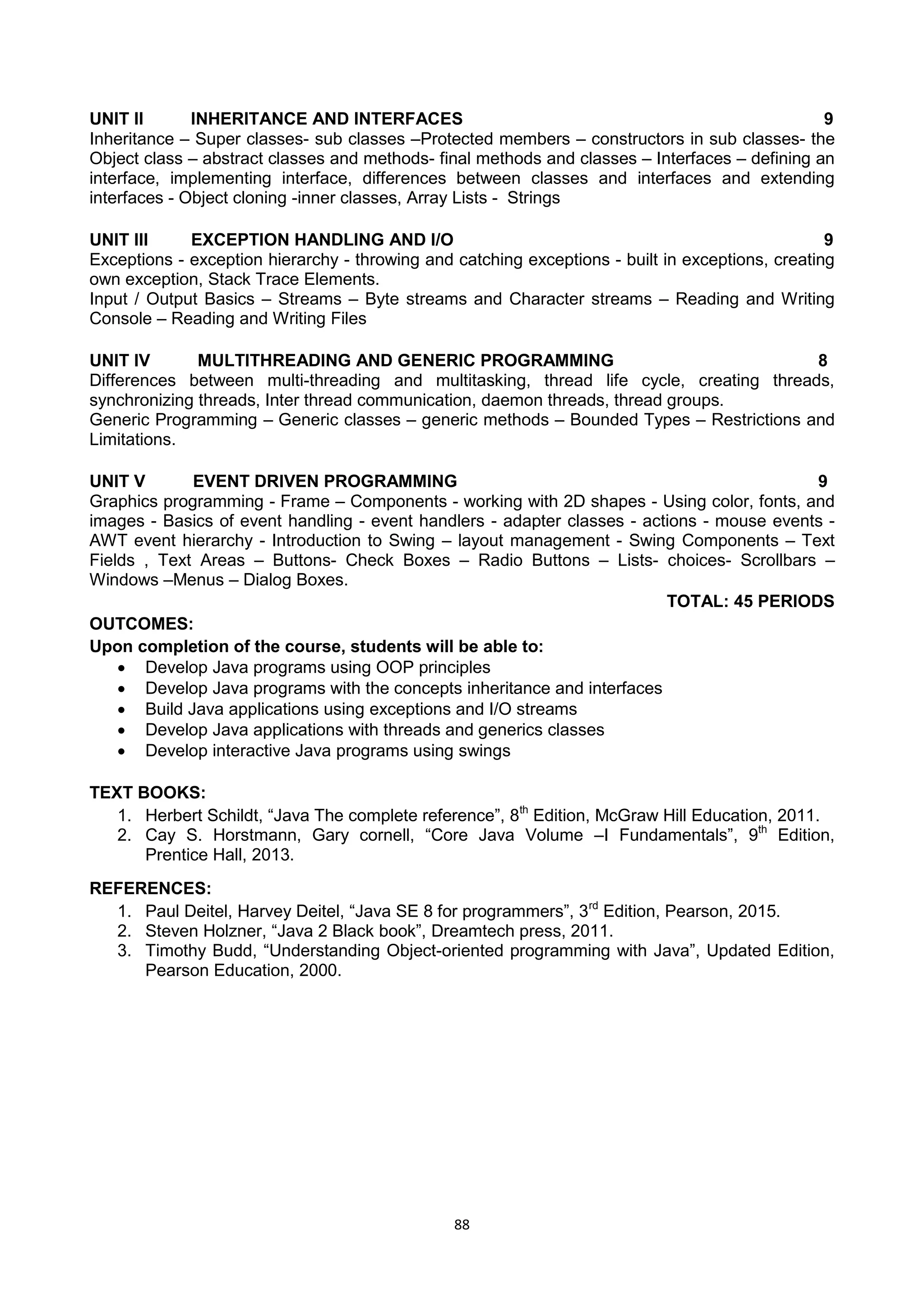
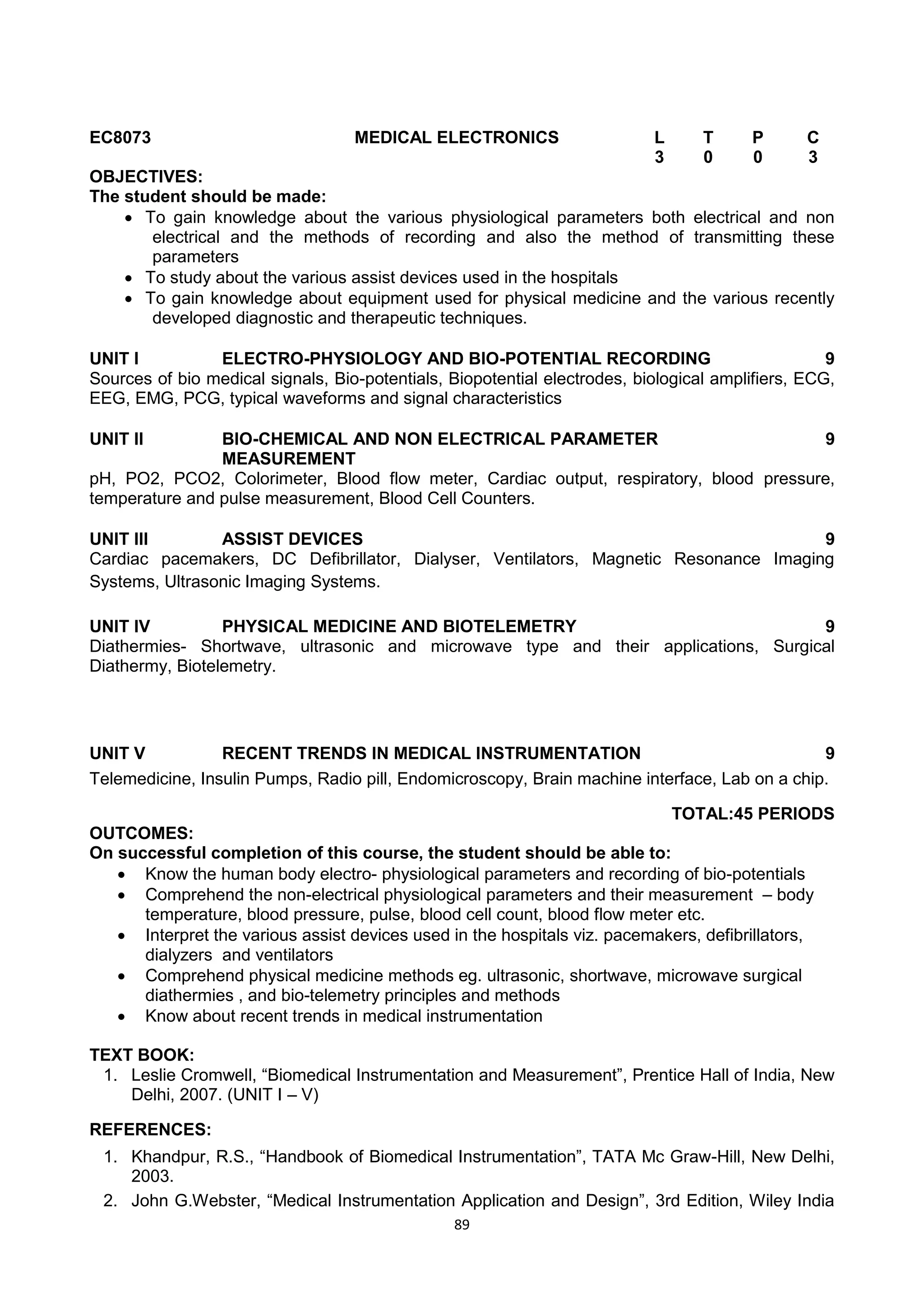
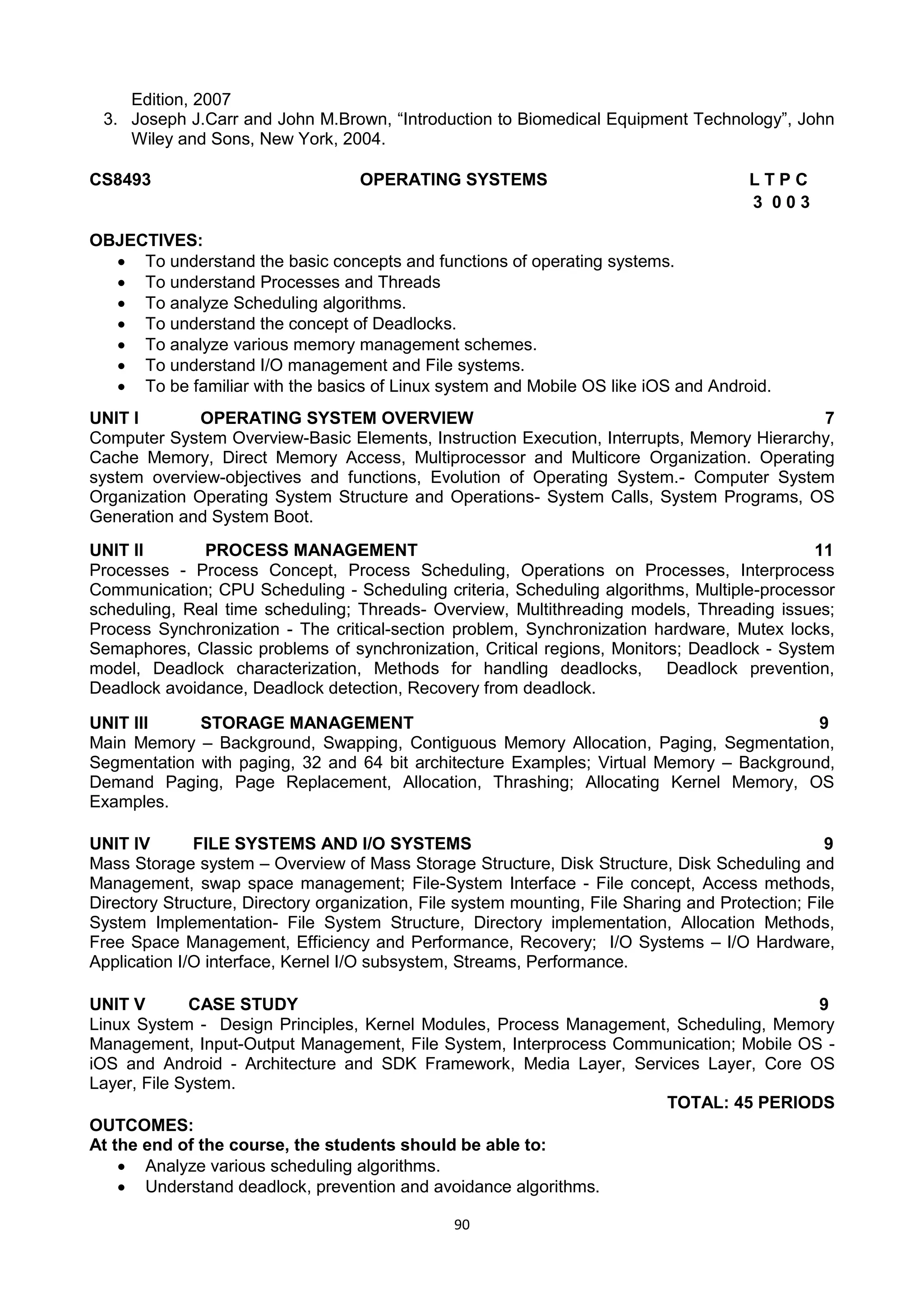
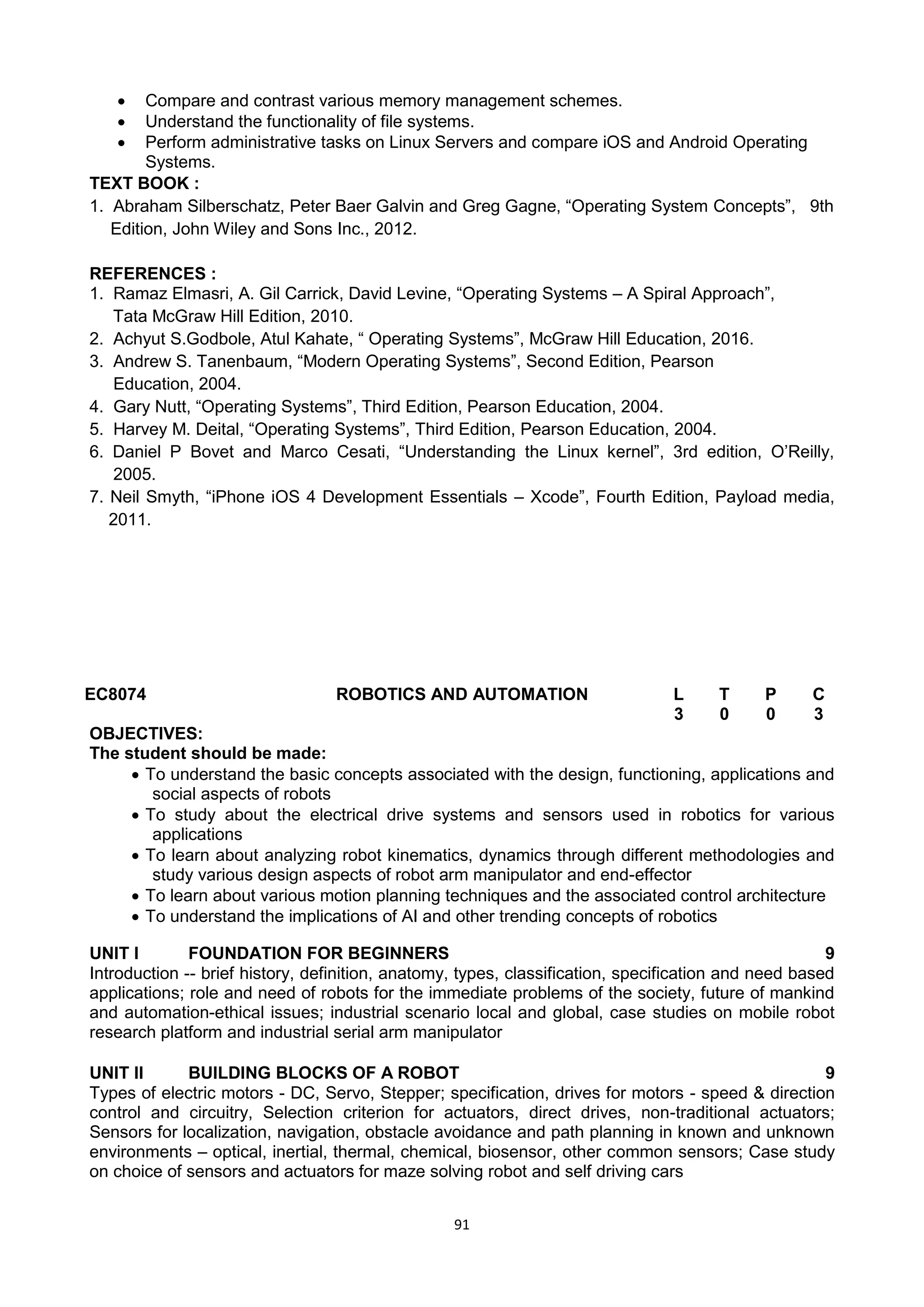
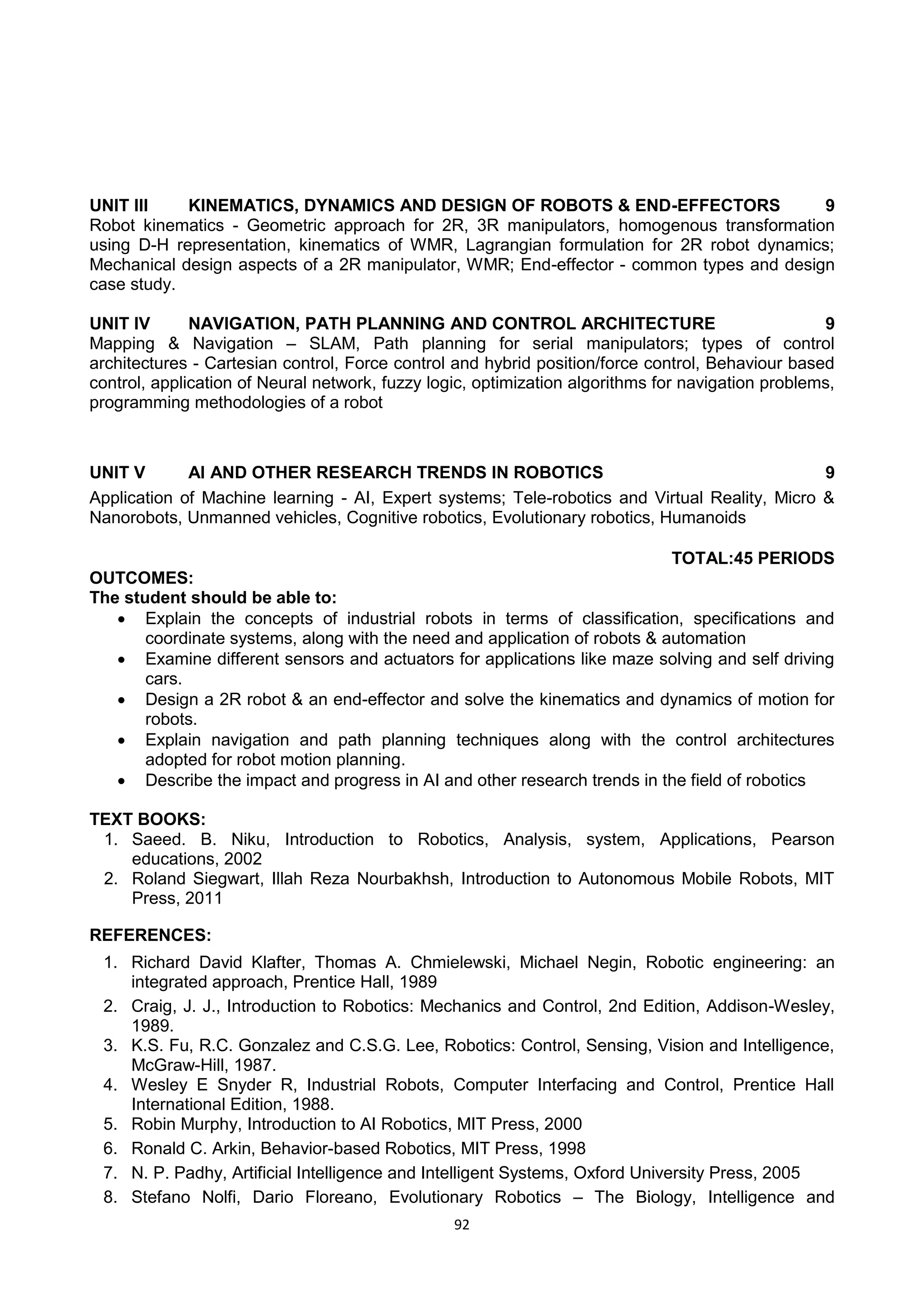
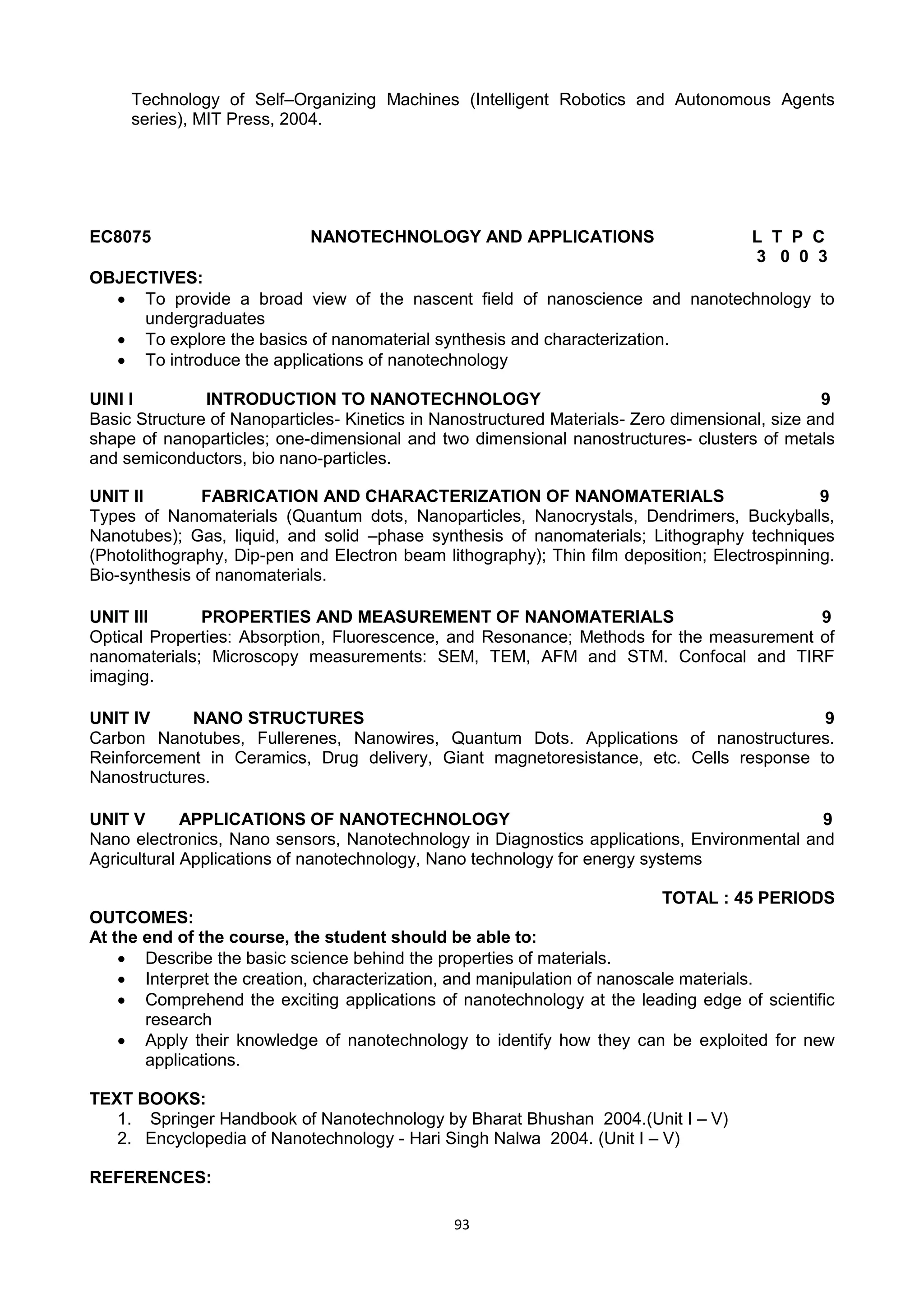
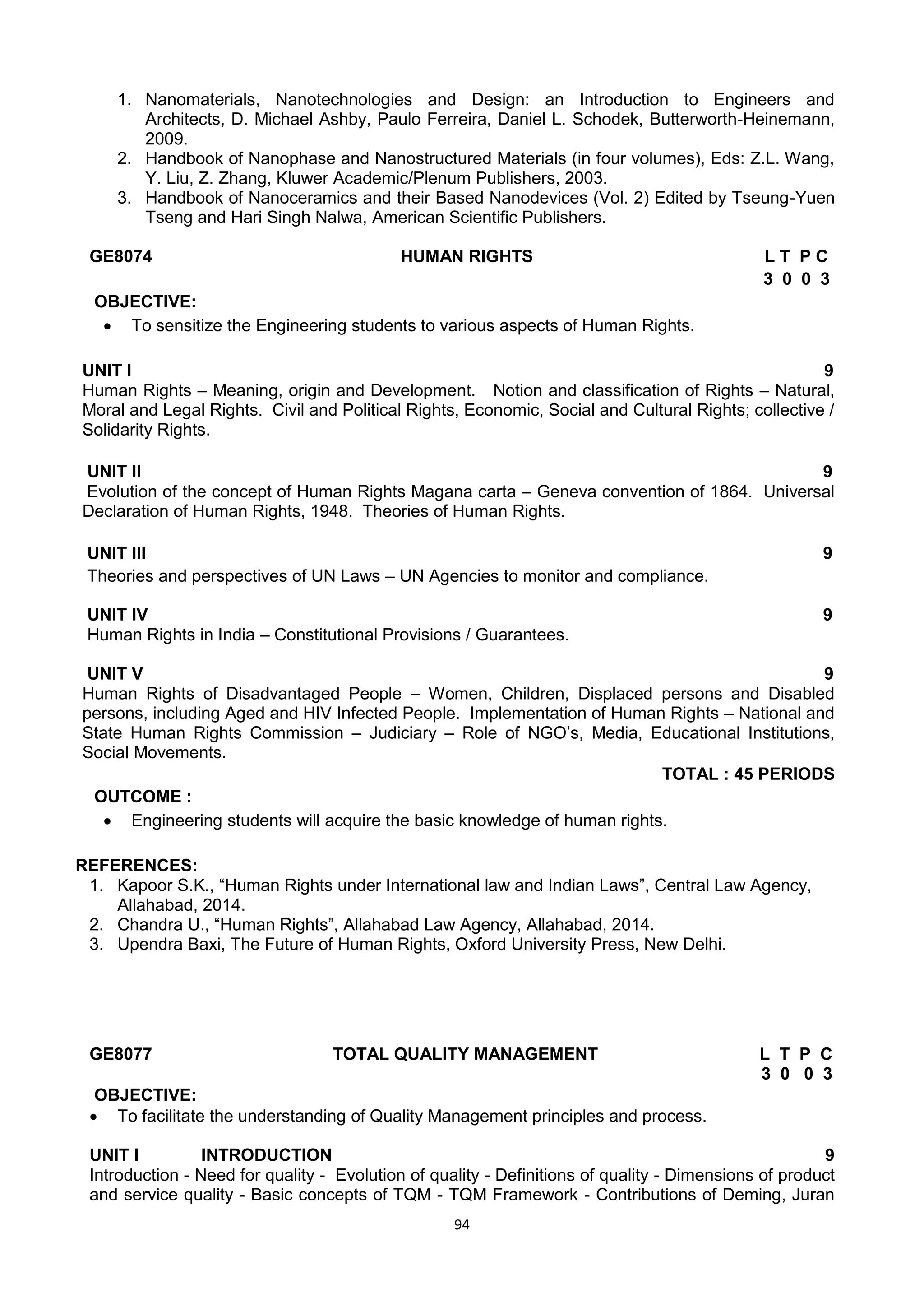
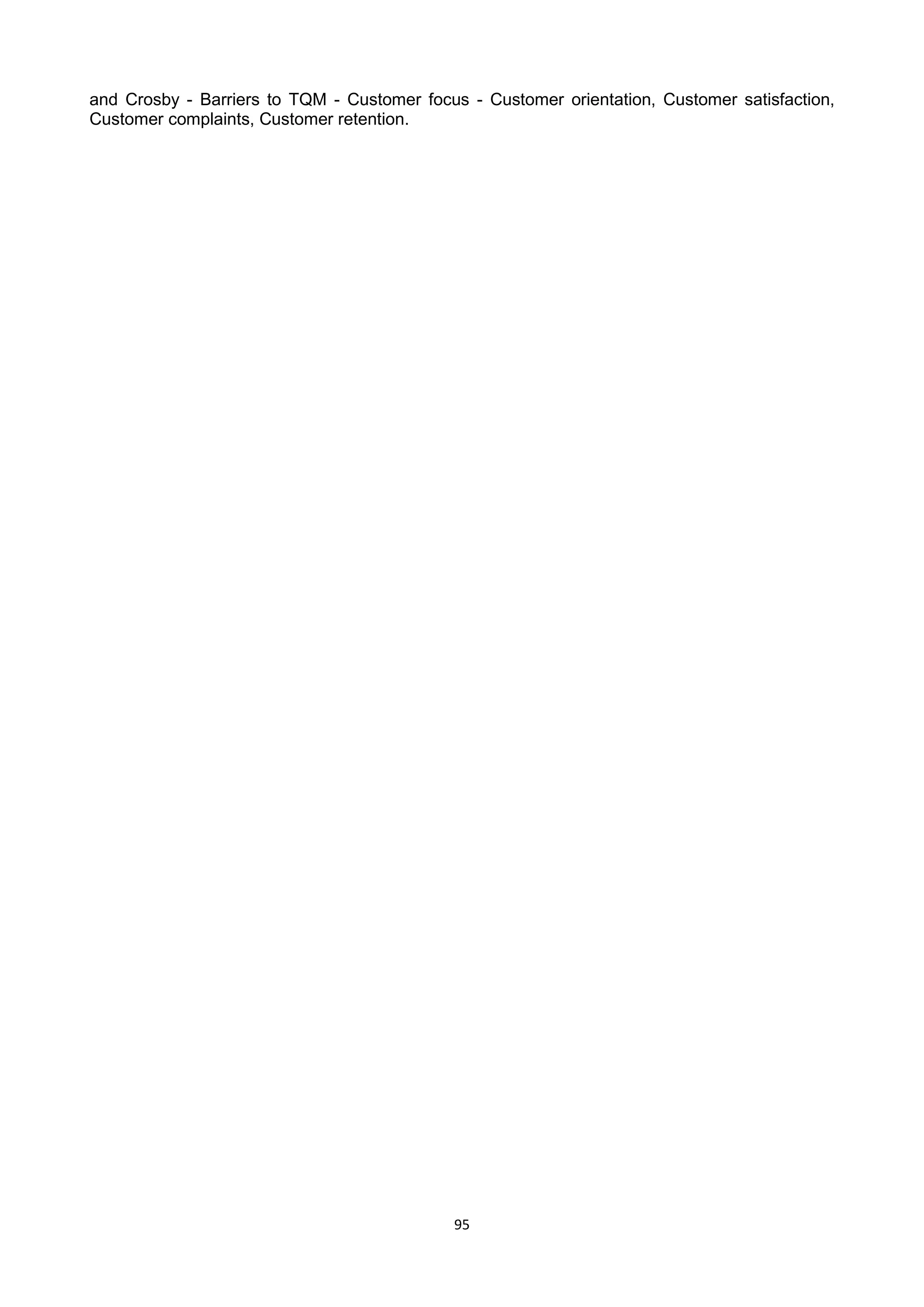
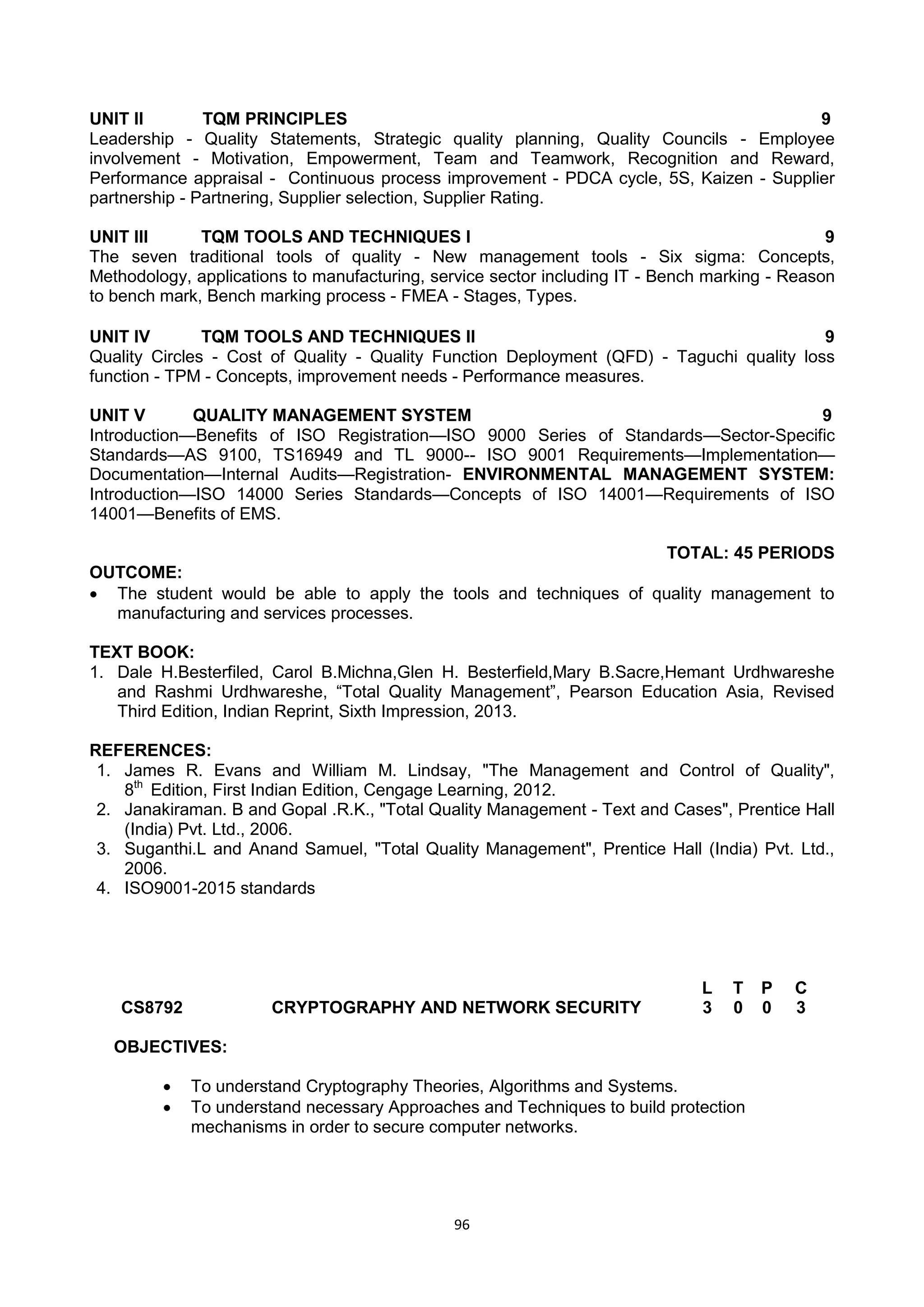
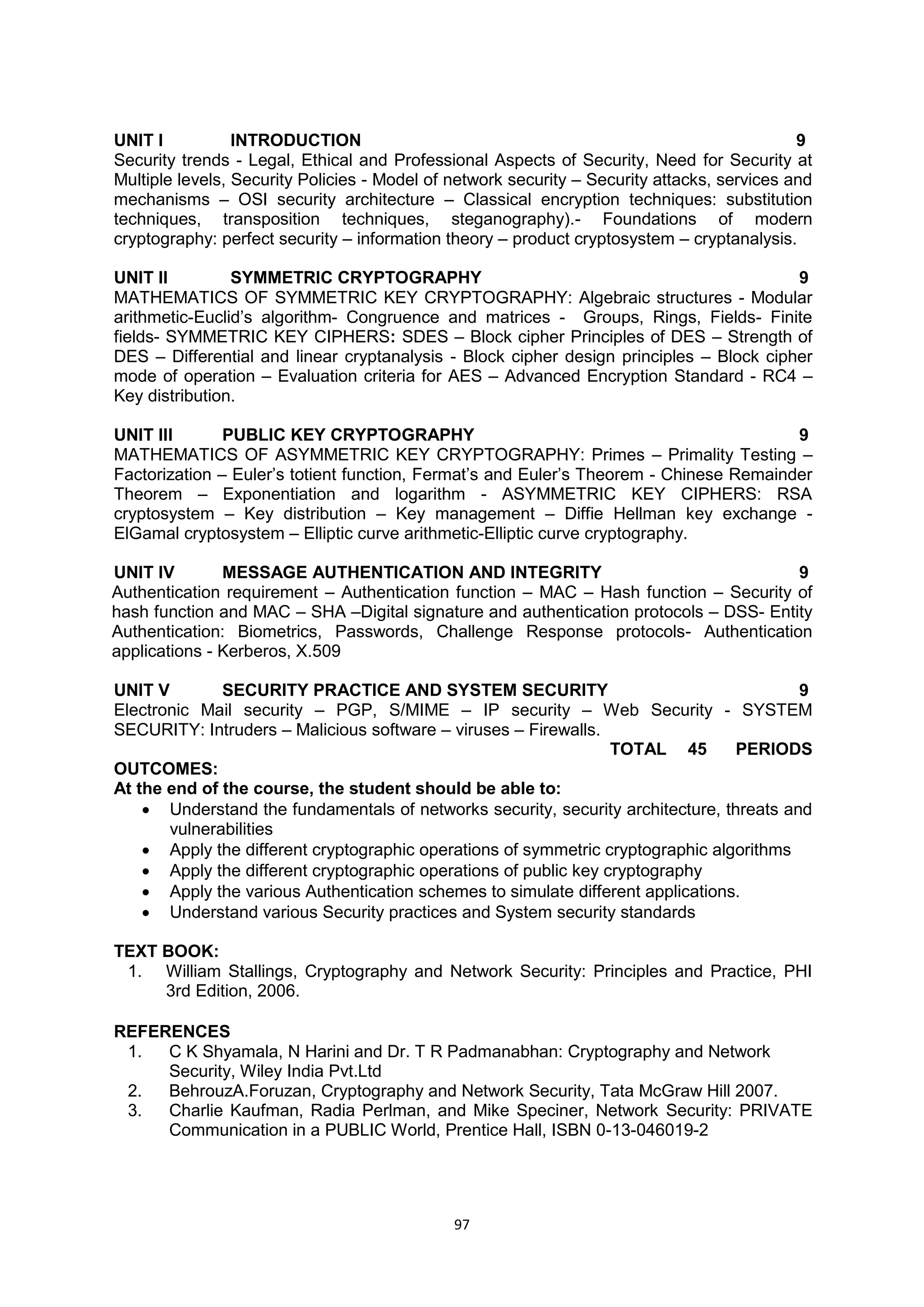
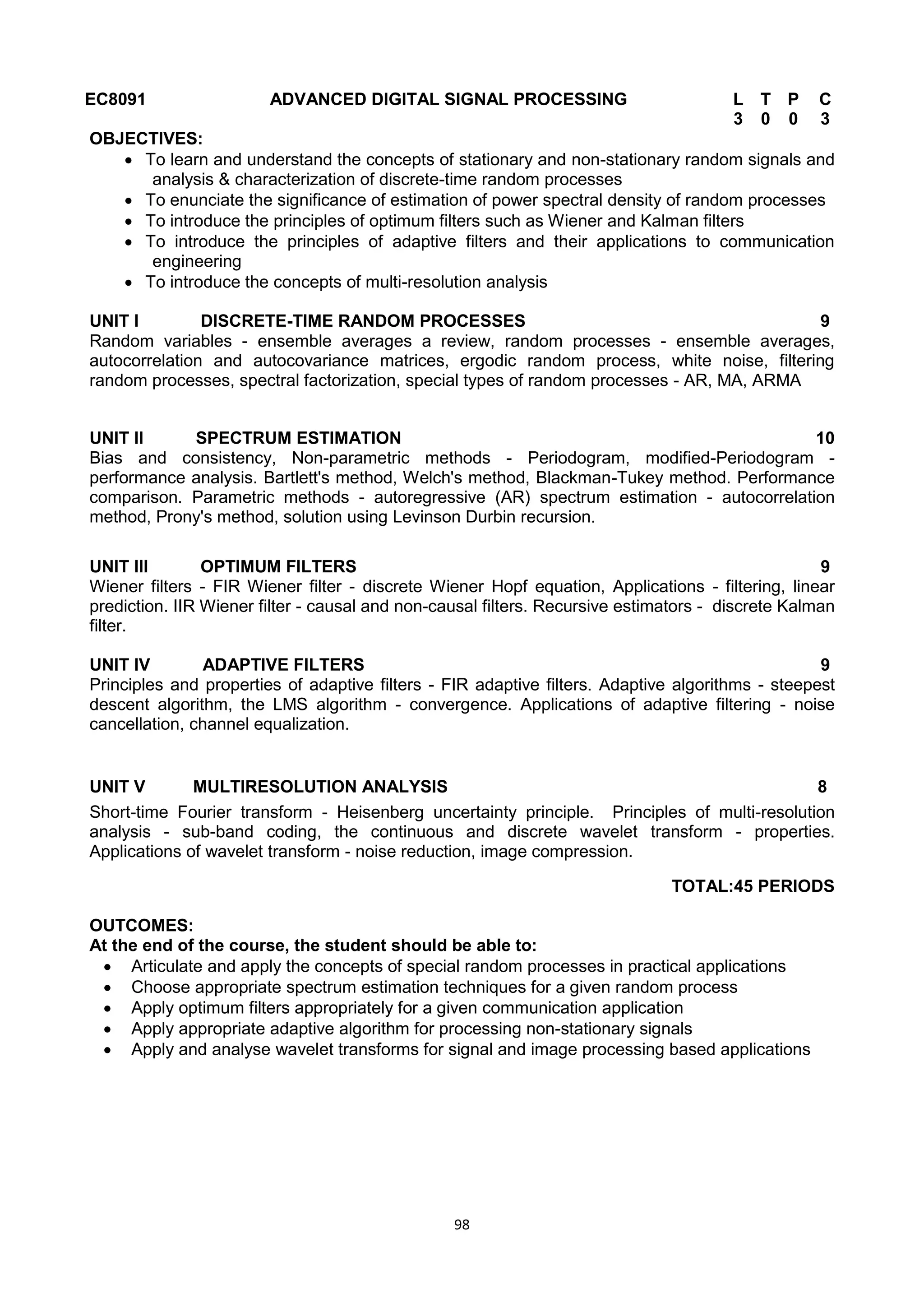
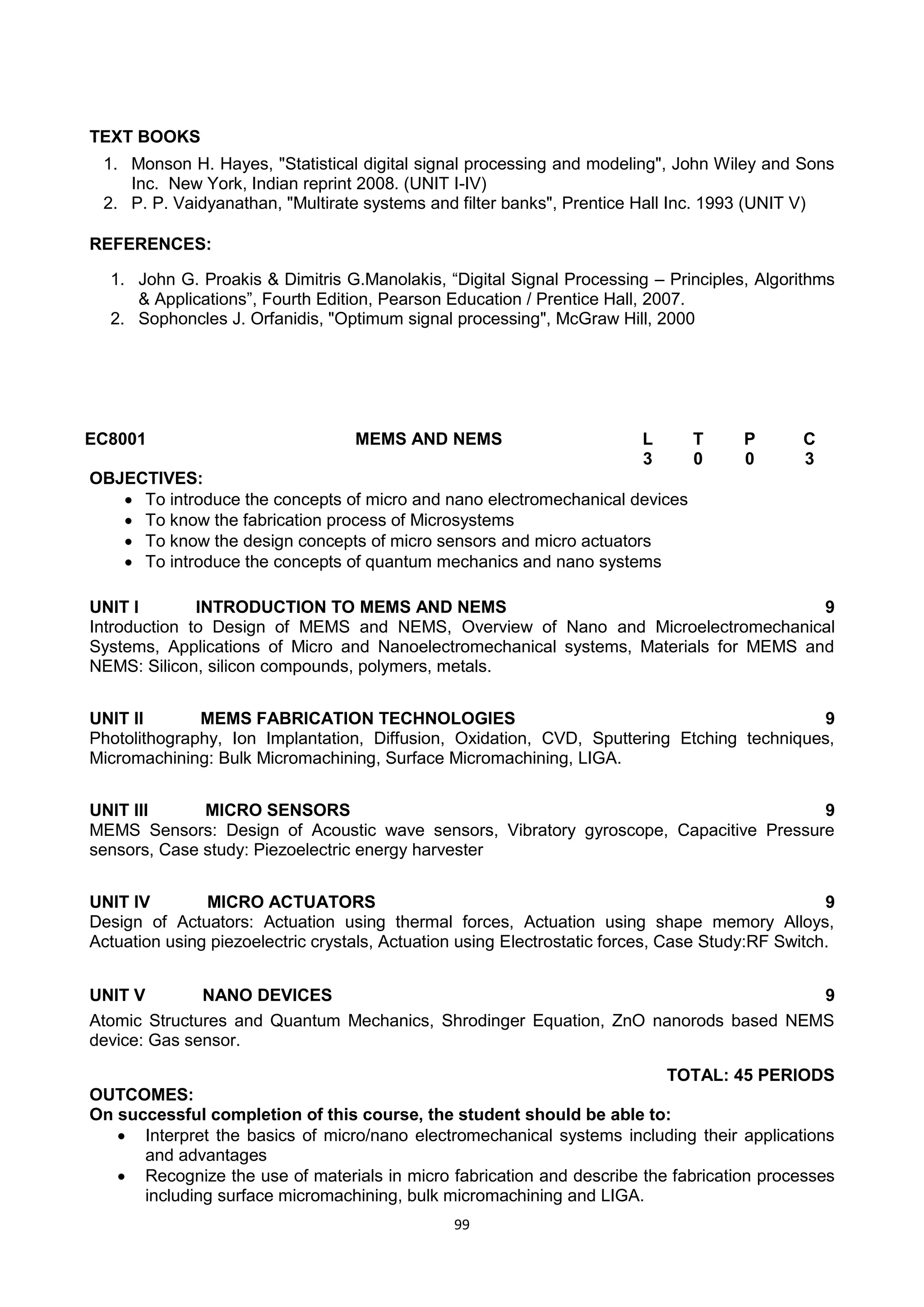
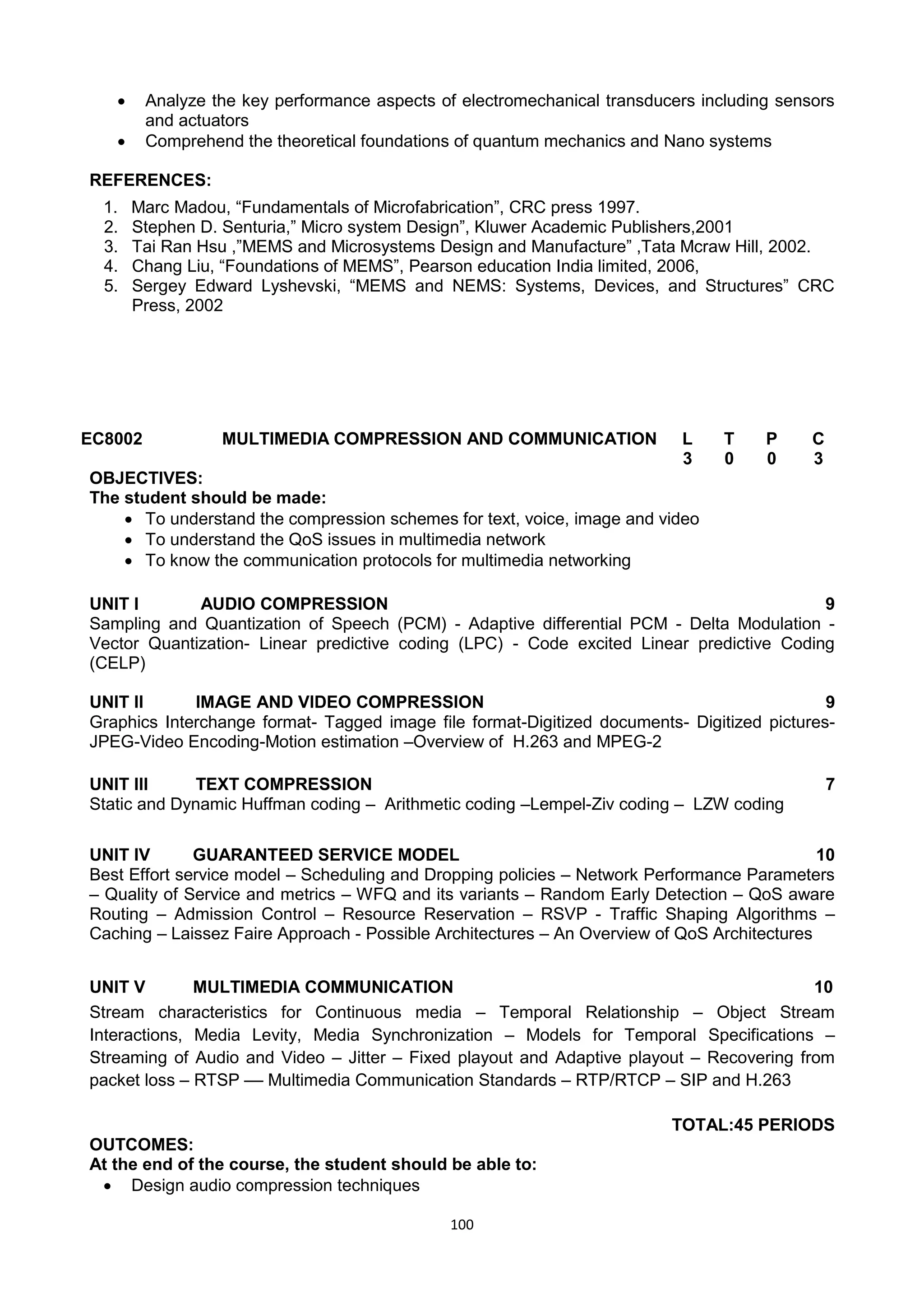
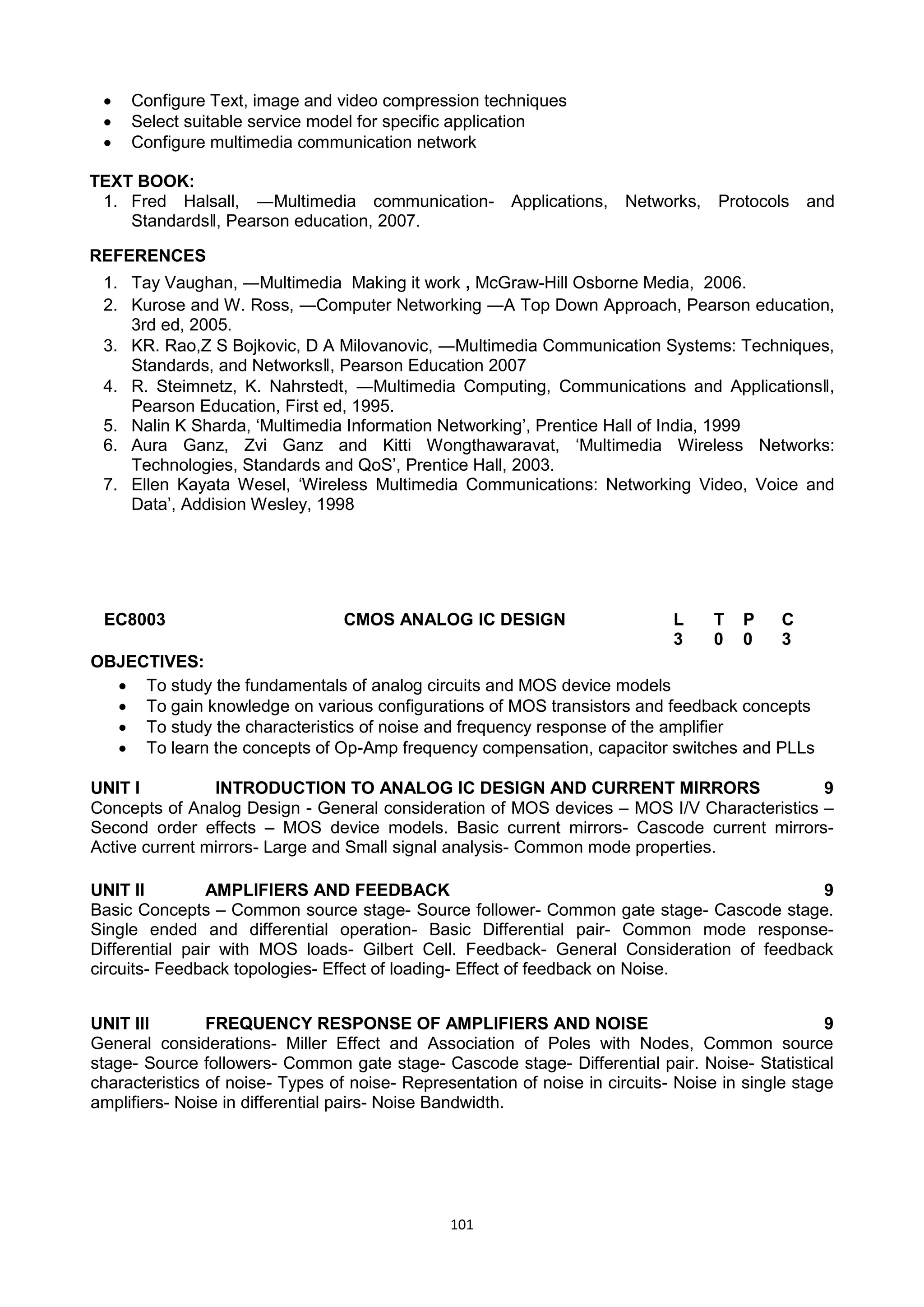
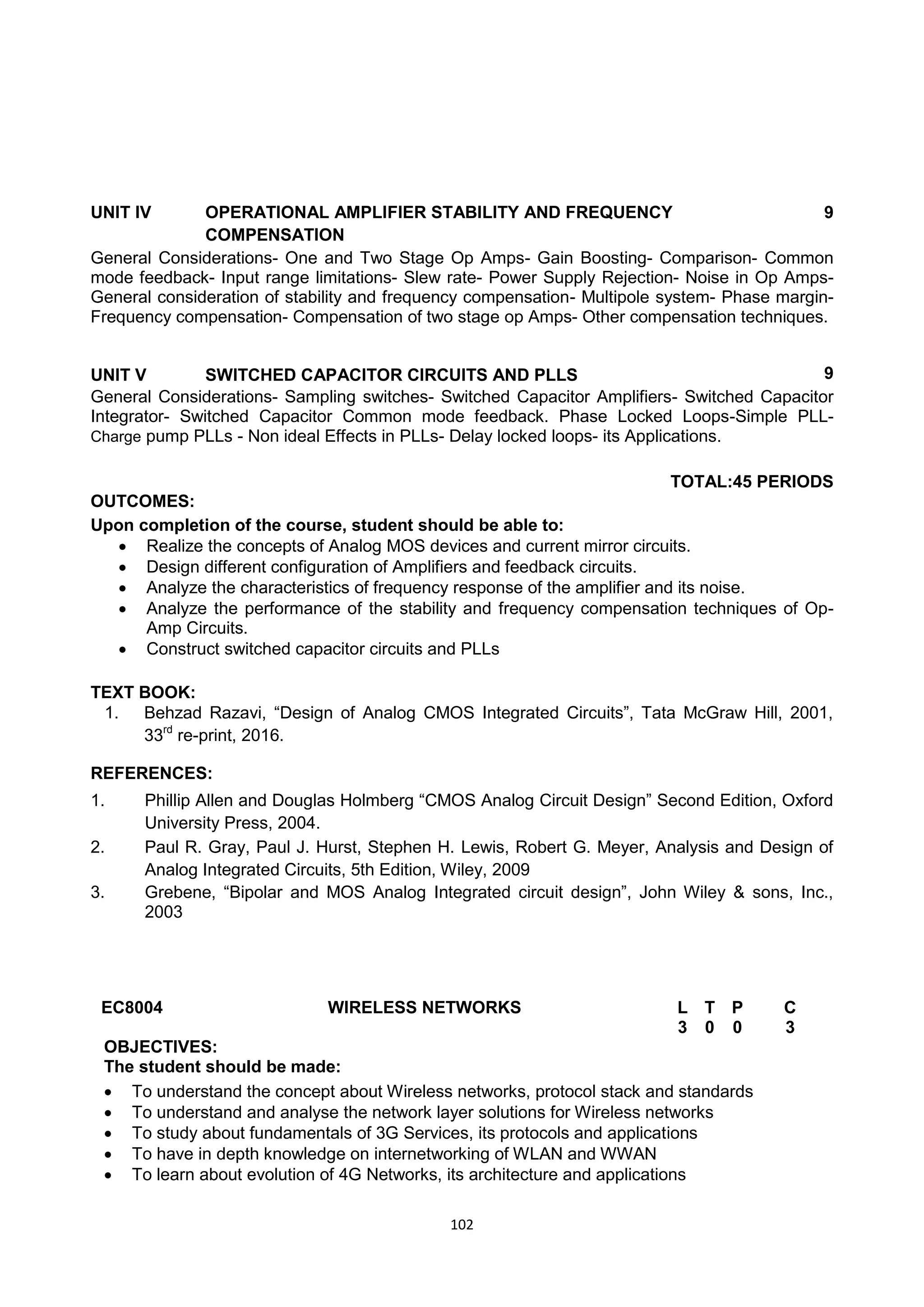
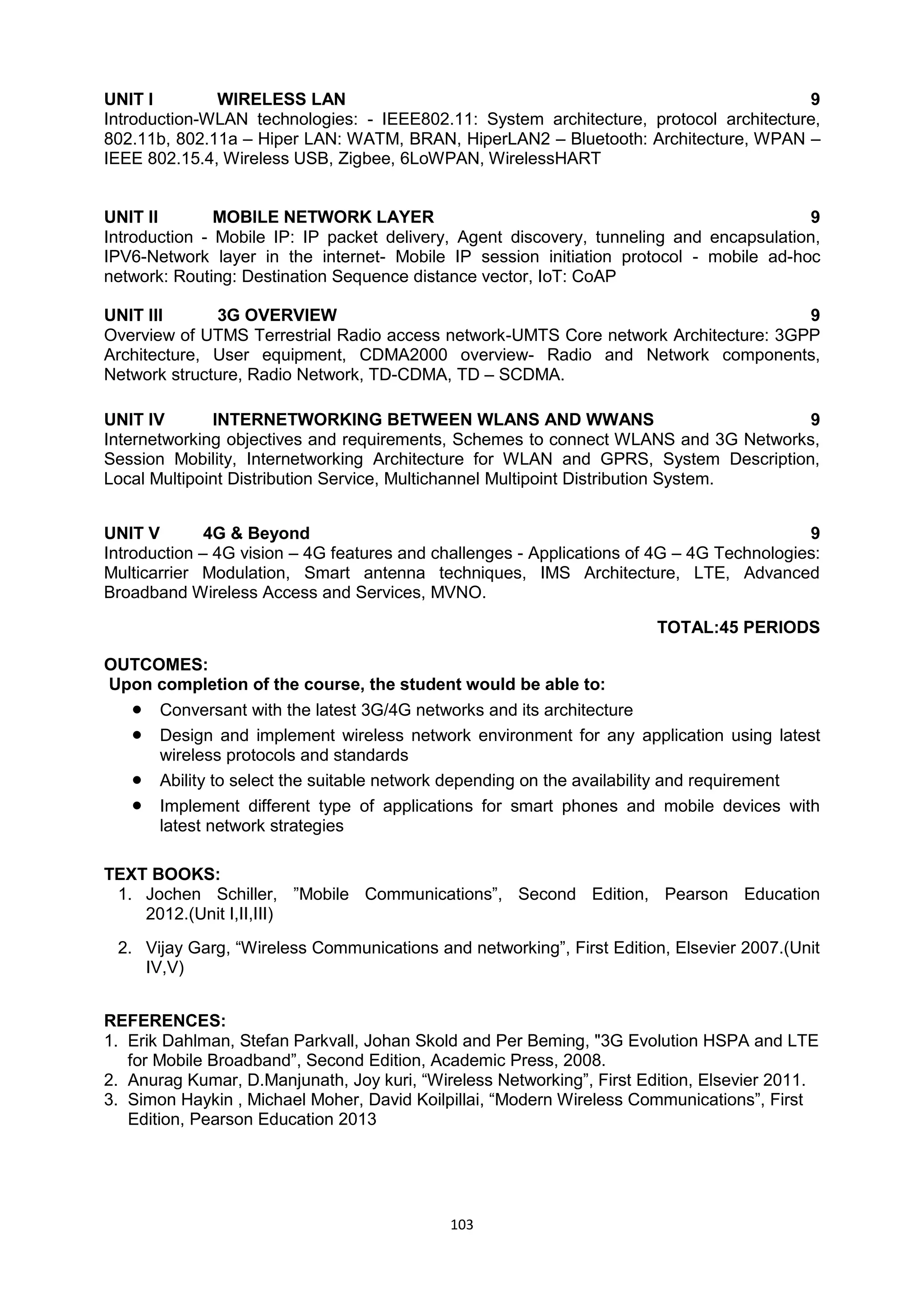

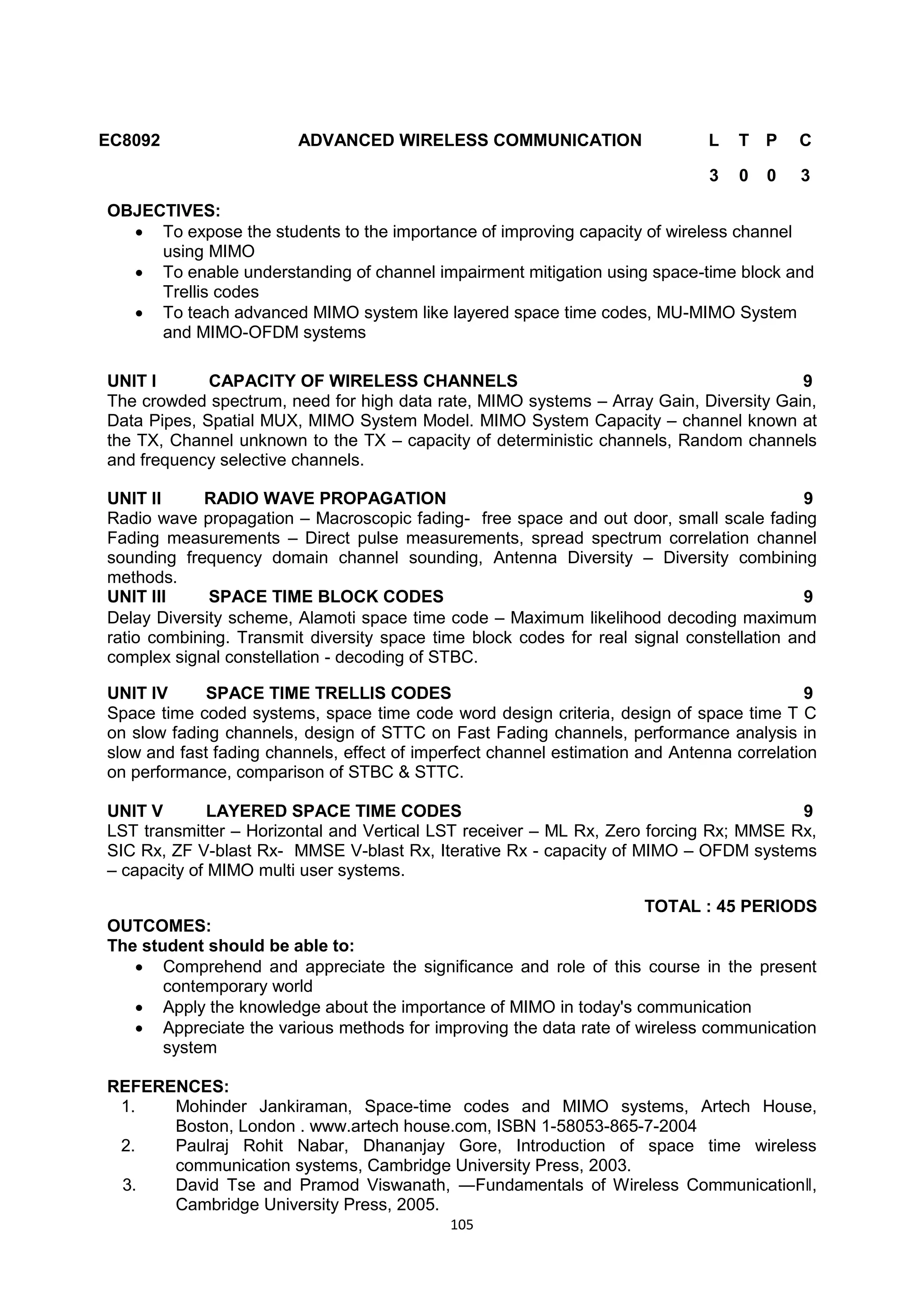
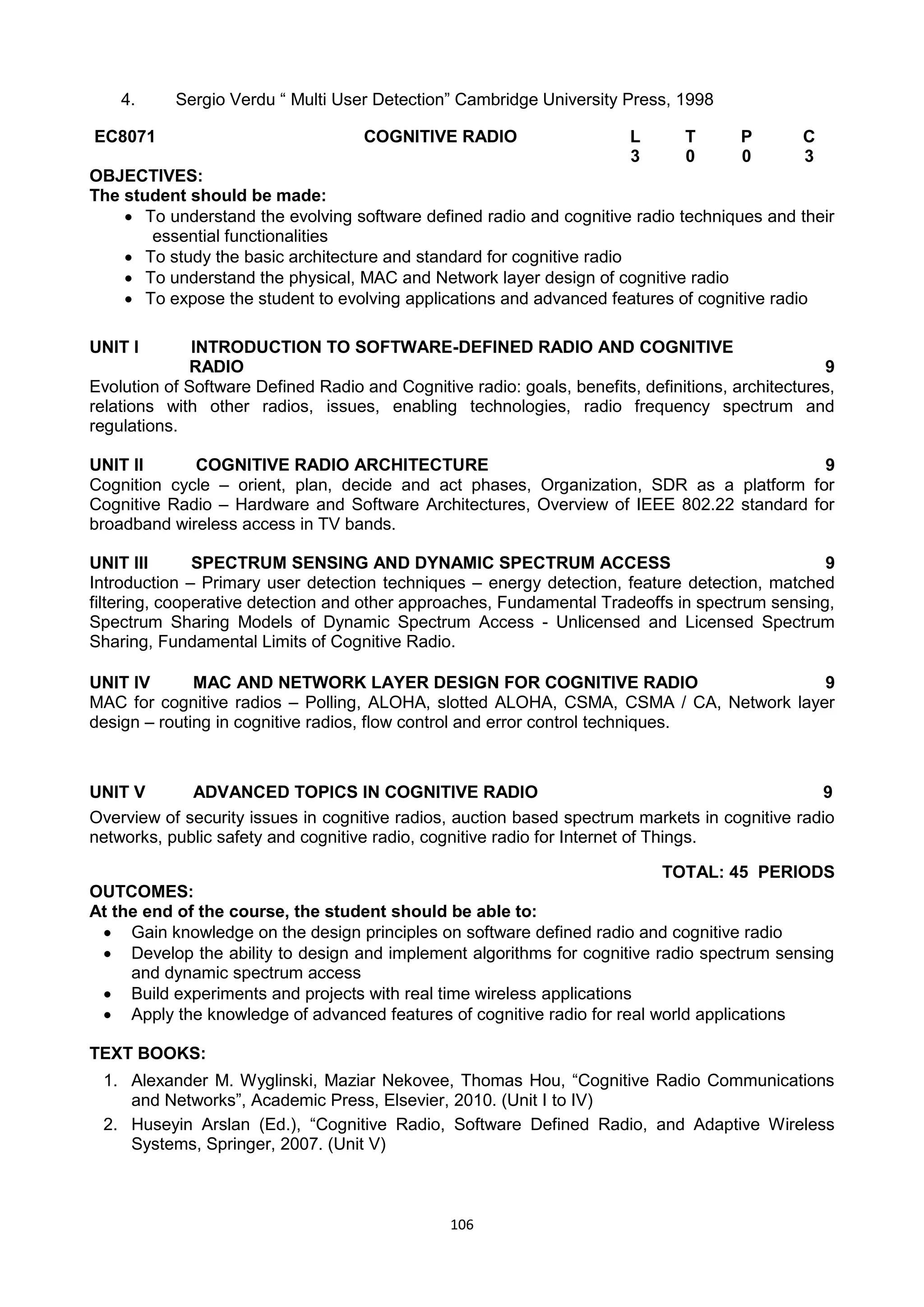
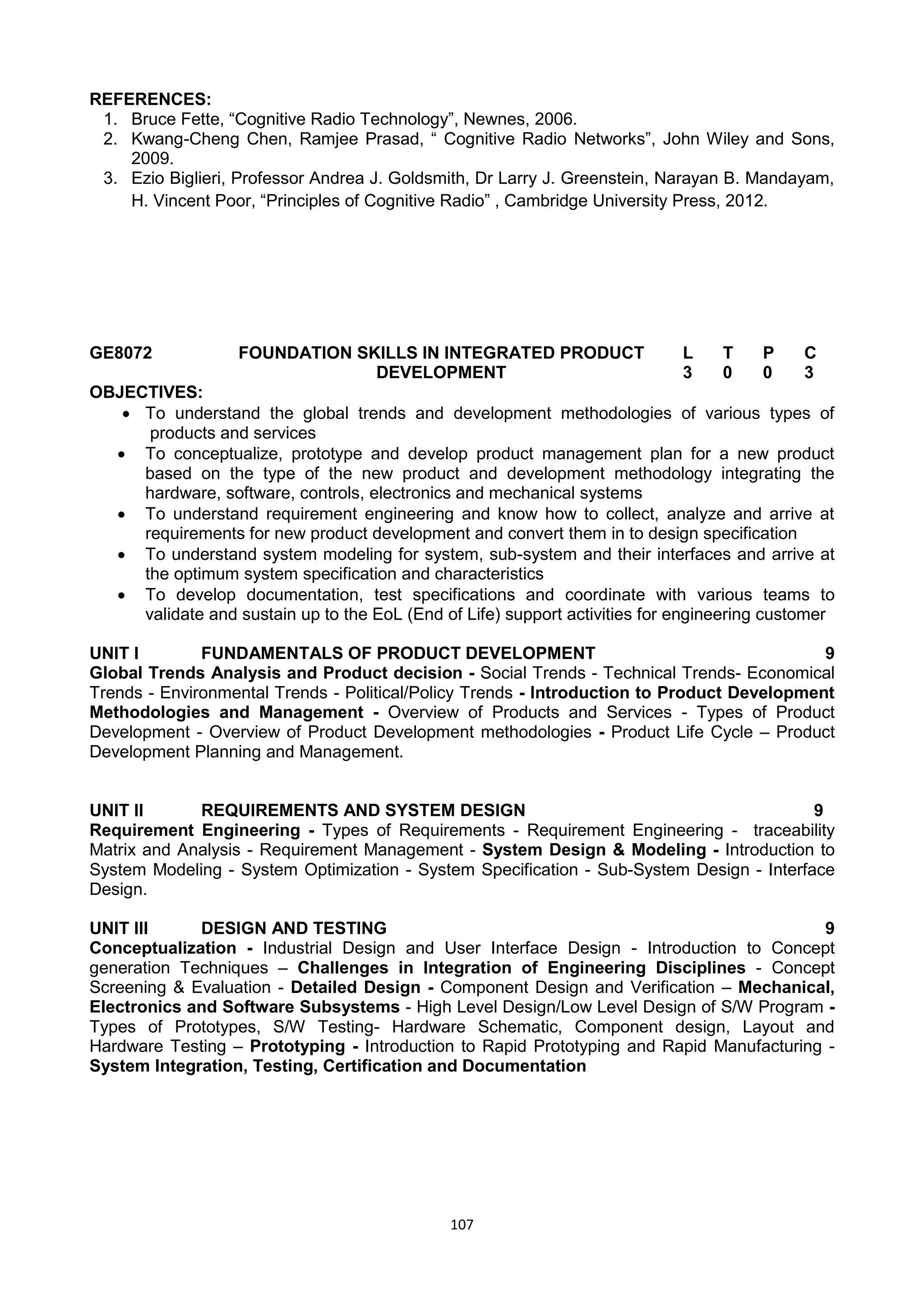
![108
UNIT IV SUSTENANCE ENGINEERING AND END-OF-LIFE (EOL) SUPPORT 9
Introduction to Product verification processes and stages - Introduction to Product Validation
processes and stages - Product Testing Standards and Certification - Product Documentation -
Sustenance -Maintenance and Repair – Enhancements - Product EoL - Obsolescence
Management – Configuration Management - EoL Disposal
UNIT V BUSINESS DYNAMICS – ENGINEERING SERVICES INDUSTRY 9
The Industry - Engineering Services Industry - Product Development in Industry versus
Academia –The IPD Essentials - Introduction to Vertical Specific Product Development
processes -Manufacturing/Purchase and Assembly of Systems - Integration of Mechanical,
Embedded and Software Systems – Product Development Trade-offs - Intellectual Property
Rights and Confidentiality – Security and Configuration Management.
TOTAL: 45 PERIODS
OUTCOMES:
Upon completion of the course, the students will be able to:
Define, formulate and analyze a problem
Solve specific problems independently or as part of a team
Gain knowledge of the Innovation & Product Development process in the Business
Context
Work independently as well as in teams
Manage a project from start to finish
TEXTBOOKS:
1. Book specially prepared by NASSCOM as per the MoU.
2. Karl T Ulrich and Stephen D Eppinger, "Product Design and Development", Tata McGraw
Hill, Fifth Edition, 2011.
3. John W Newstorm and Keith Davis, "Organizational Behavior", Tata McGraw Hill,
Eleventh Edition, 2005.
REFERENCES:
1. Hiriyappa B, ―Corporate Strategy – Managing the Business‖, Author House, 2013.
2. Peter F Drucker, ―People and Performance‖, Butterworth – Heinemann [Elsevier], Oxford,
2004.
3. Vinod Kumar Garg and Venkita Krishnan N K, ―Enterprise Resource Planning –
Concepts‖, Second Edition, Prentice Hall, 2003.
4. Mark S Sanders and Ernest J McCormick, "Human Factors in Engineering and Design",
McGraw Hill Education, Seventh Edition, 2013
CS8082 MACHINE LEARNING TECHNIQUES L T P C
3 0 0 3
OBJECTIVES:
To understand the need for machine learning for various problem solving
To study the various supervised, semi-supervised and unsupervised learning algorithms in
machine learning
To learn the new approaches in machine learning
To design appropriate machine learning algorithms for problem solving
UNIT I INTRODUCTION 9
Learning Problems – Perspectives and Issues – Concept Learning – Version Spaces and
Candidate Eliminations – Inductive bias – Decision Tree learning – Representation – Algorithm –
Heuristic Space Search.](https://image.slidesharecdn.com/2017regecesyllabus-190206071001/75/2017-reg-ece-syllabus-108-2048.jpg)
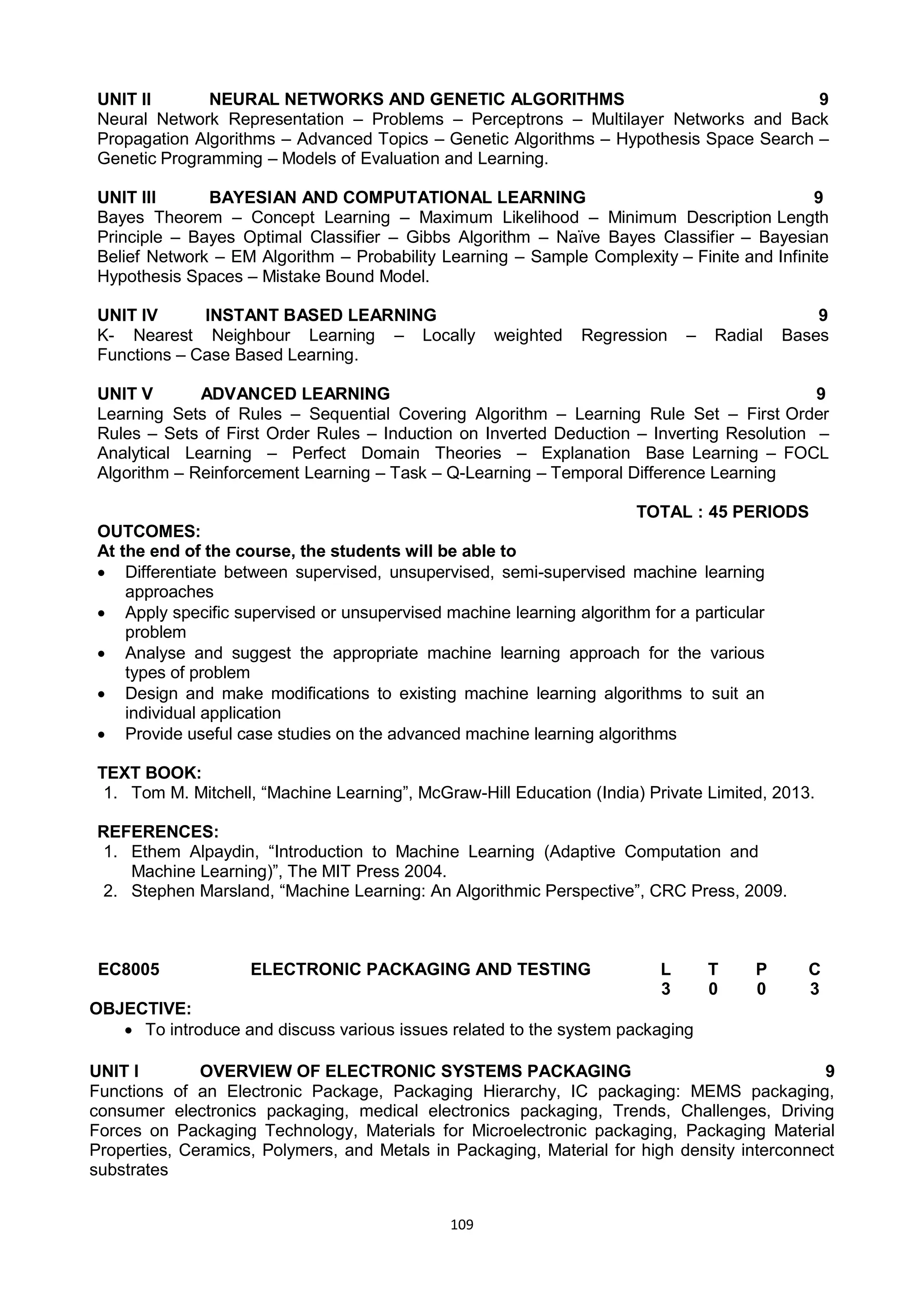
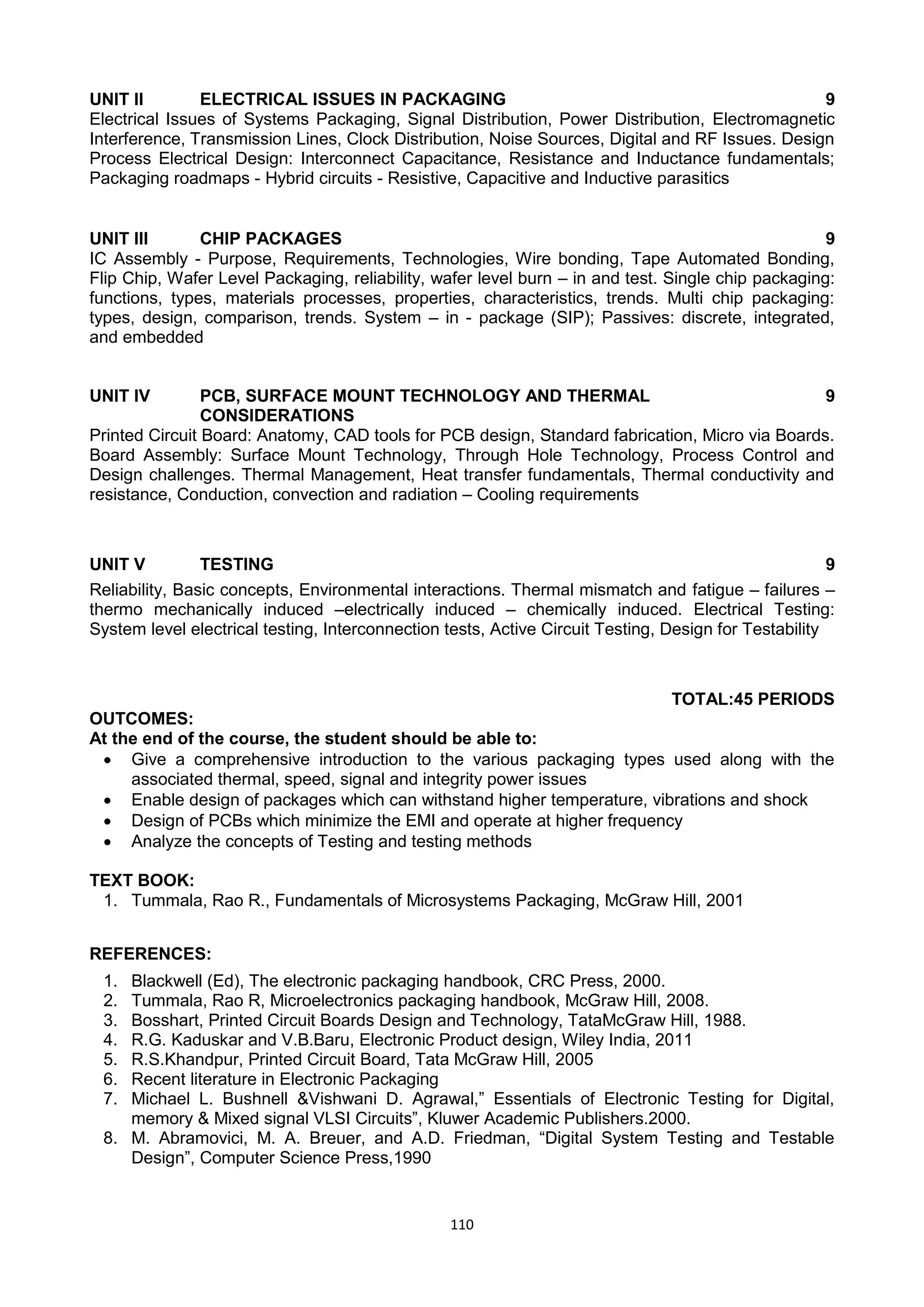
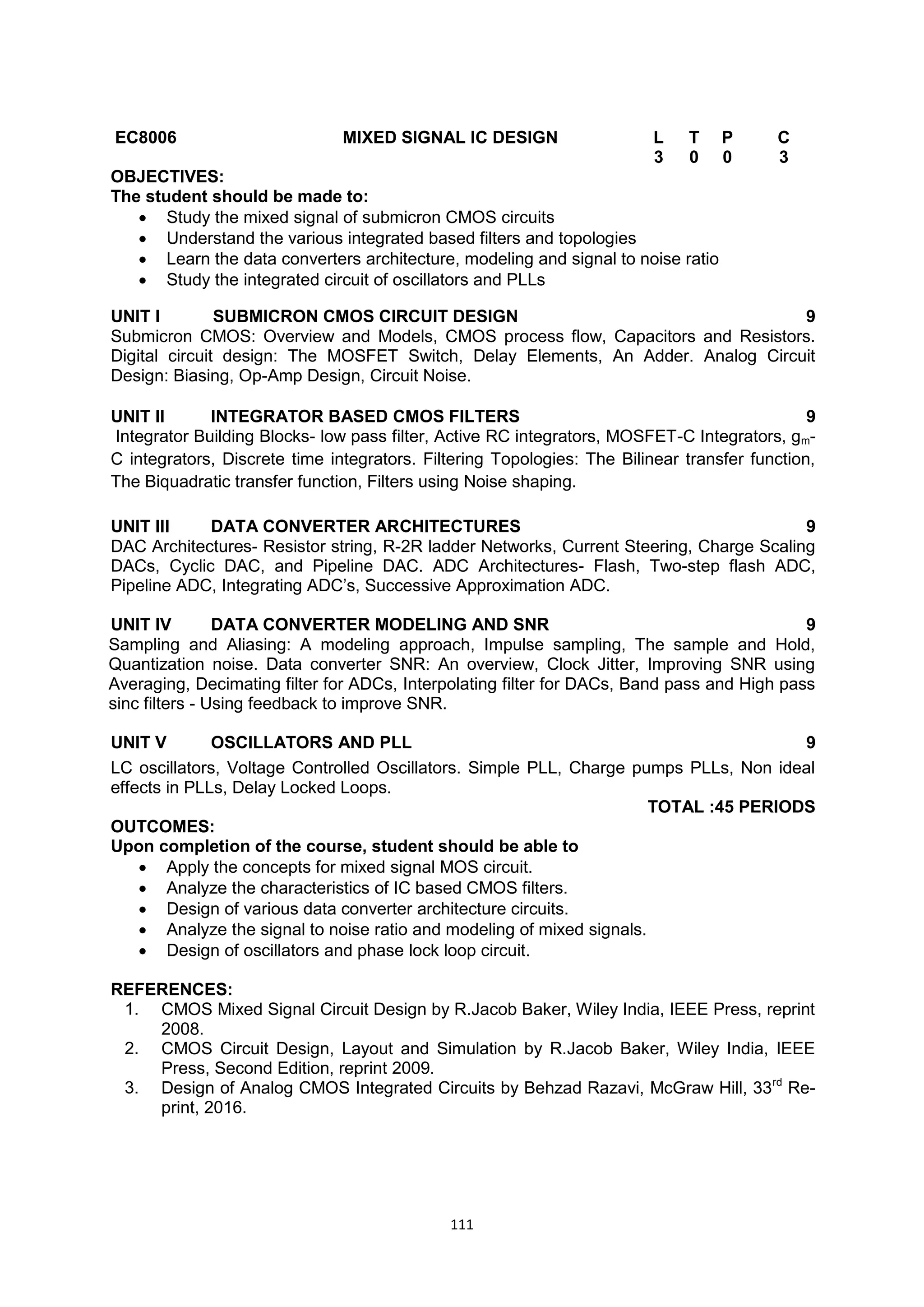
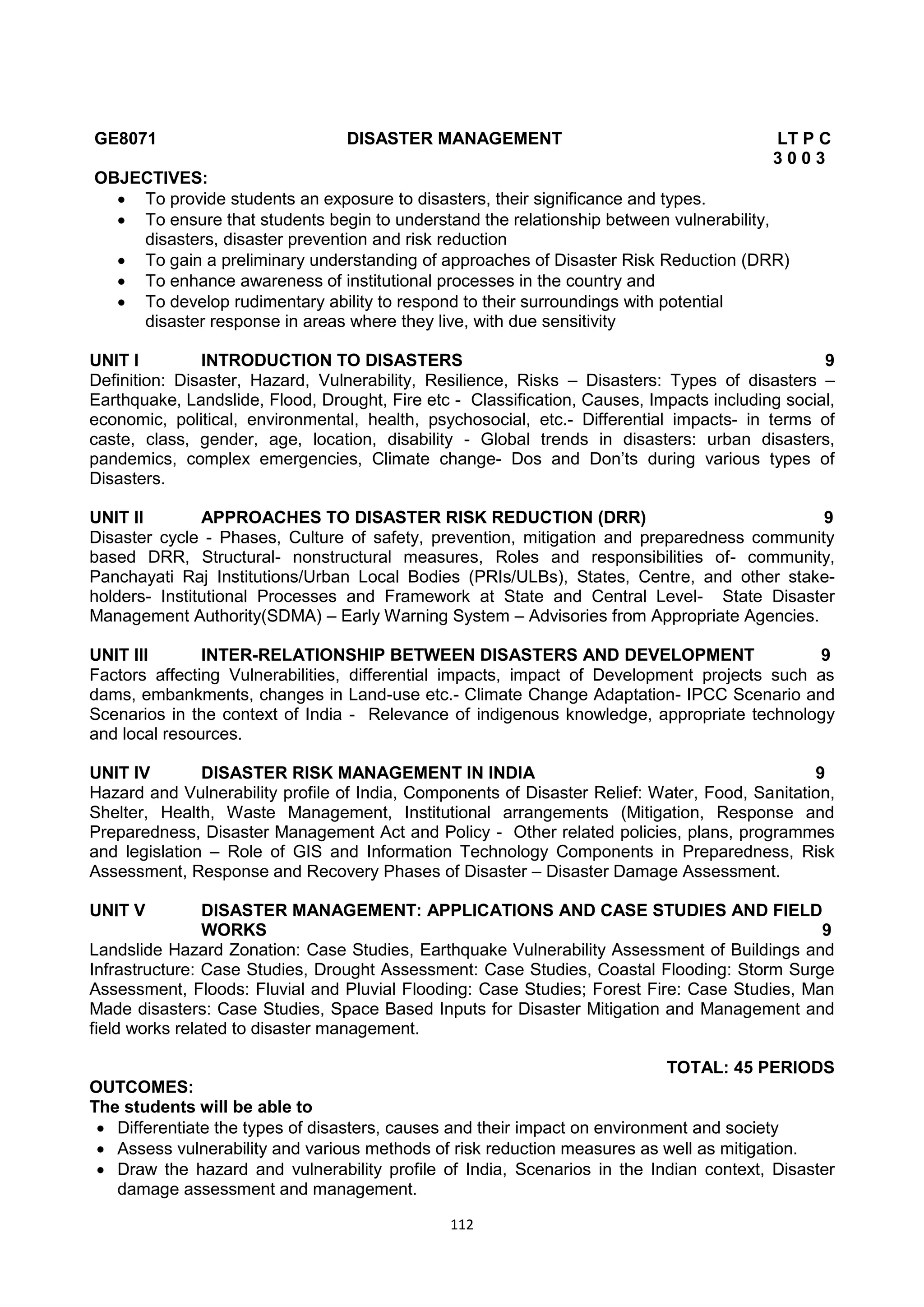

![114
TEXTBOOKS:
1. Singhal J.P. ―Disaster Management‖, Laxmi Publications, 2010. ISBN-10: 9380386427 ISBN-
13: 978-9380386423
2. Tushar Bhattacharya, ―Disaster Science and Management‖, McGraw Hill India Education Pvt.
Ltd., 2012. ISBN-10: 1259007367, ISBN-13: 978-1259007361]
3. Gupta Anil K, Sreeja S. Nair. Environmental Knowledge for Disaster Risk Management, NIDM,
New Delhi, 2011
4. Kapur Anu Vulnerable India: A Geographical Study of Disasters, IIAS and Sage Publishers,
New Delhi, 2010.
REFERENCES:
1. Govt. of India: Disaster Management Act , Government of India, New Delhi, 2005
2. Government of India, National Disaster Management Policy,2009.
EC8072 ELECTROMAGNETIC INTERFERENCE AND
COMPATIBILITY
L T P C
3 0 0 3
OBJECTIVES:
To introduce the basic concepts of Electromagnetic Interference
To teach the importance of Electromagnetic Compatible designs
To explain the existing standards for Electromagnetic Compatibility
UNIT I EMI/EMC CONCEPTS 9
EMI-EMC definitions; Sources and Victims of EMI; Conducted and Radiated EMI Emission and
Susceptibility; Case Histories; Radiation Hazards to humans.
UNIT II EMI COUPLING PRINCIPLES 9
Conducted, radiated and transient coupling; Common ground impedance coupling; Common mode
and ground loop coupling; Differential mode coupling; Near field cable to cable coupling; Field to
cable coupling; Power mains and Power supply coupling; Transient EMI, ESD.
UNIT III EMI CONTROL 9
Shielding; EMI Filters; Grounding; Bonding; Isolation transformer; Transient suppressors; EMI
Suppression Cables.
UNIT IV EMC DESIGN FOR CIRCUITS AND PCBS 9
Noise from Relays and Switches; Nonlinearities in Circuits; Cross talk in transmission line and
cross talk control; Component selection and mounting; PCB trace impedance; Routing; Power
distribution decoupling; Zoning; Grounding; VIAs; Terminations.
UNIT V EMI MEASUREMENTS AND STANDARDS 9
Open area test site; TEM cell; EMI test shielded chamber and shielded ferrite lined anechoic
chamber; Line impedance stabilization networks; EMI Rx and spectrum analyzer; Civilian
standards - CISPR, FCC, IEC, EN; Military standards-MIL461E/462.
TOTAL:45 PERIODS
OUTCOMES:
At the end of the course, the student should be able to:](https://image.slidesharecdn.com/2017regecesyllabus-190206071001/75/2017-reg-ece-syllabus-114-2048.jpg)
